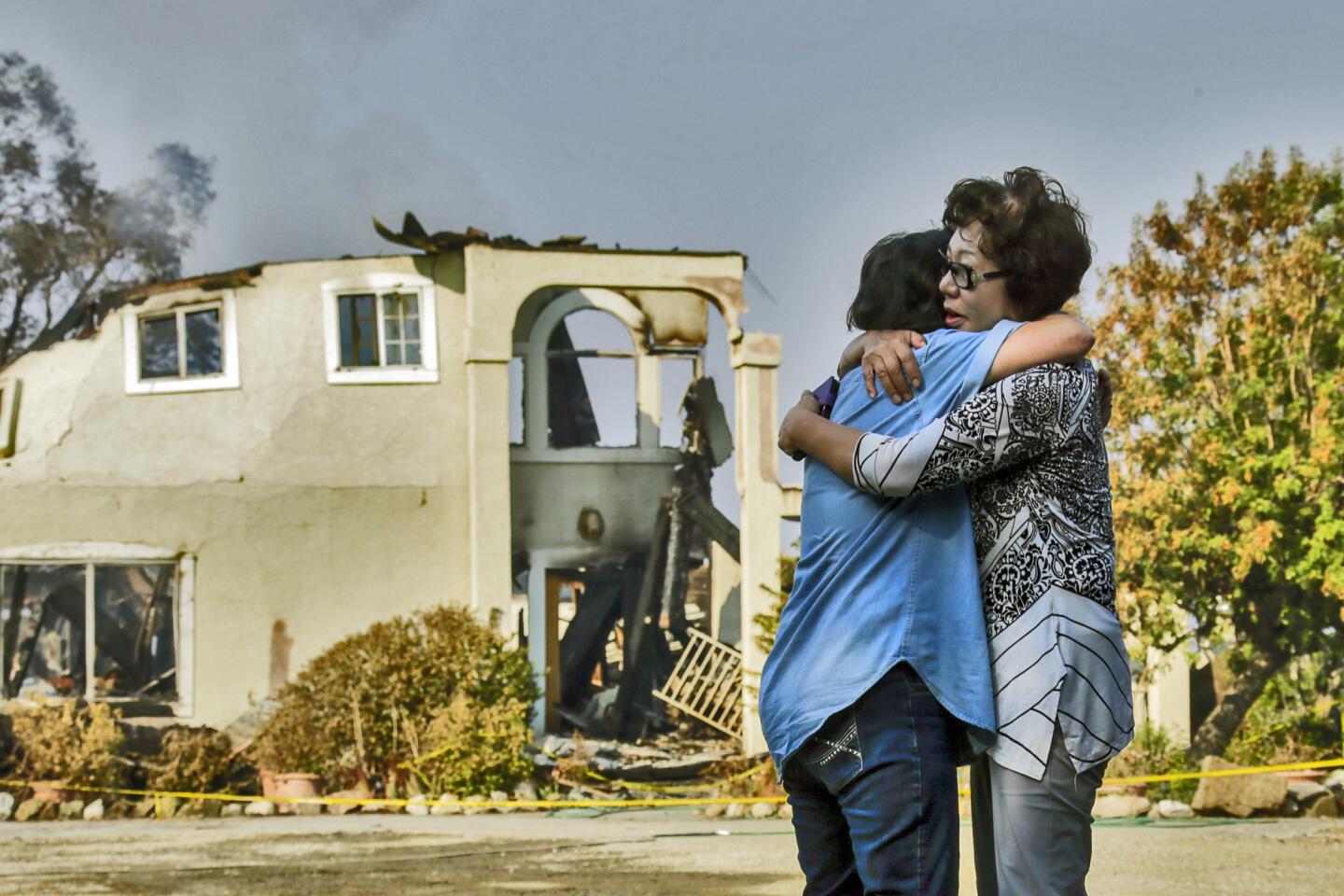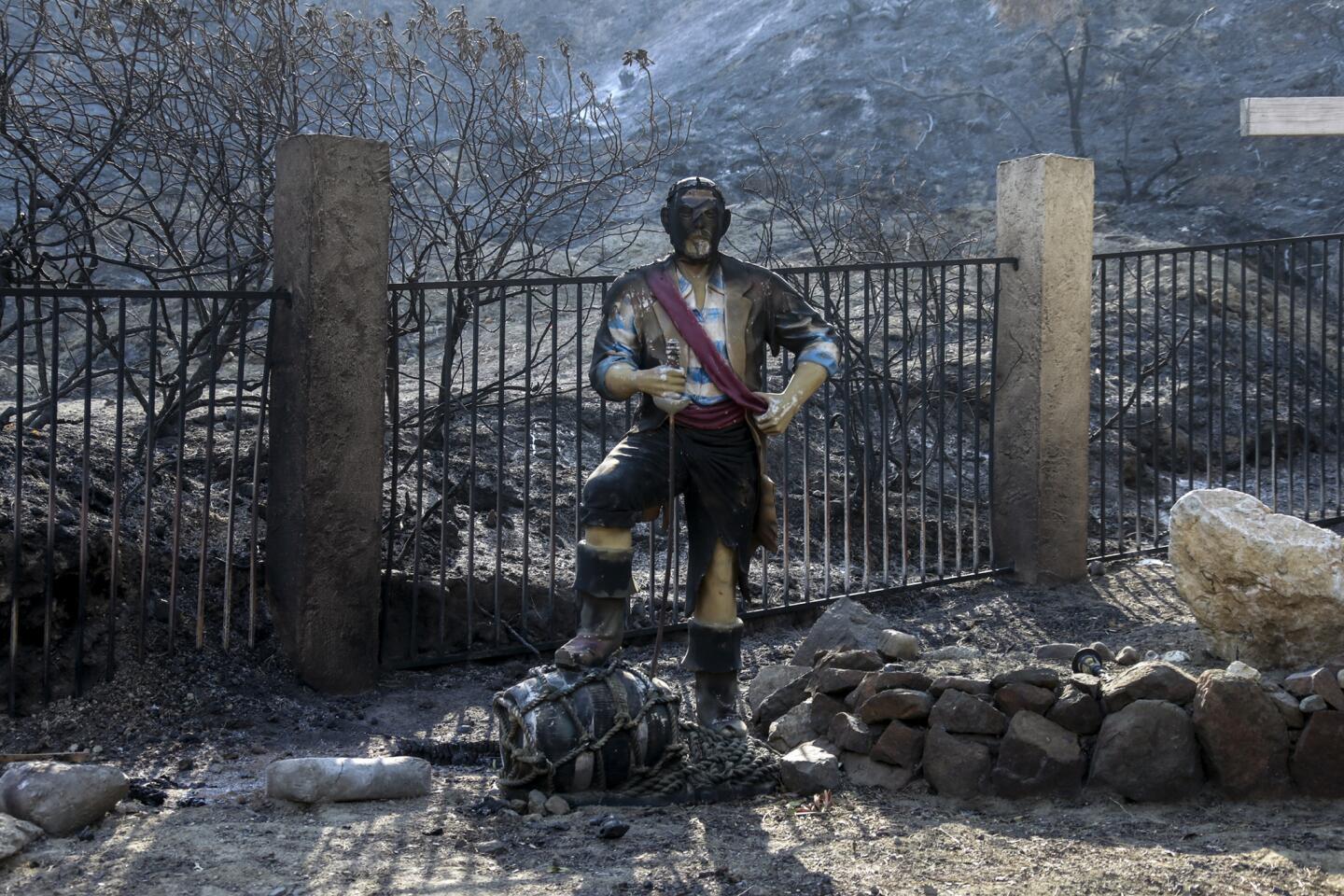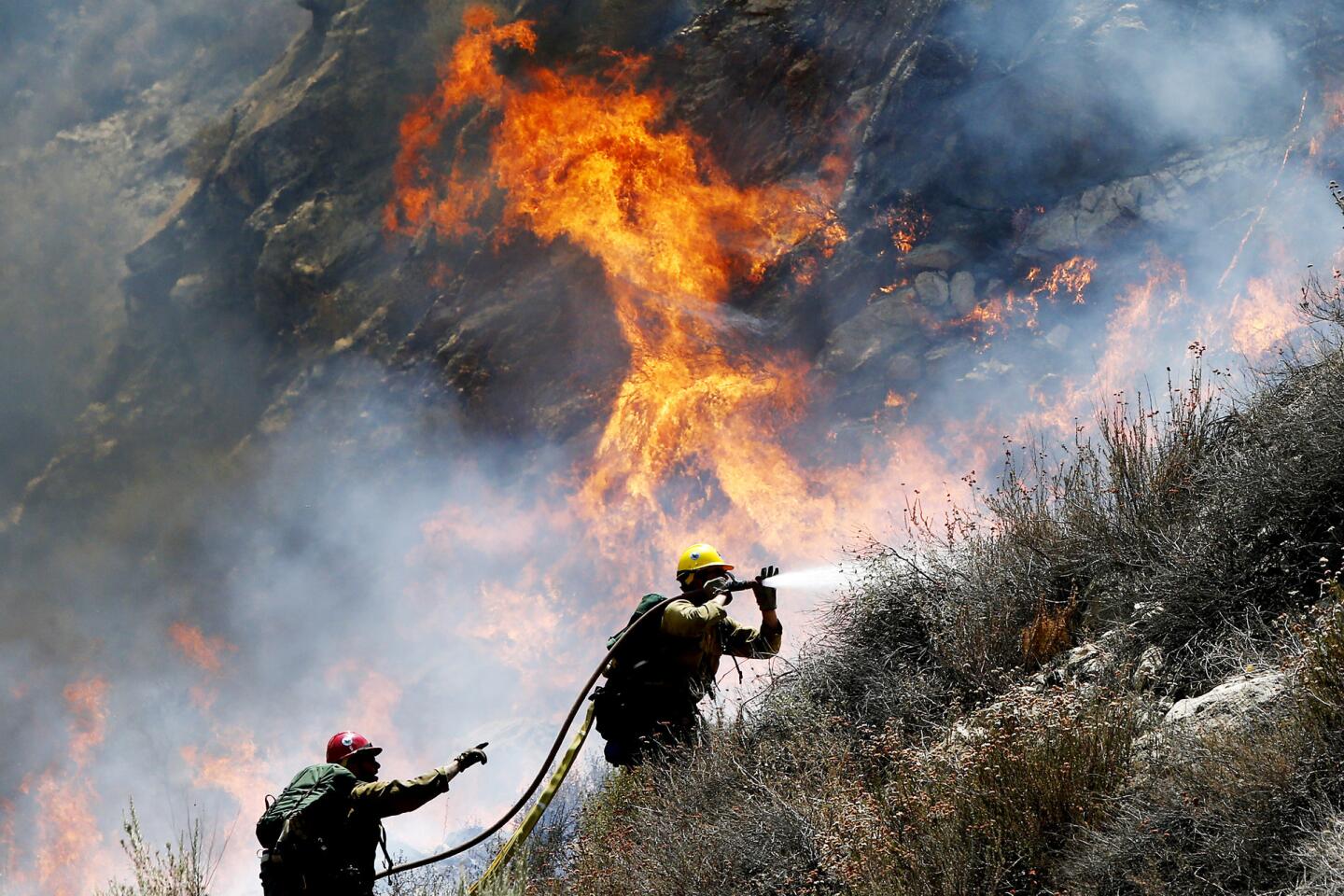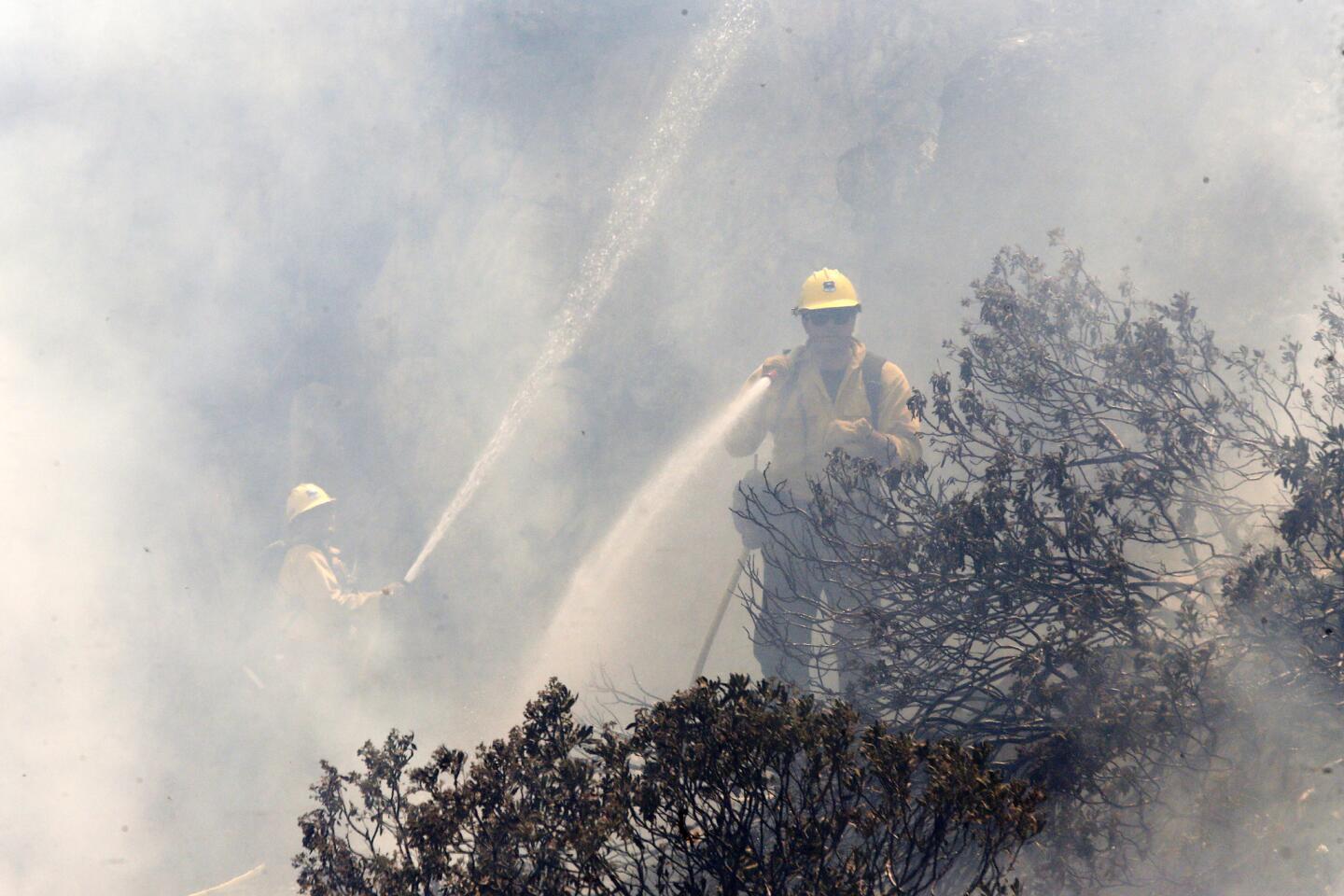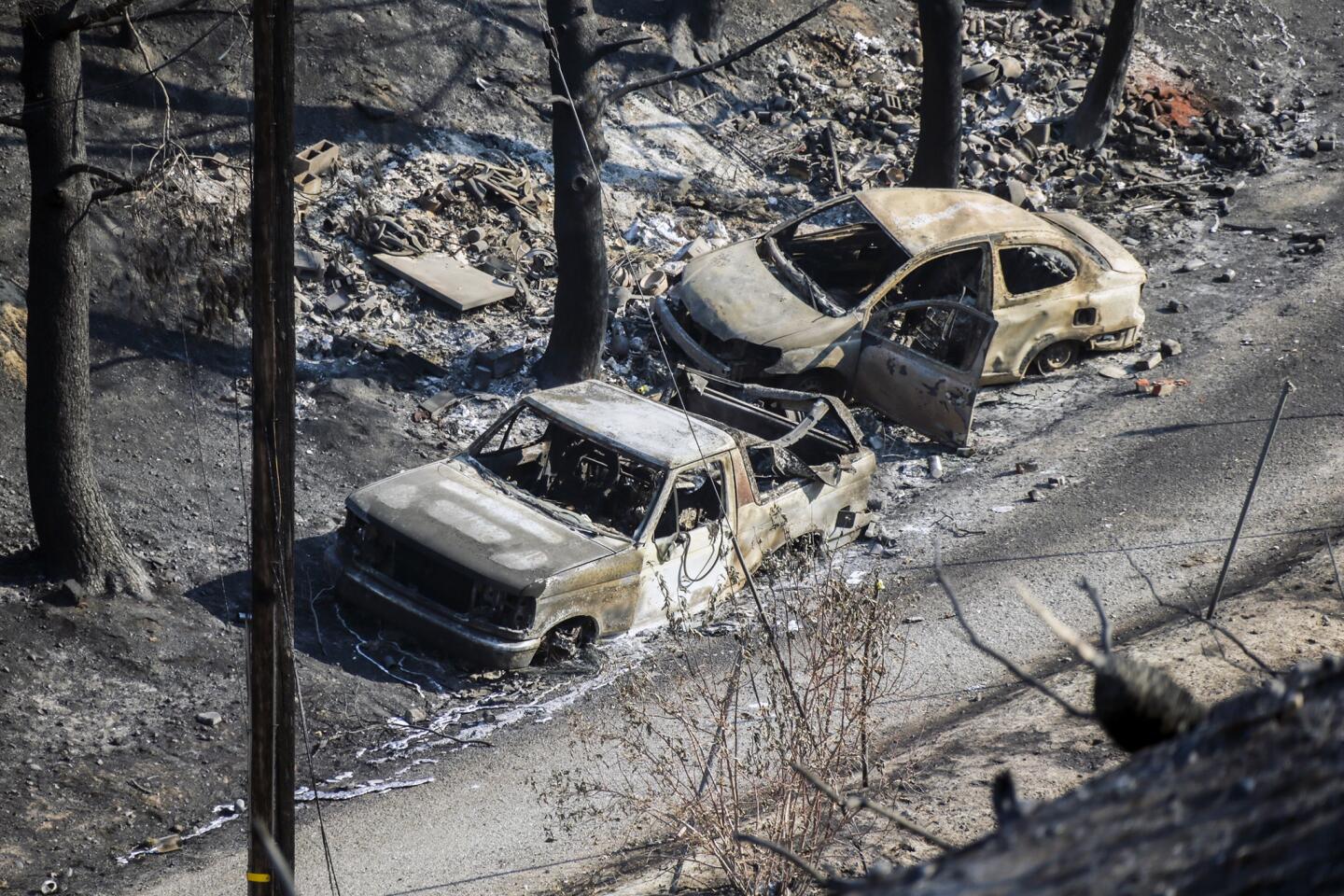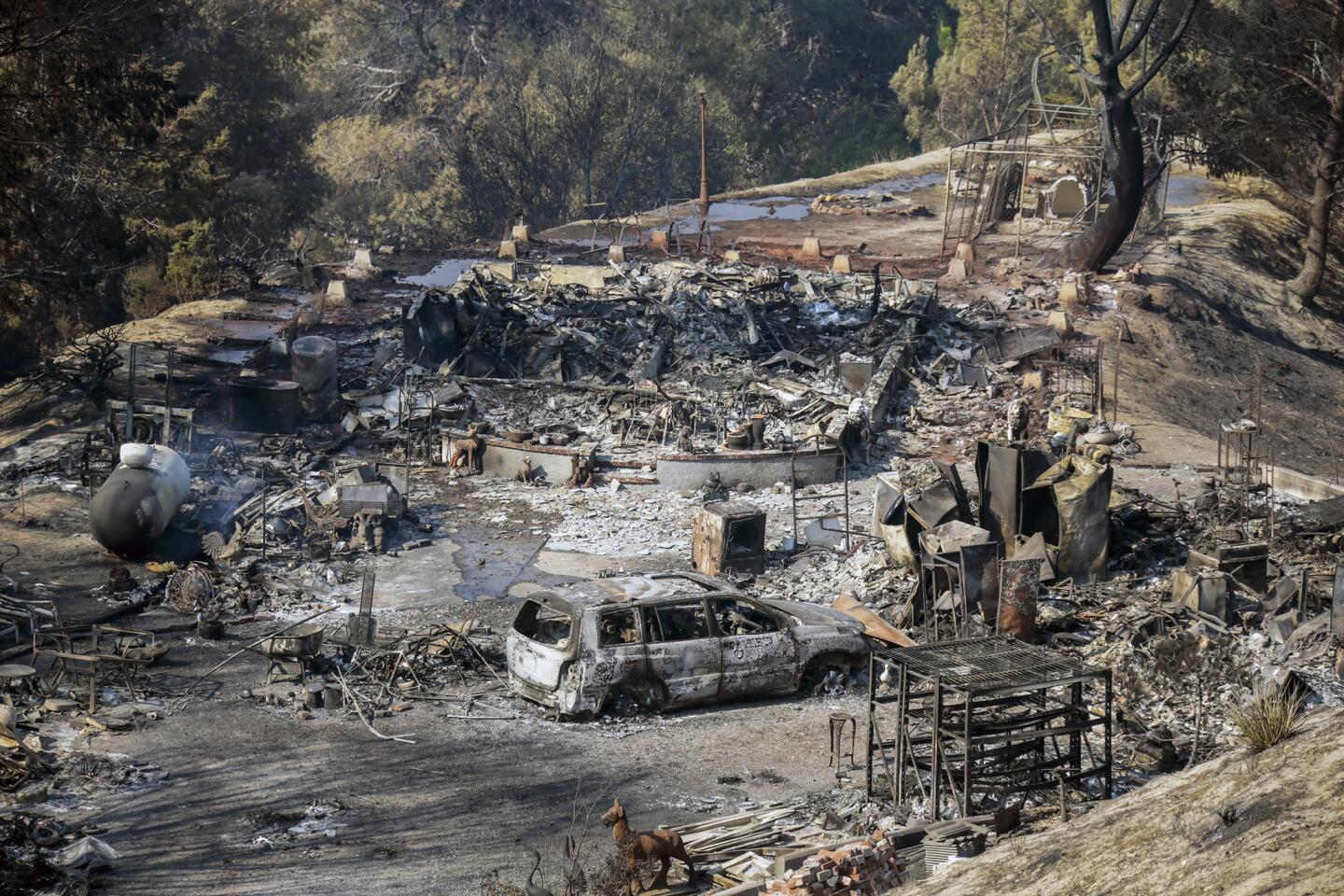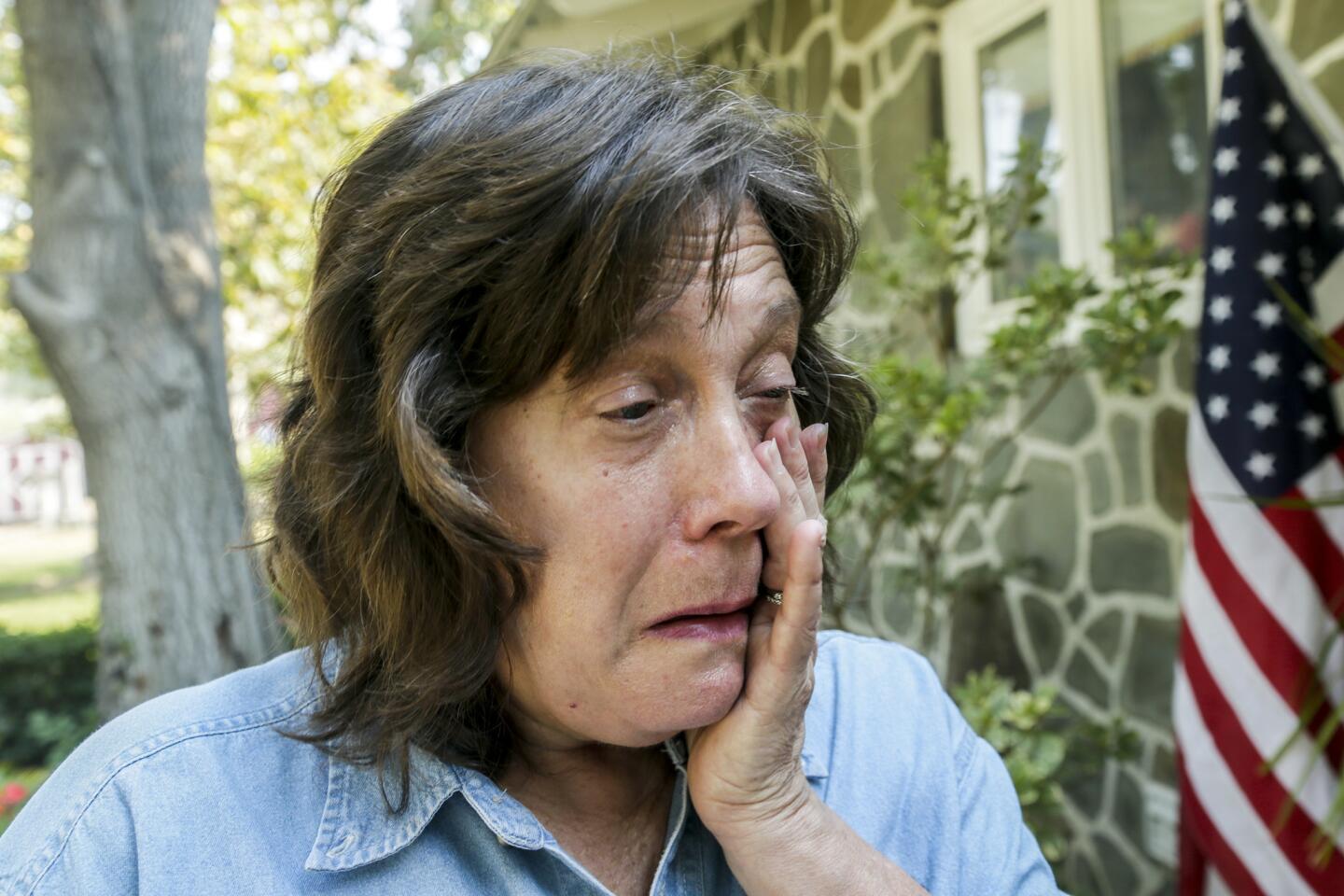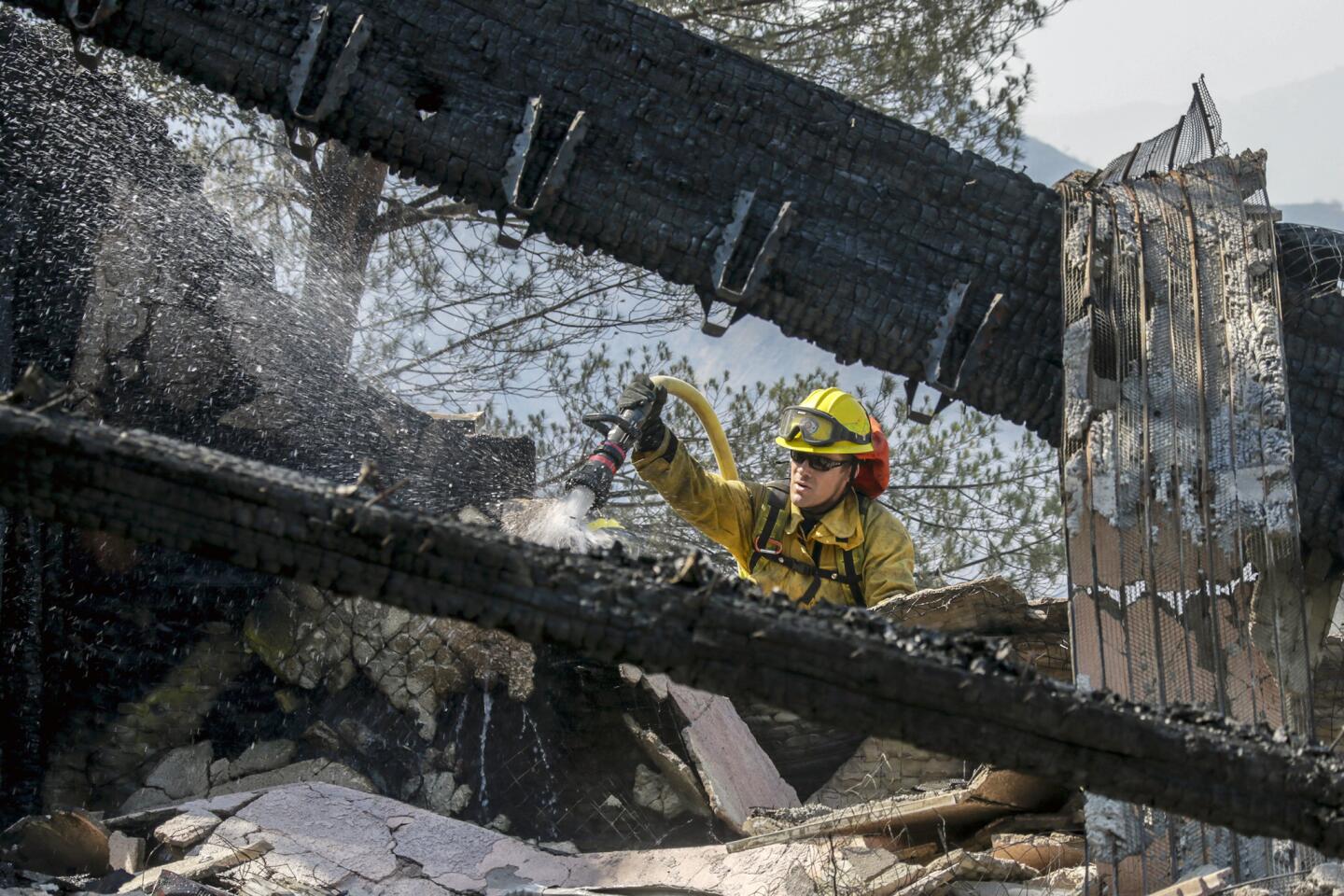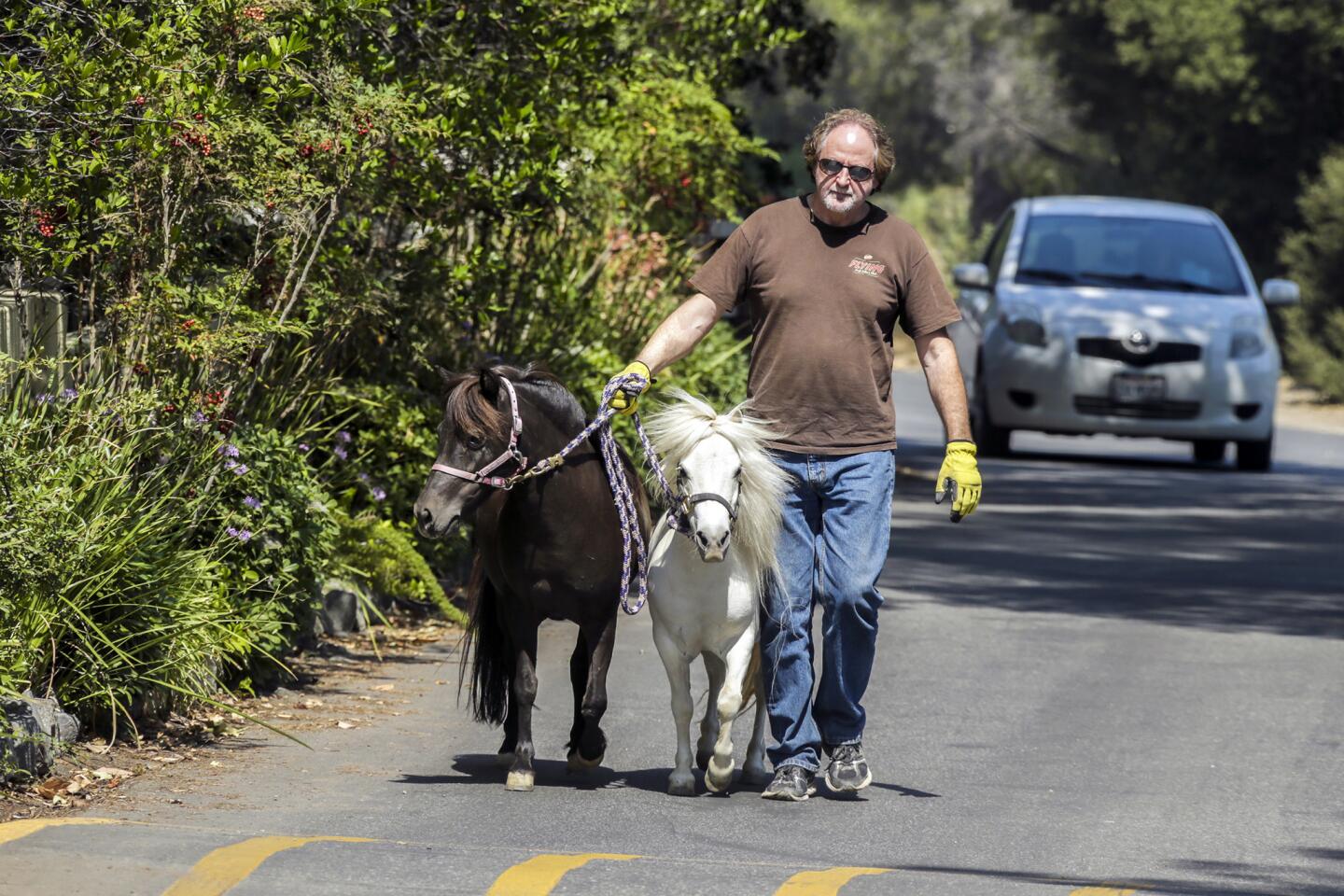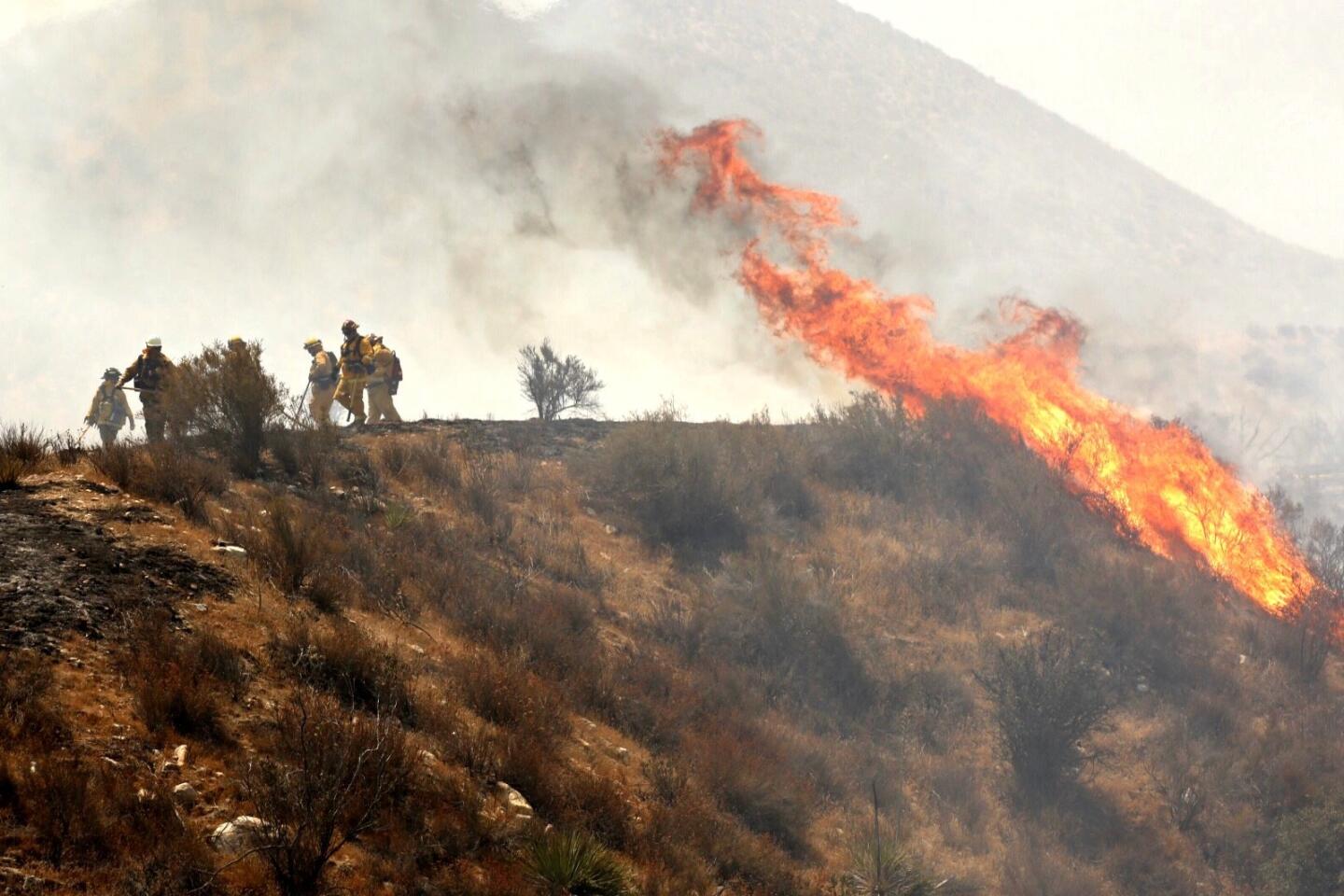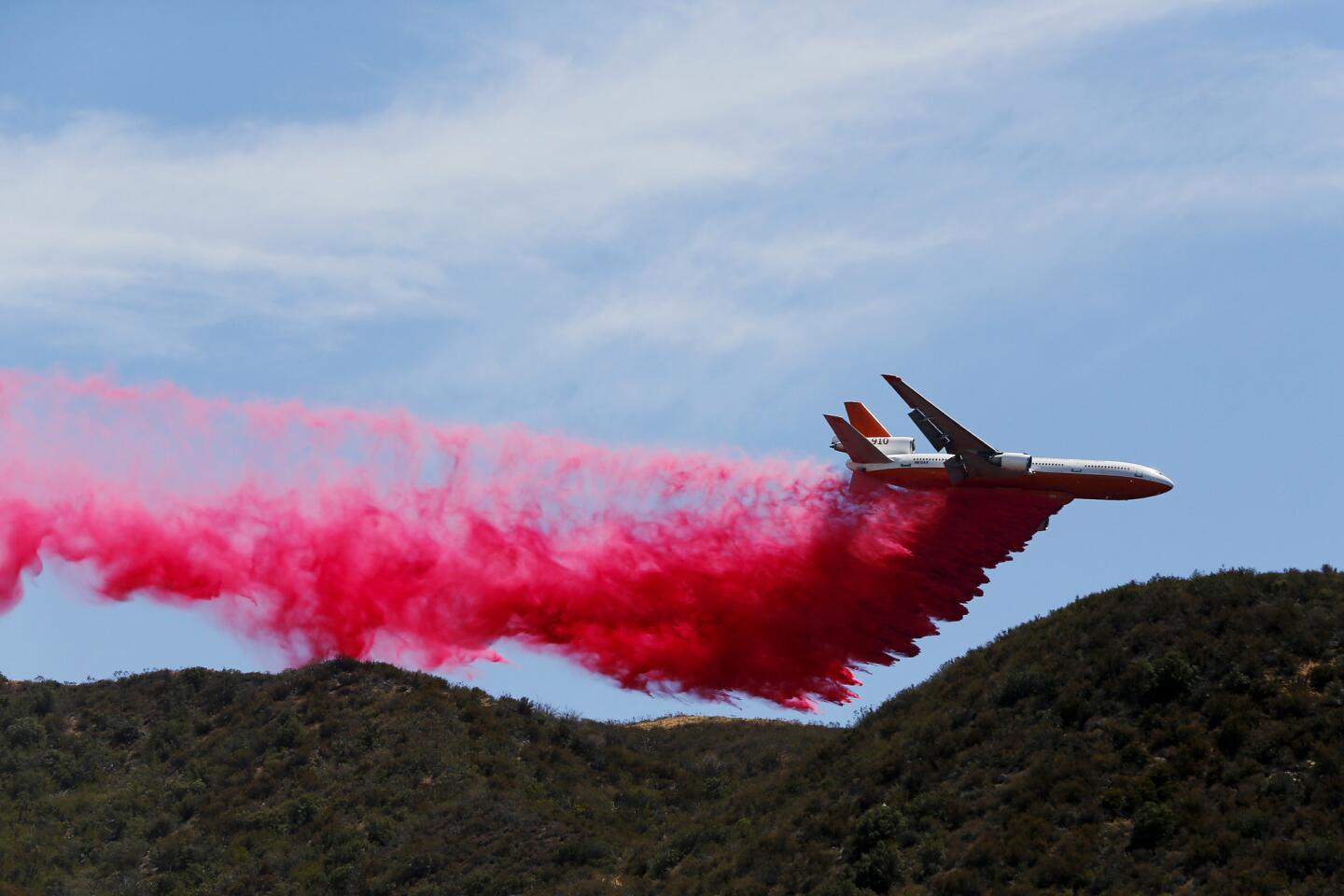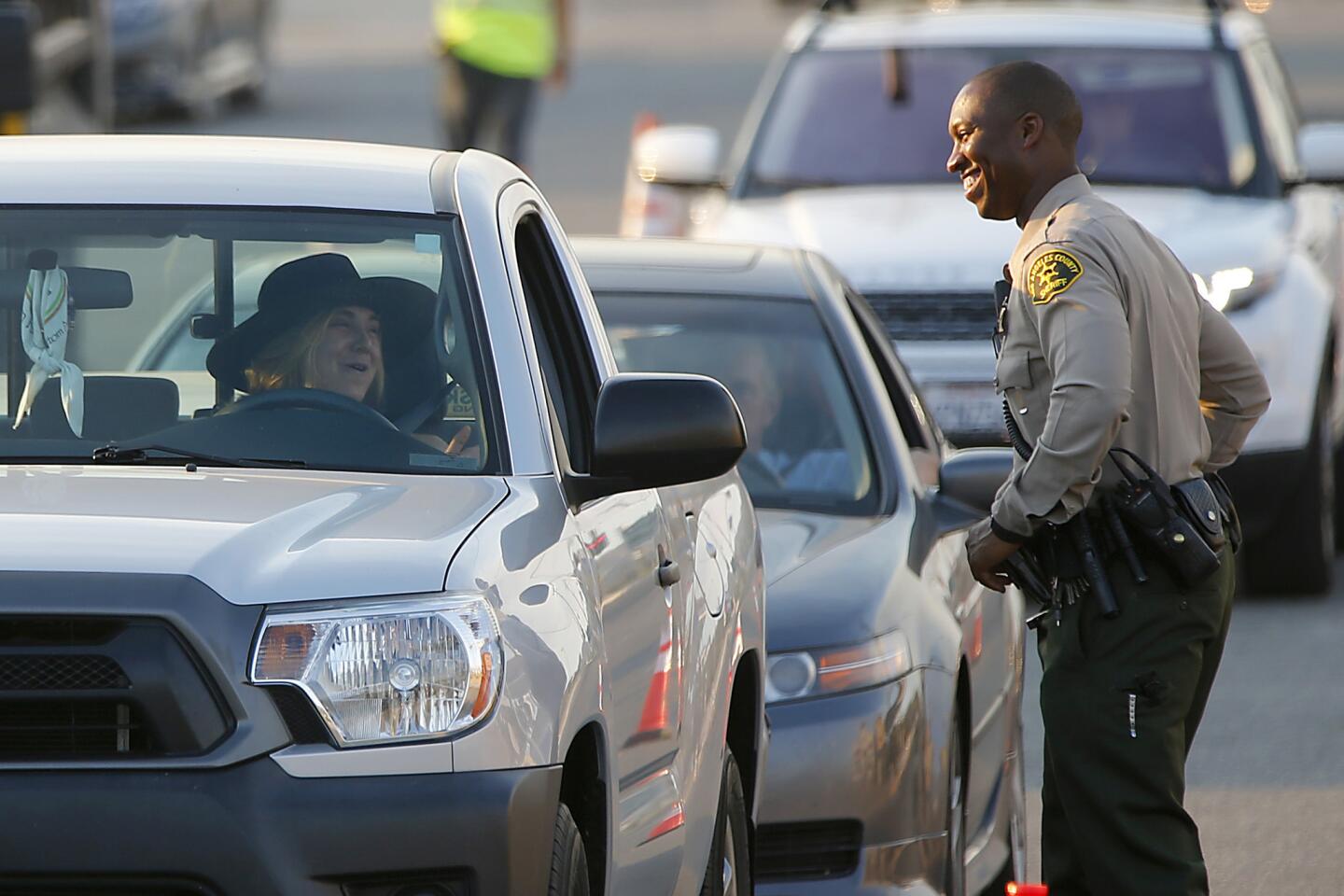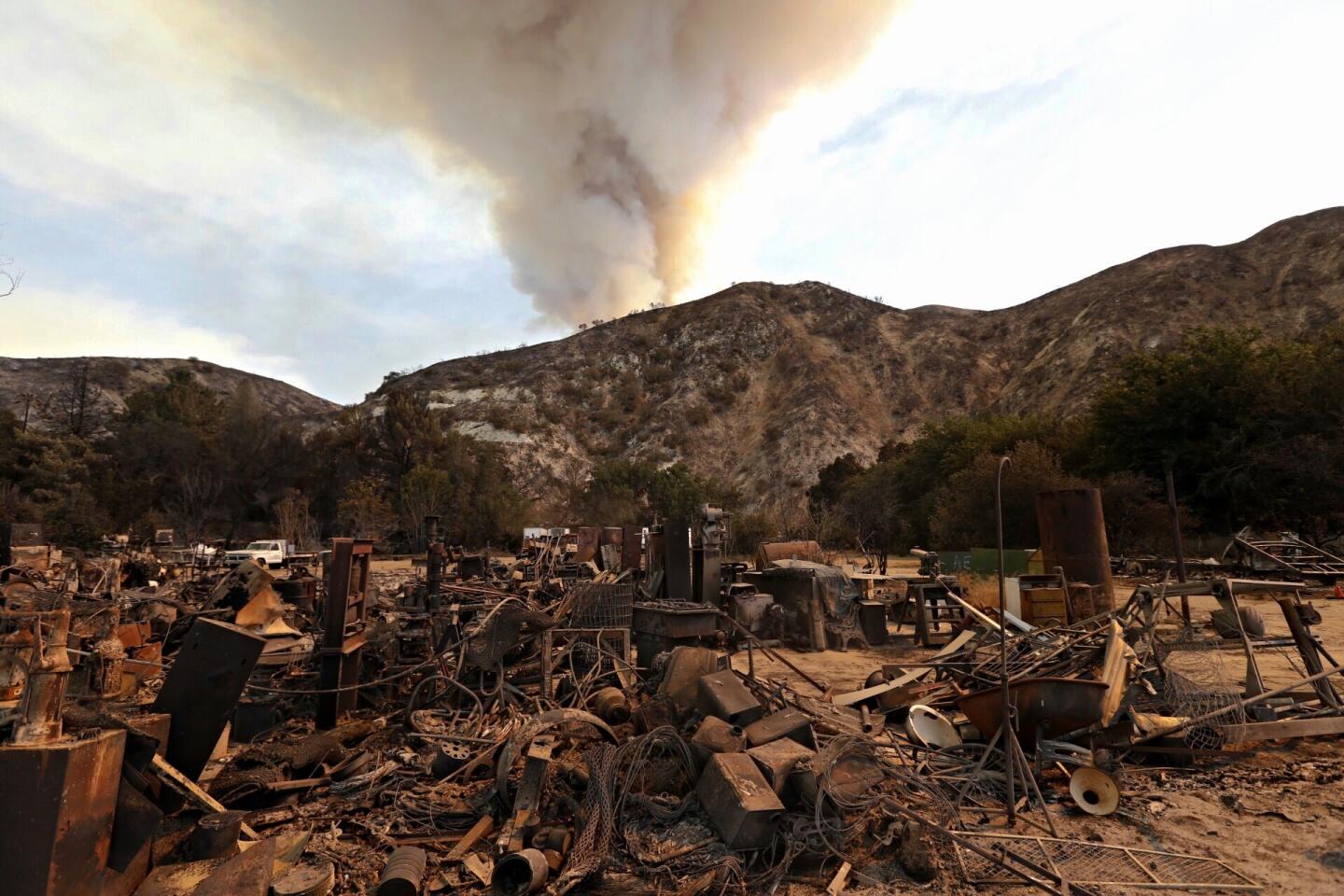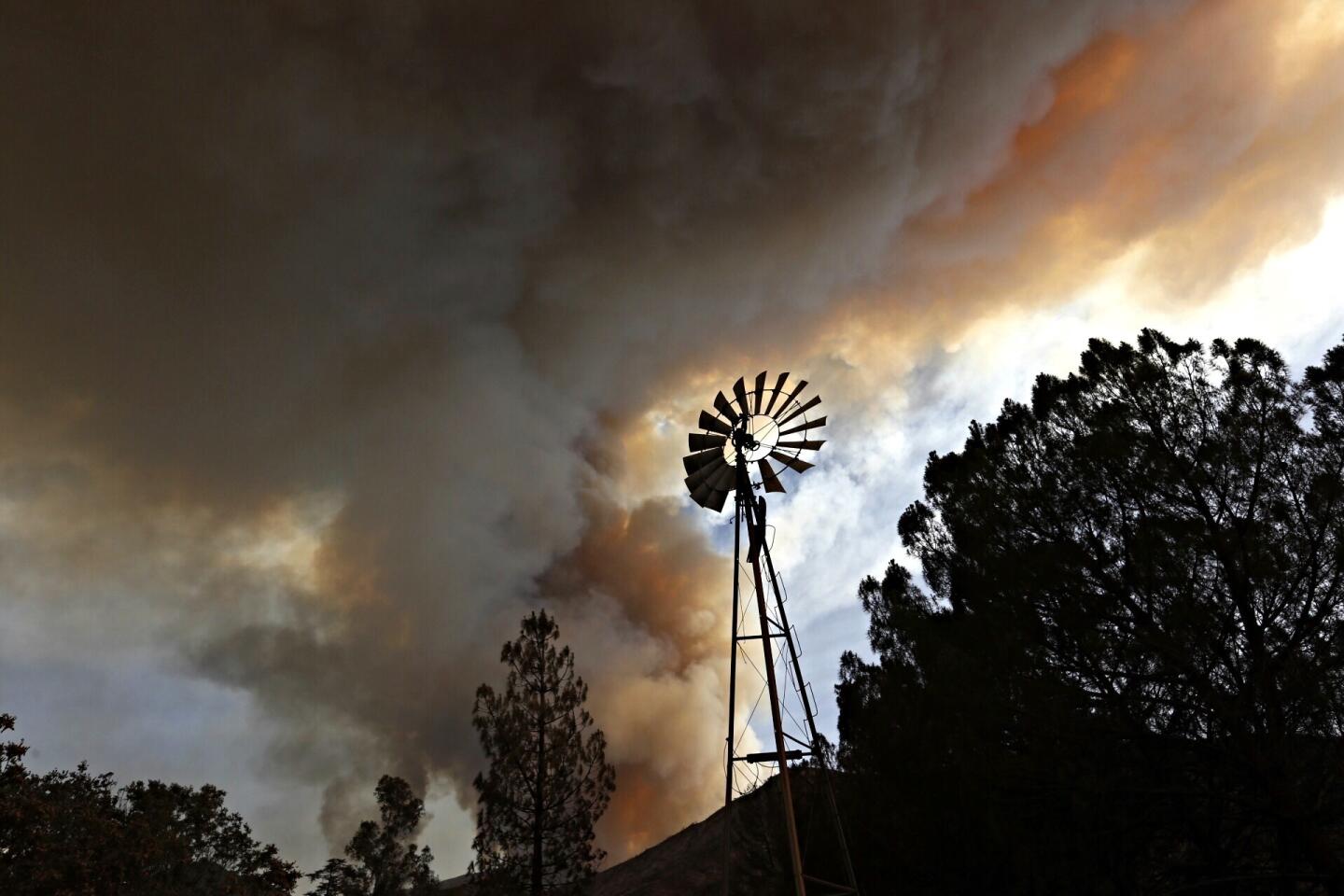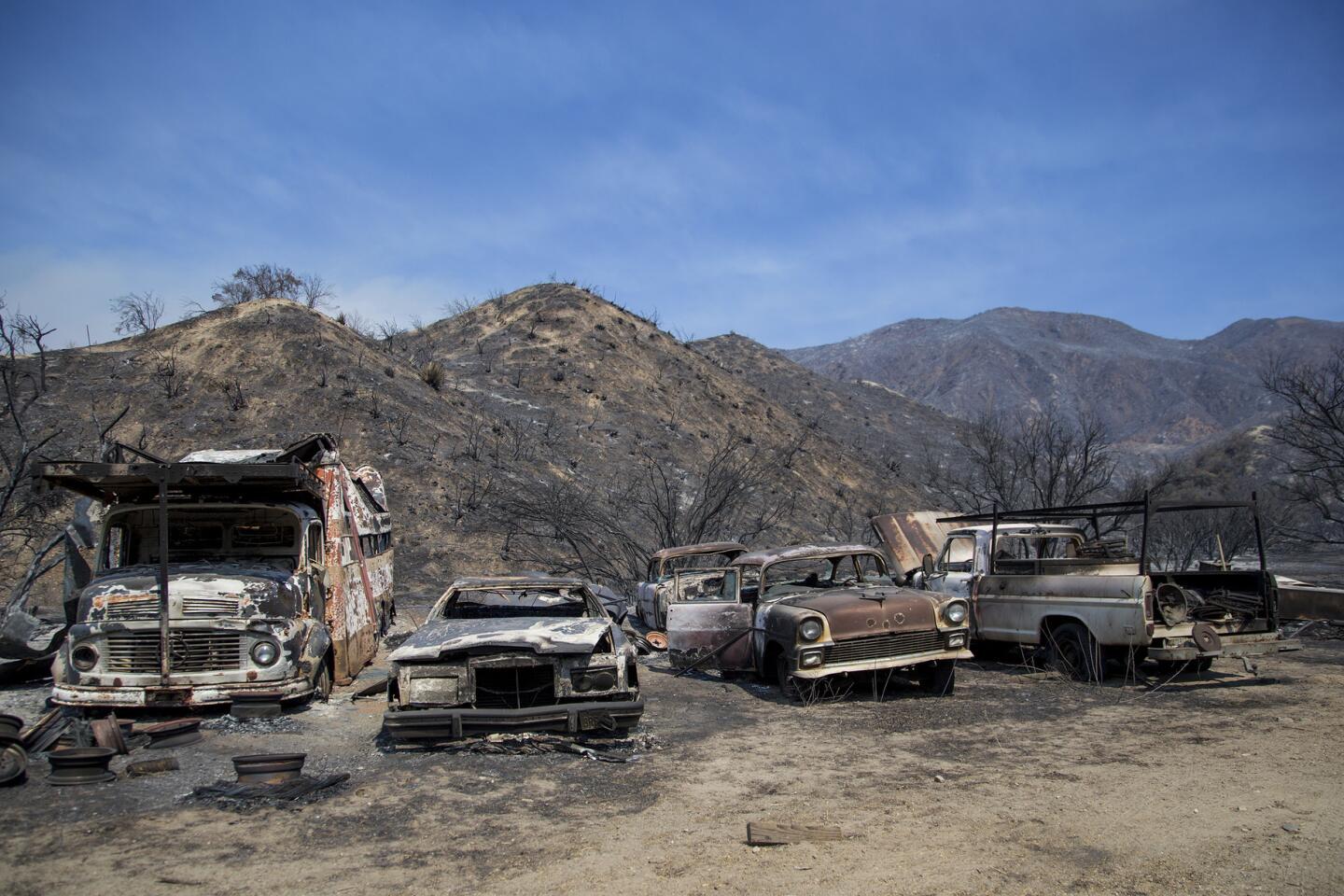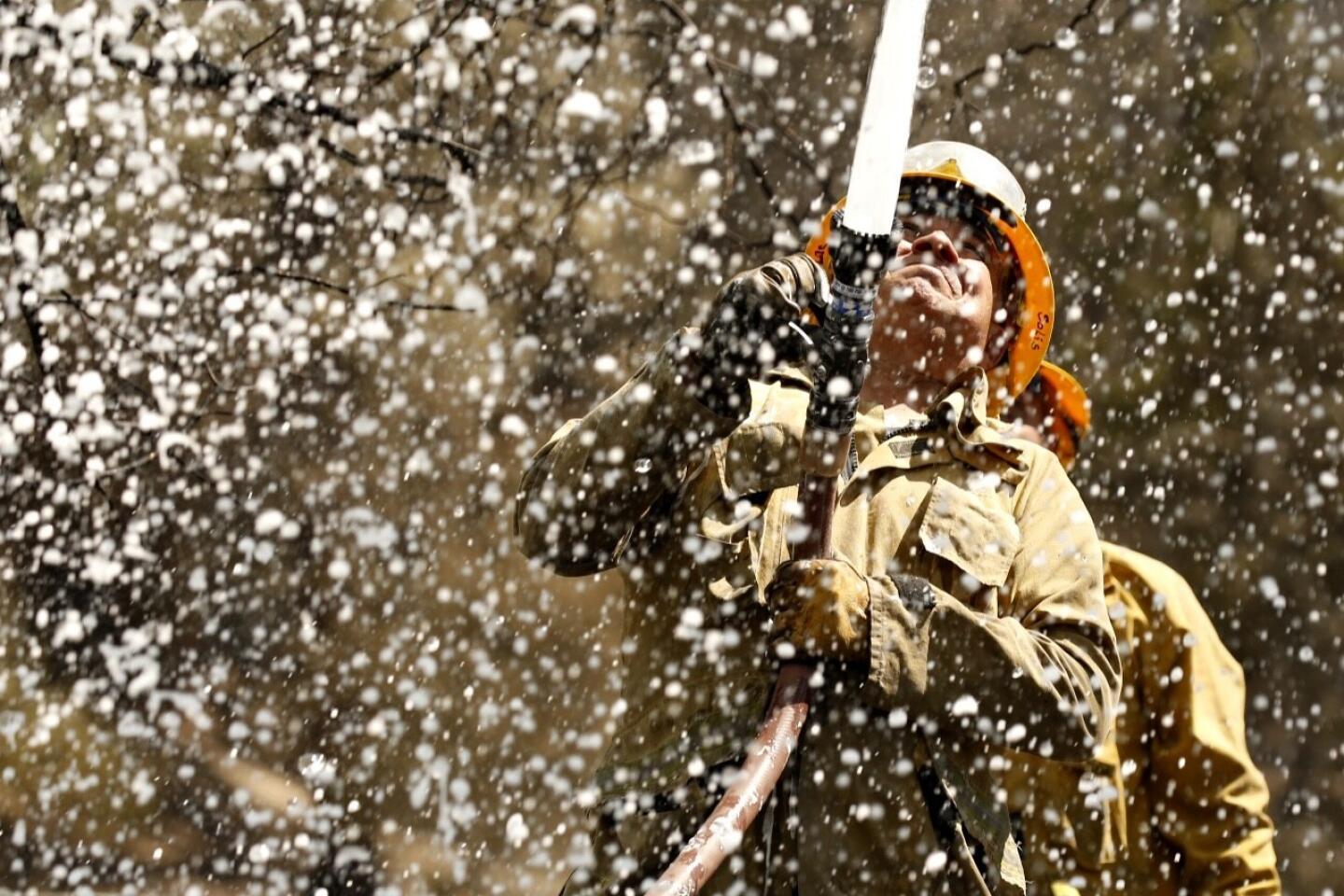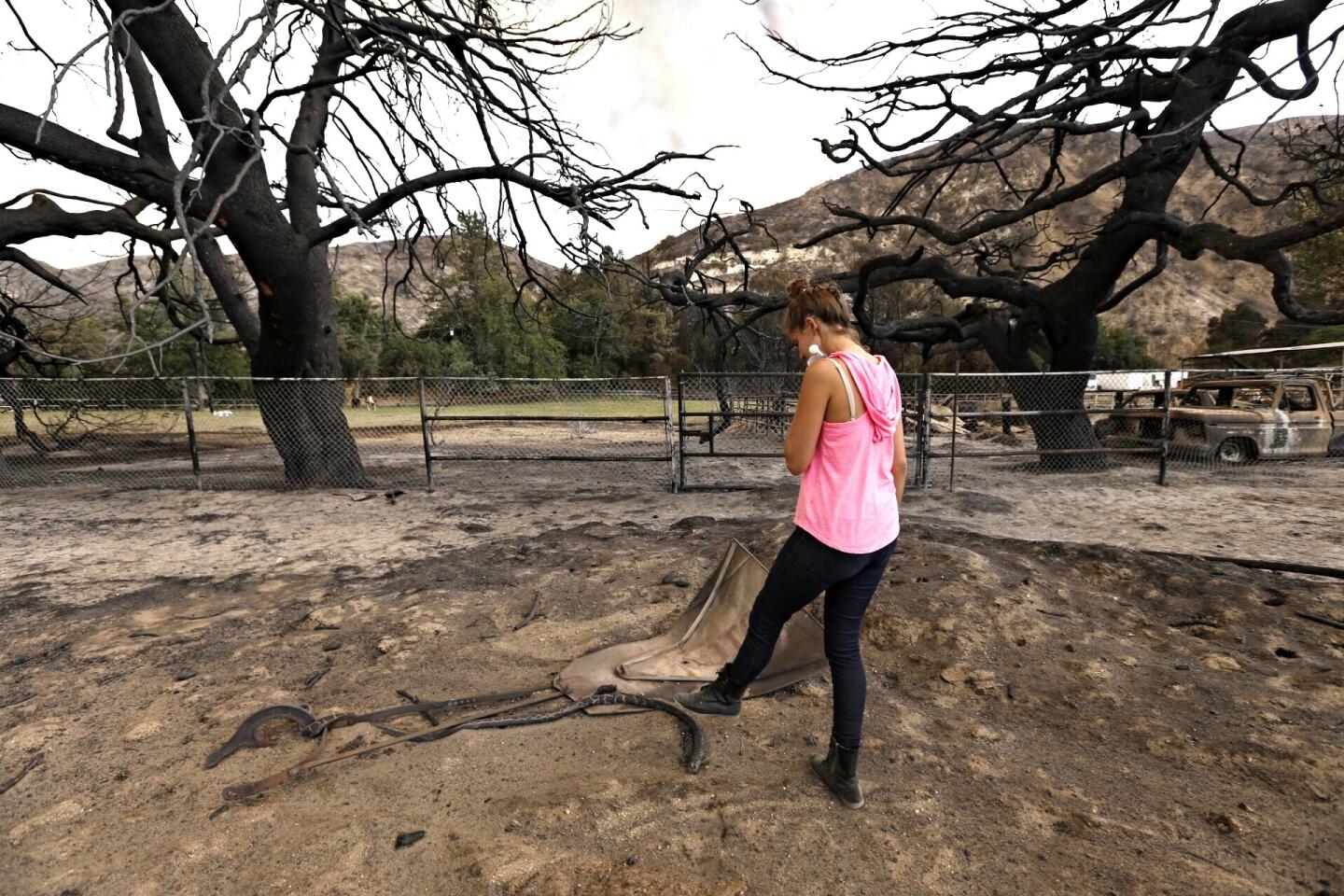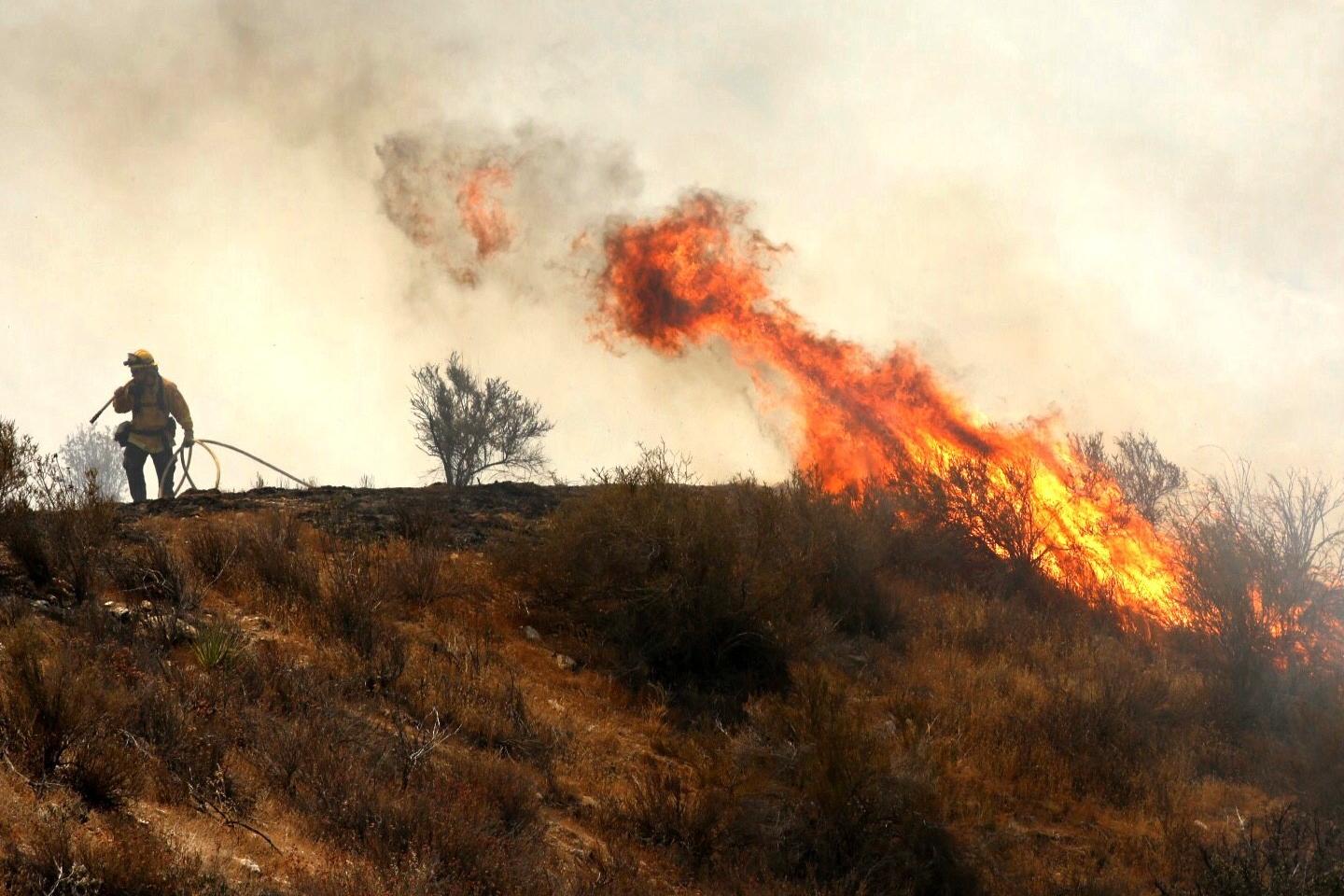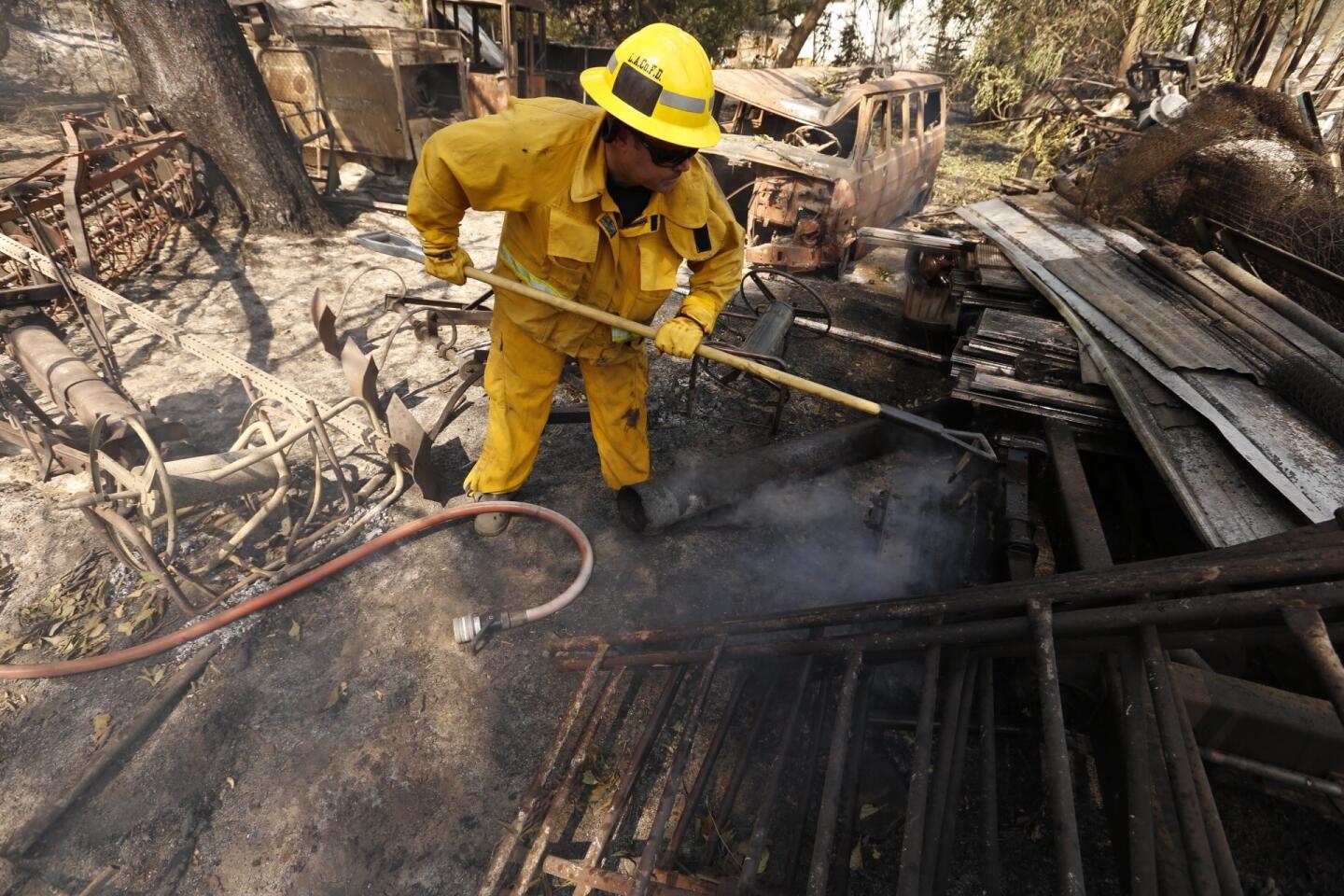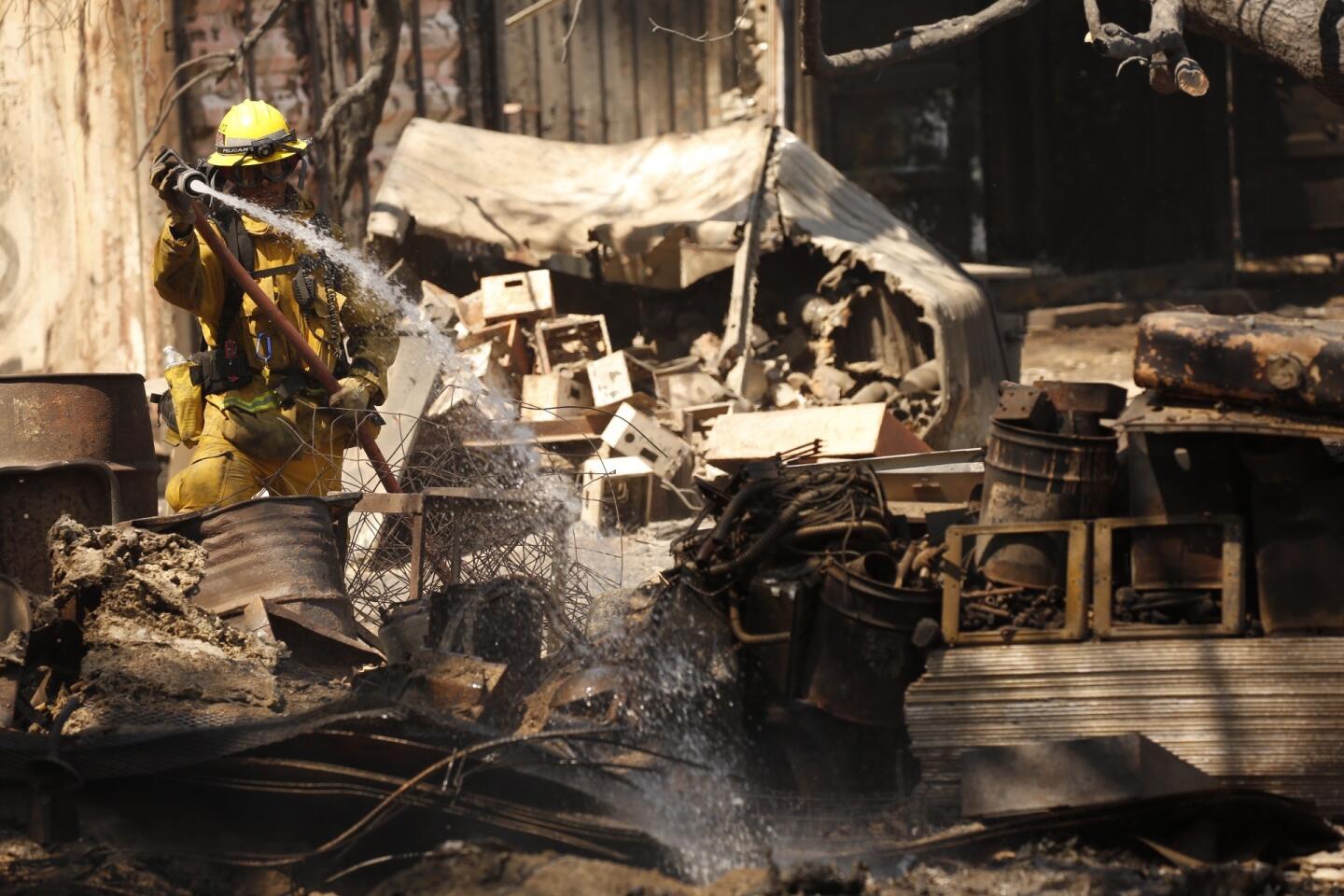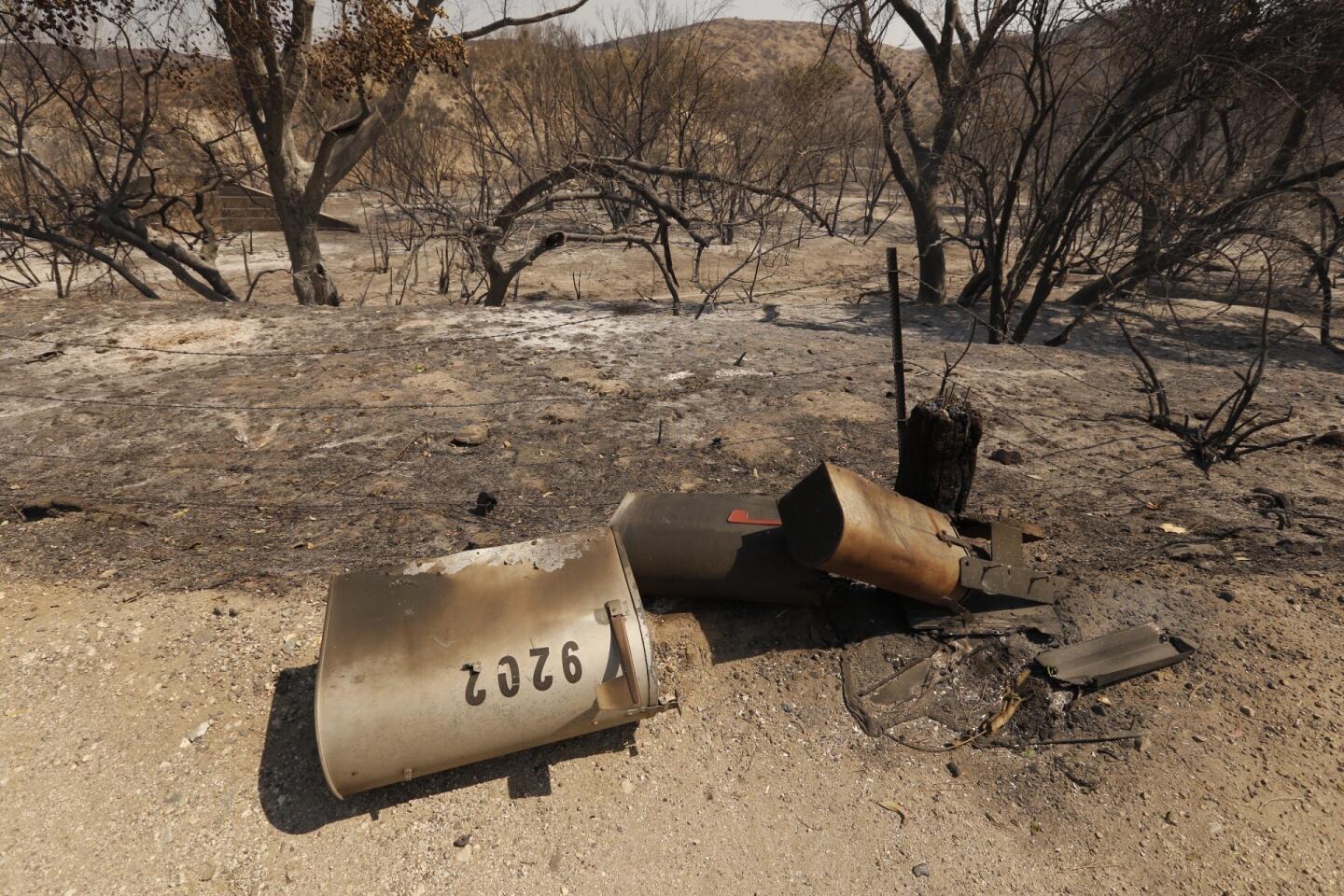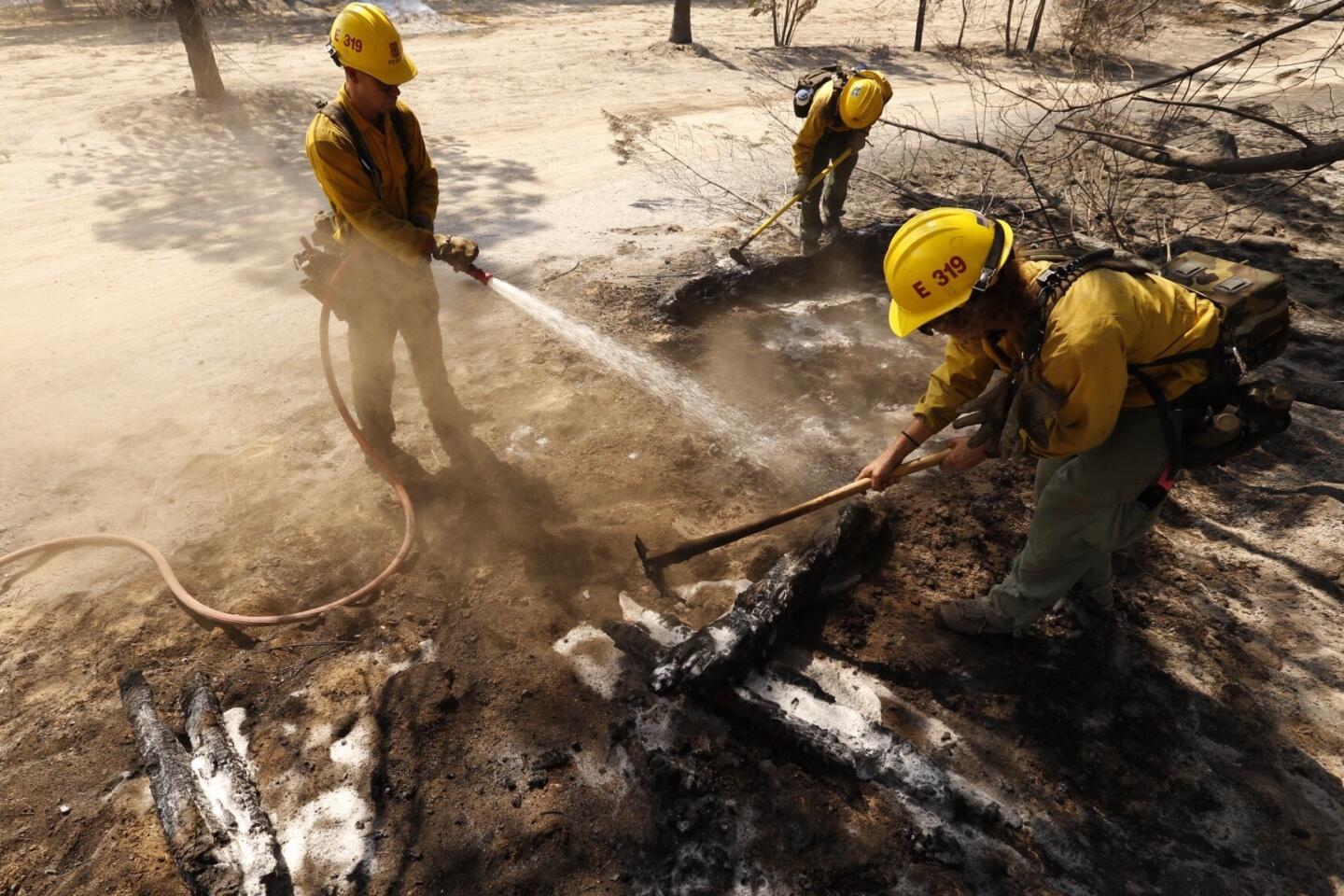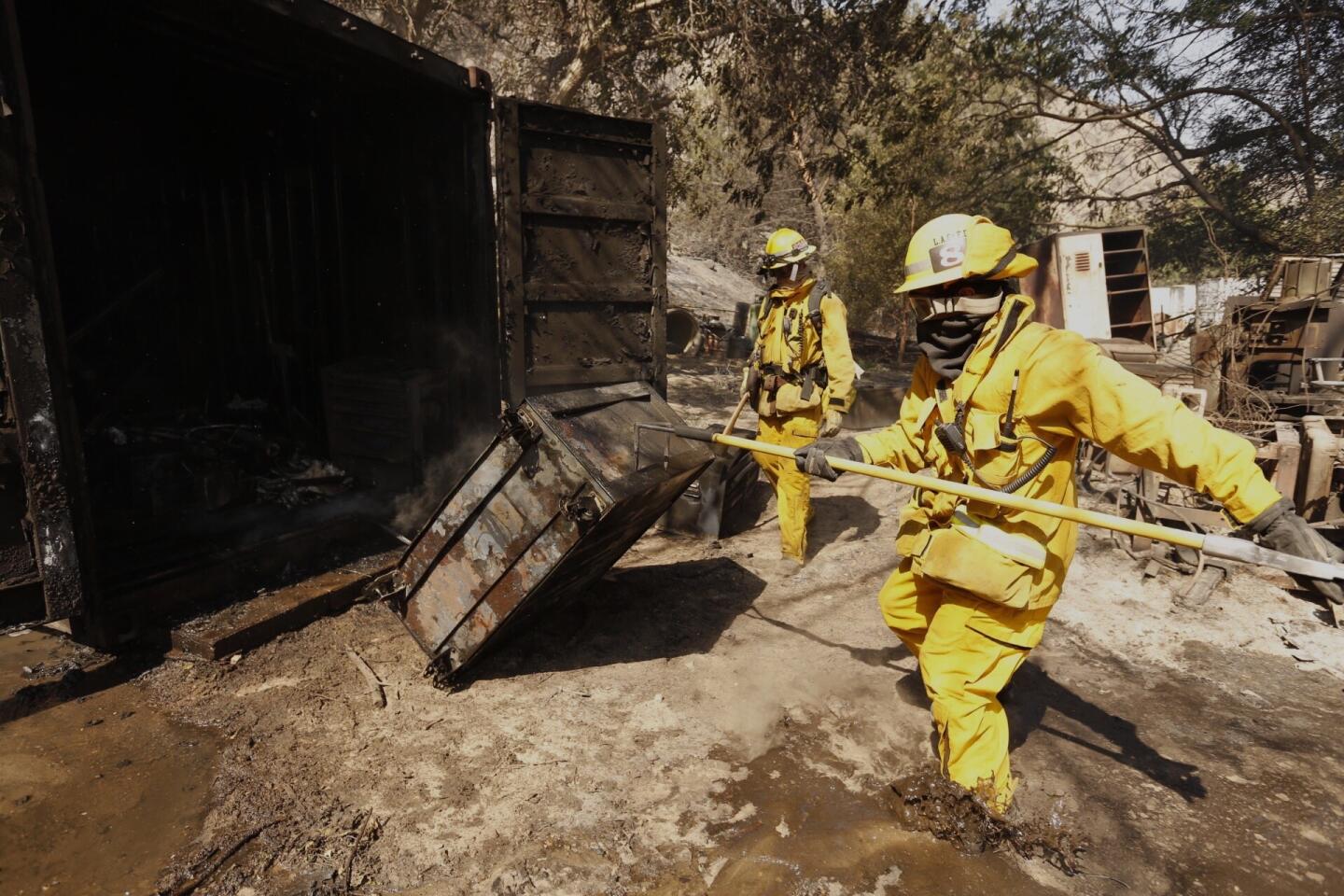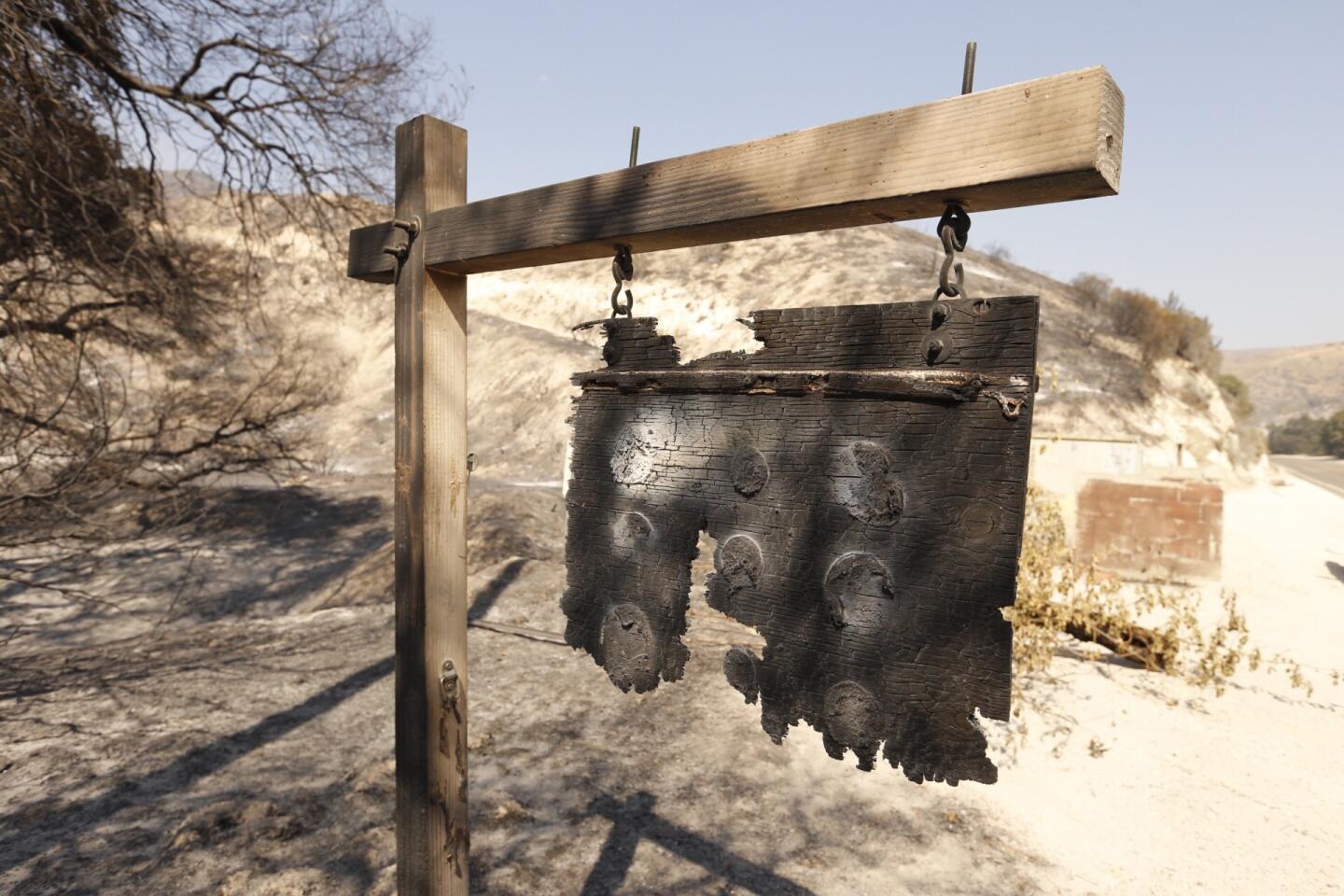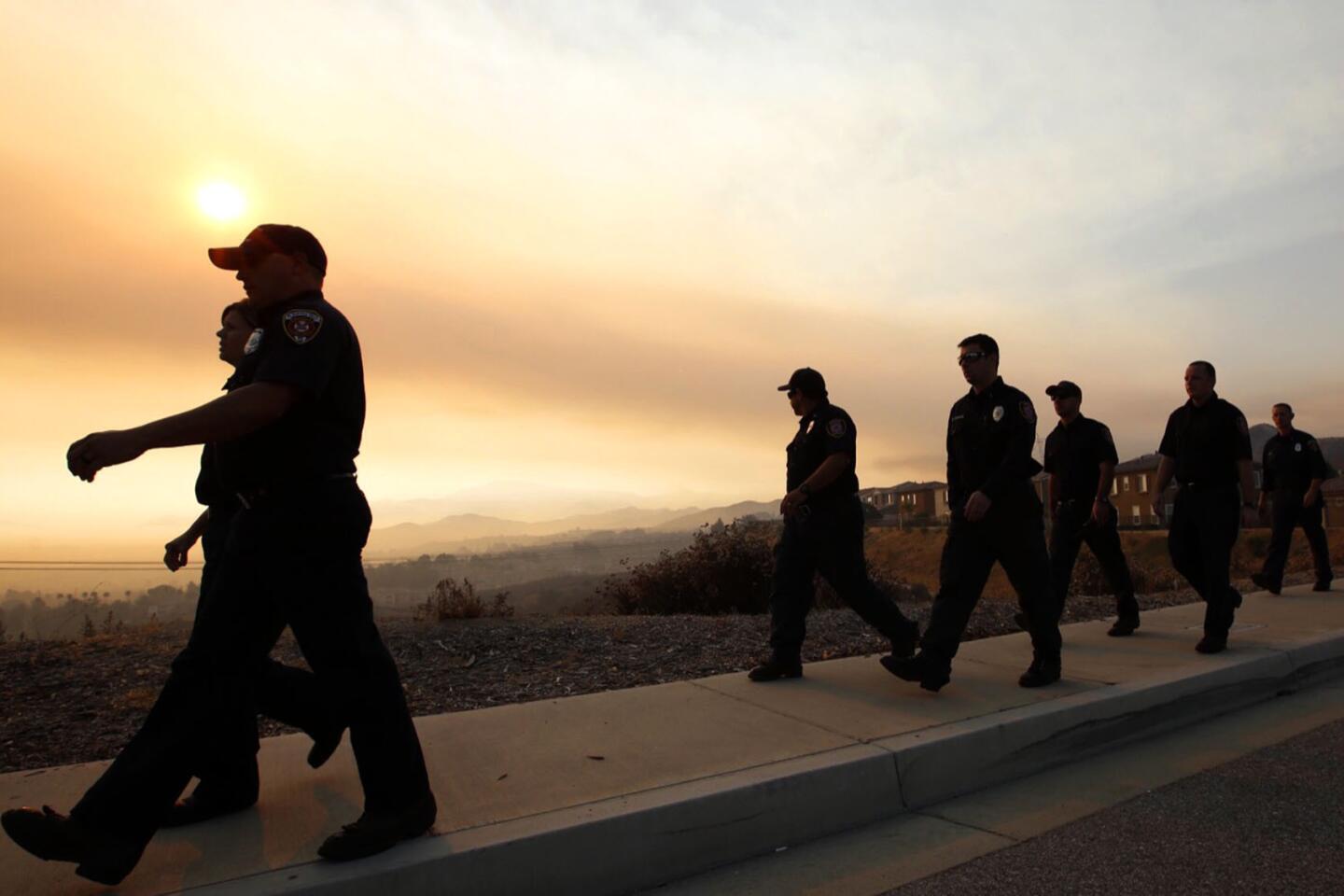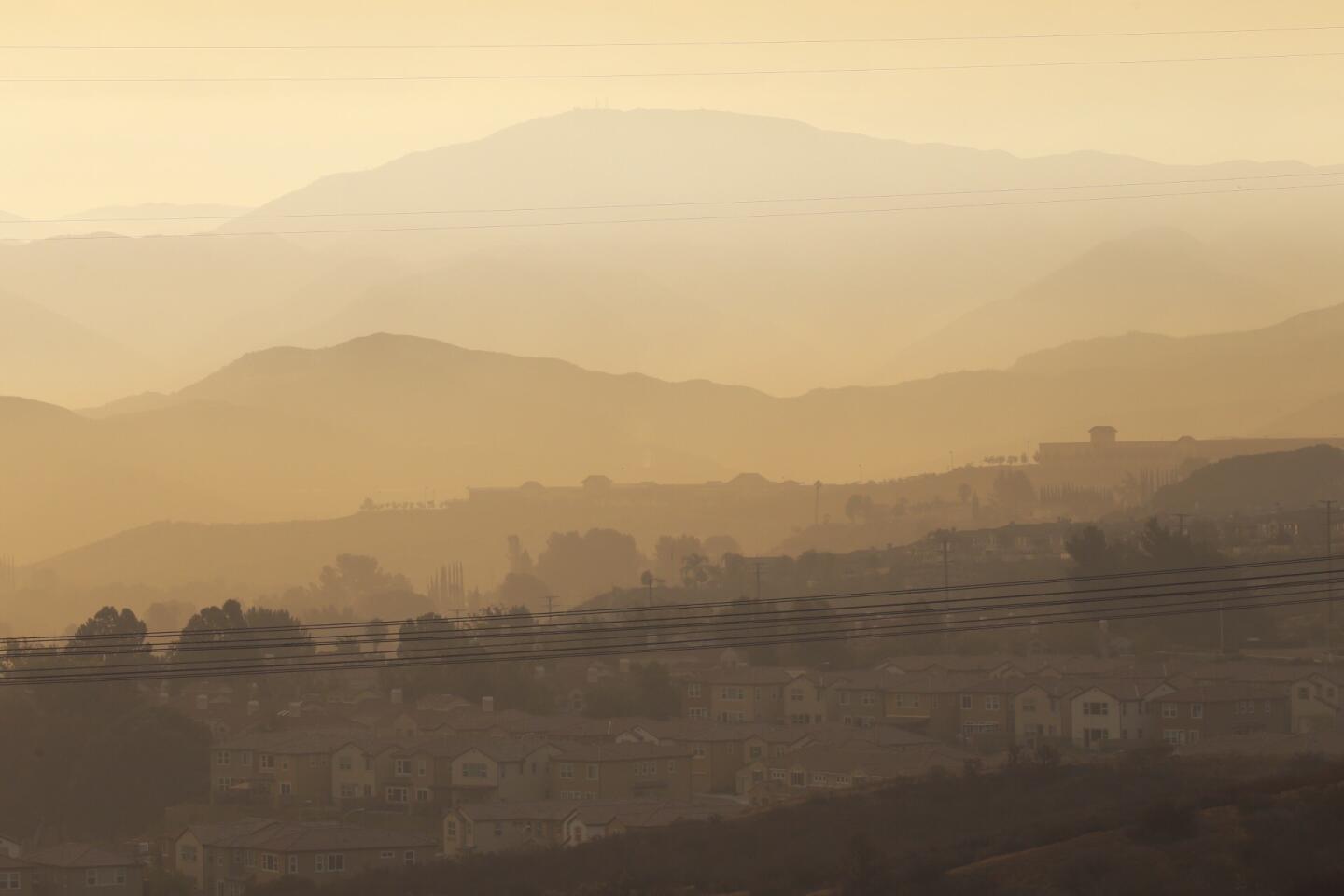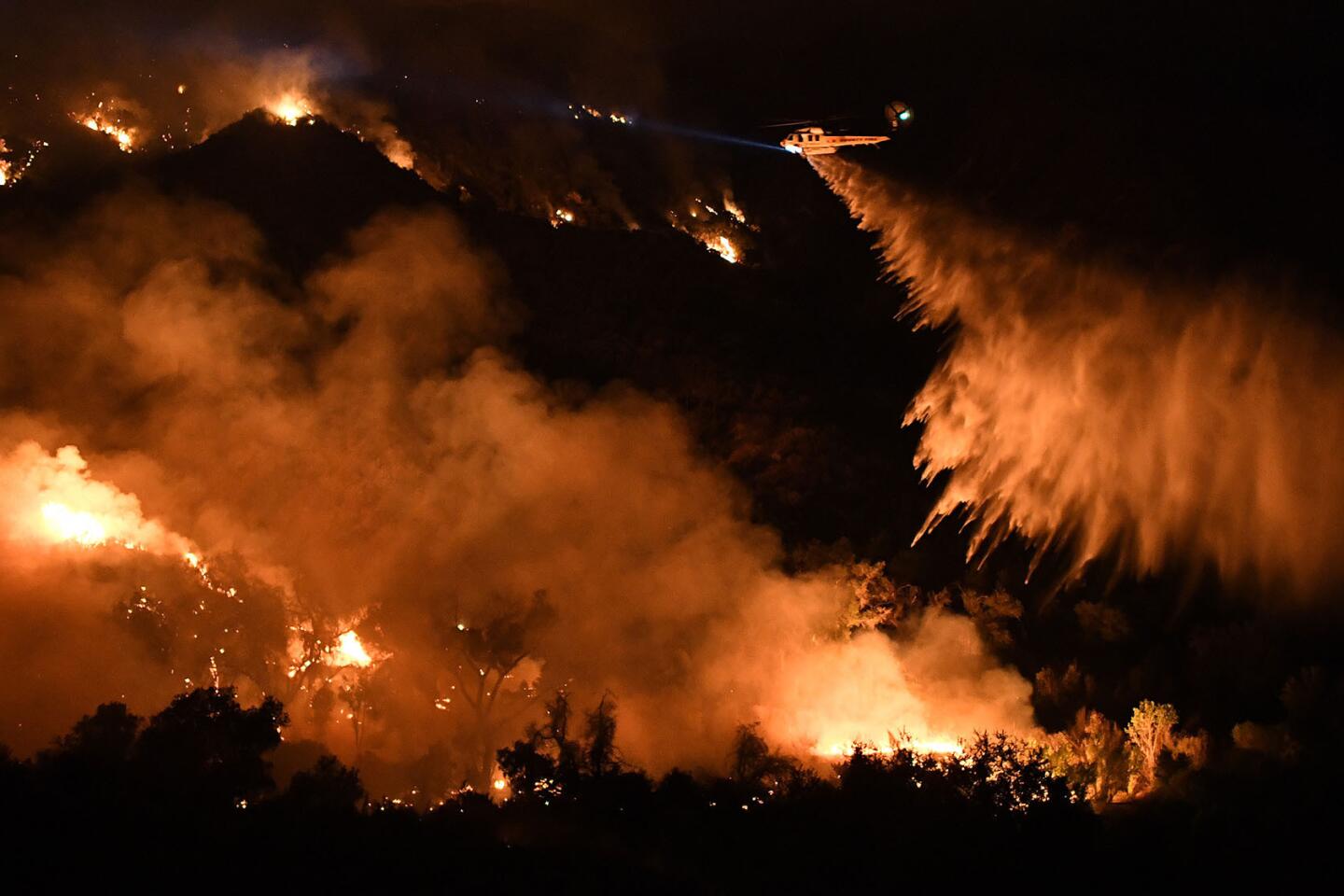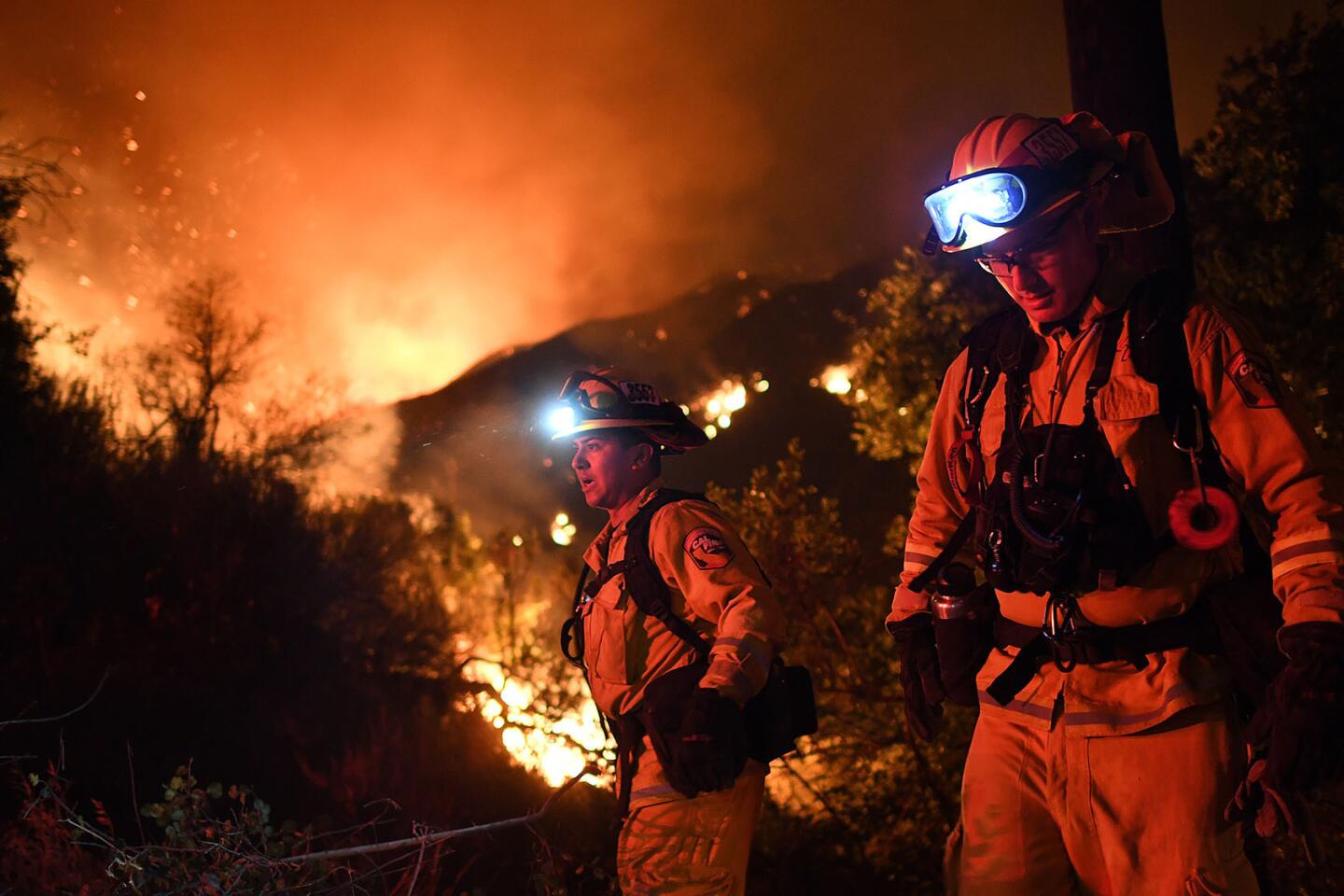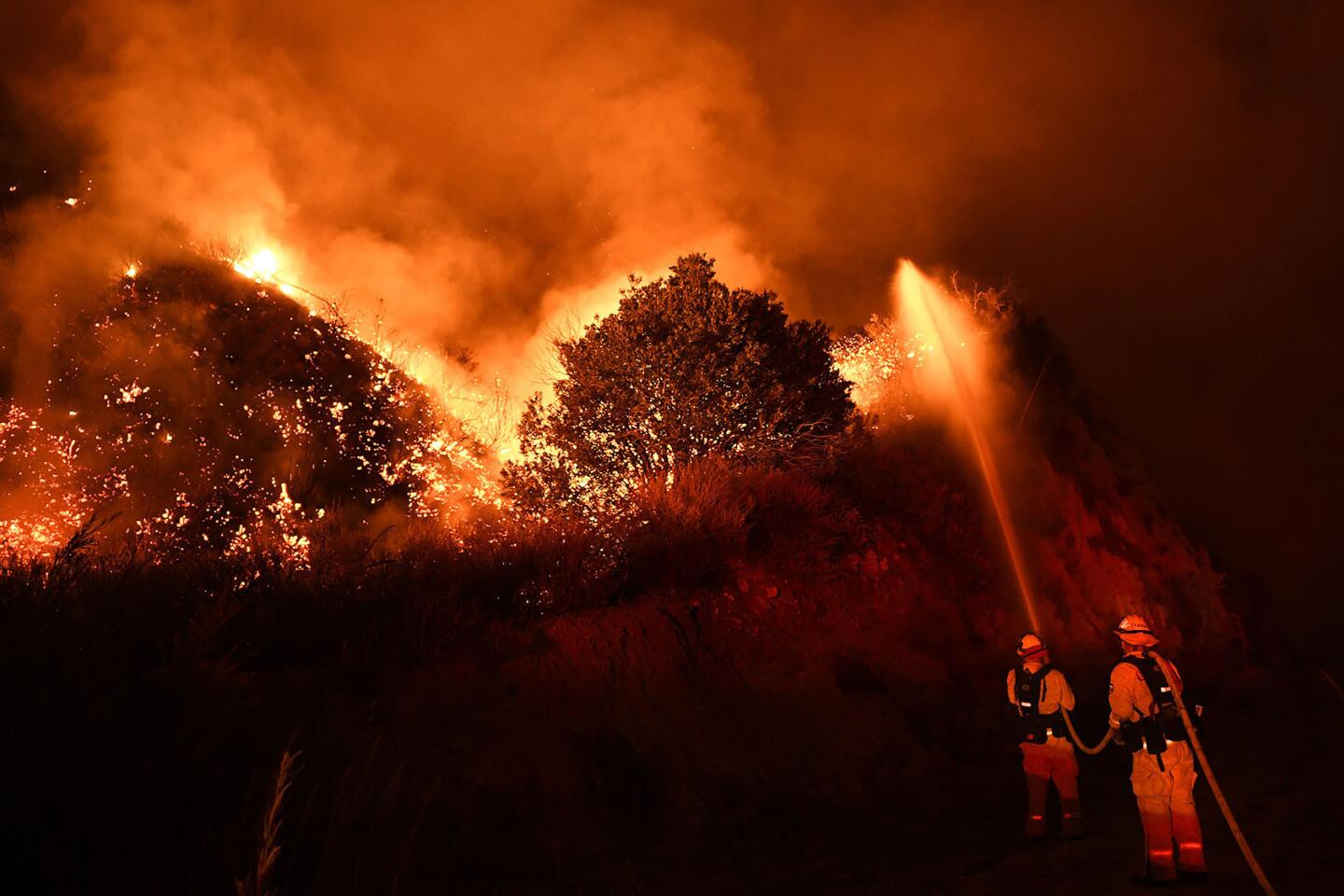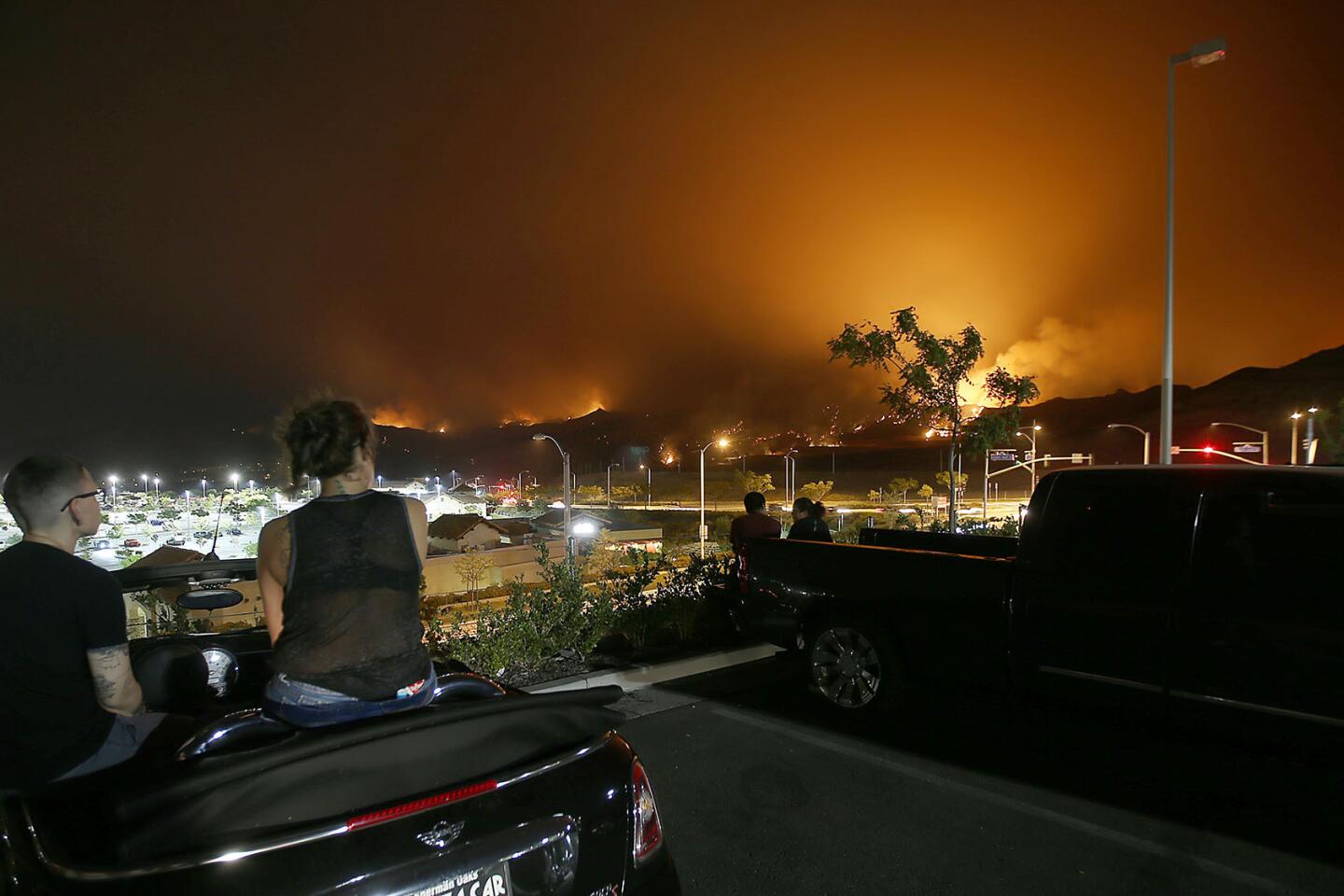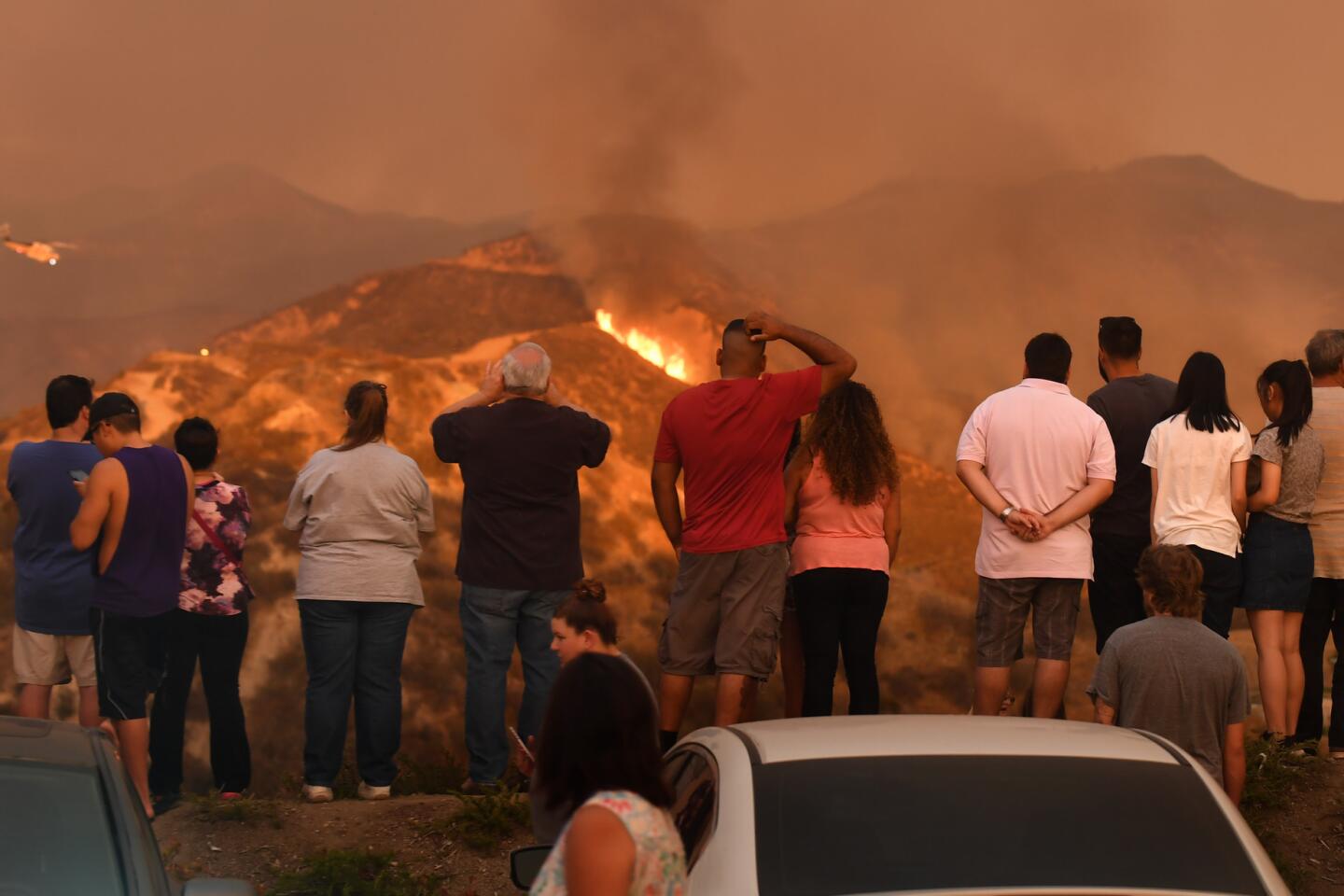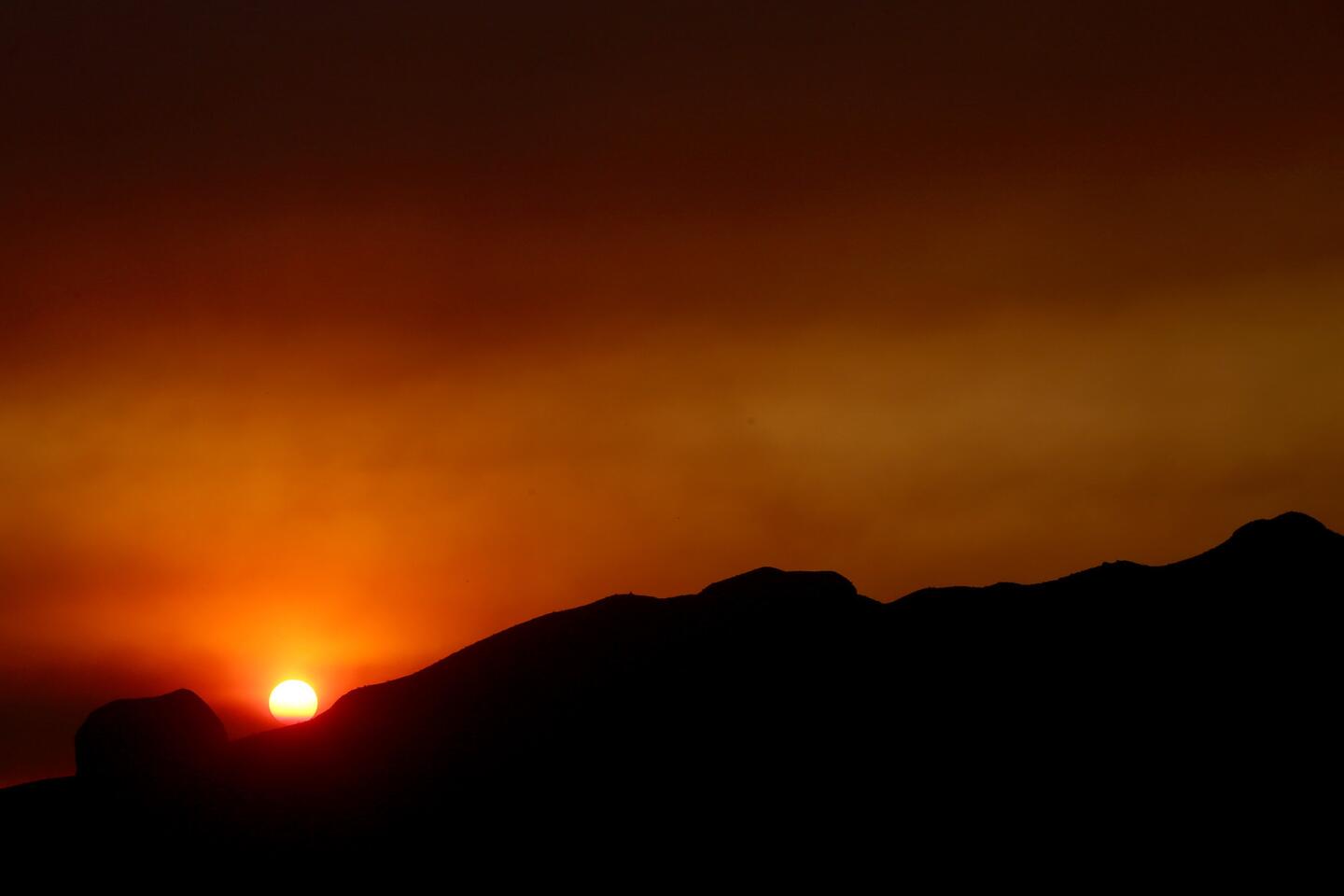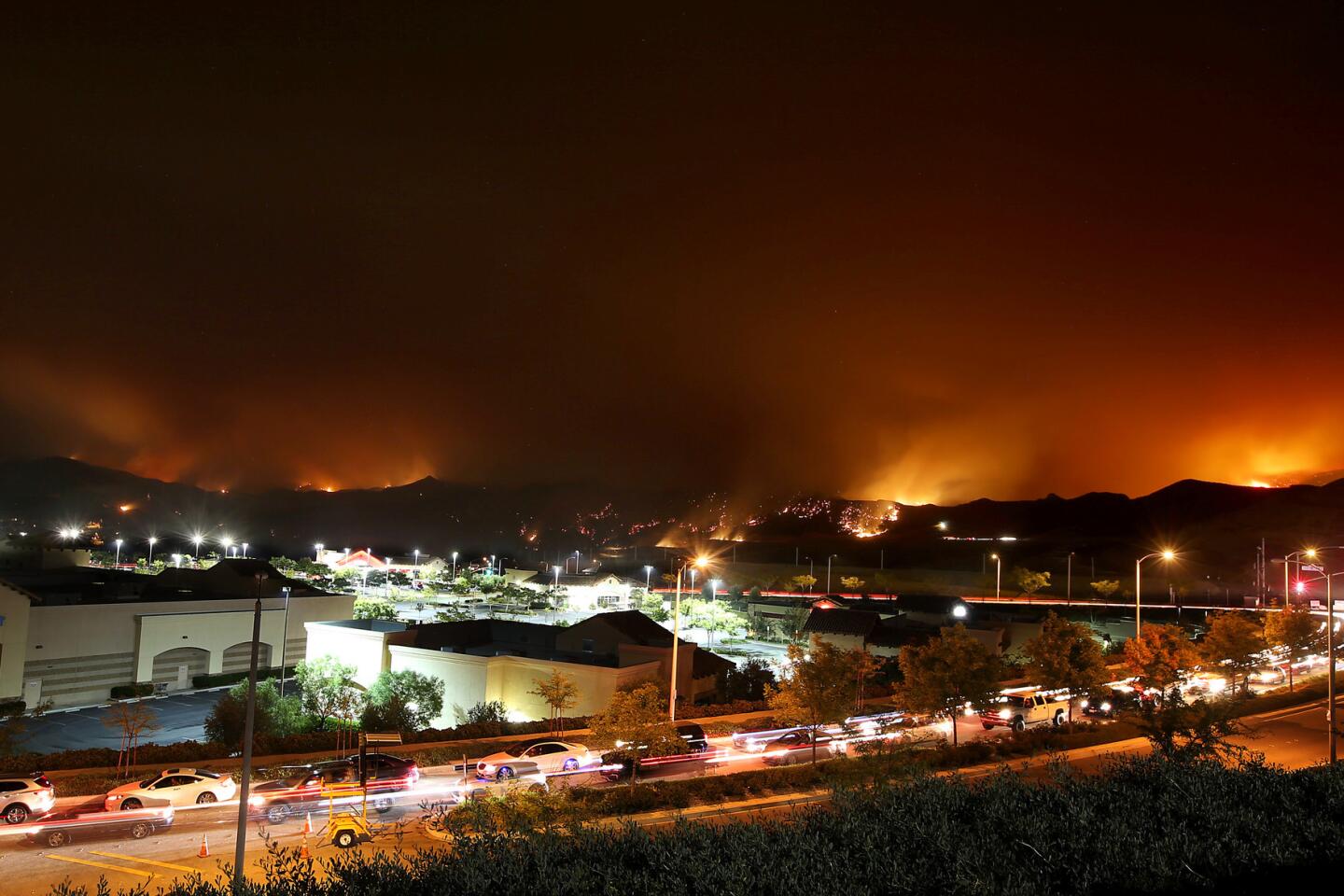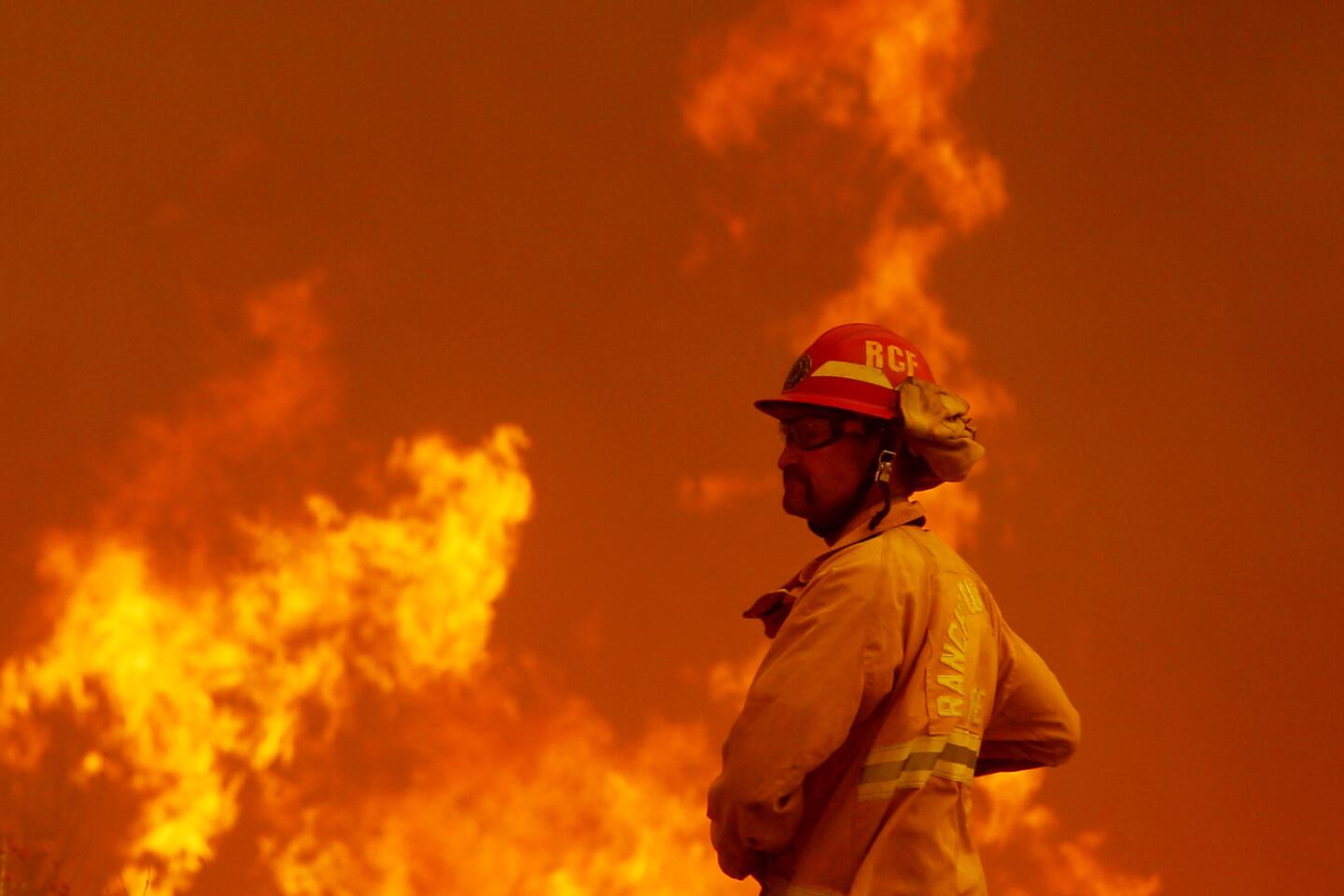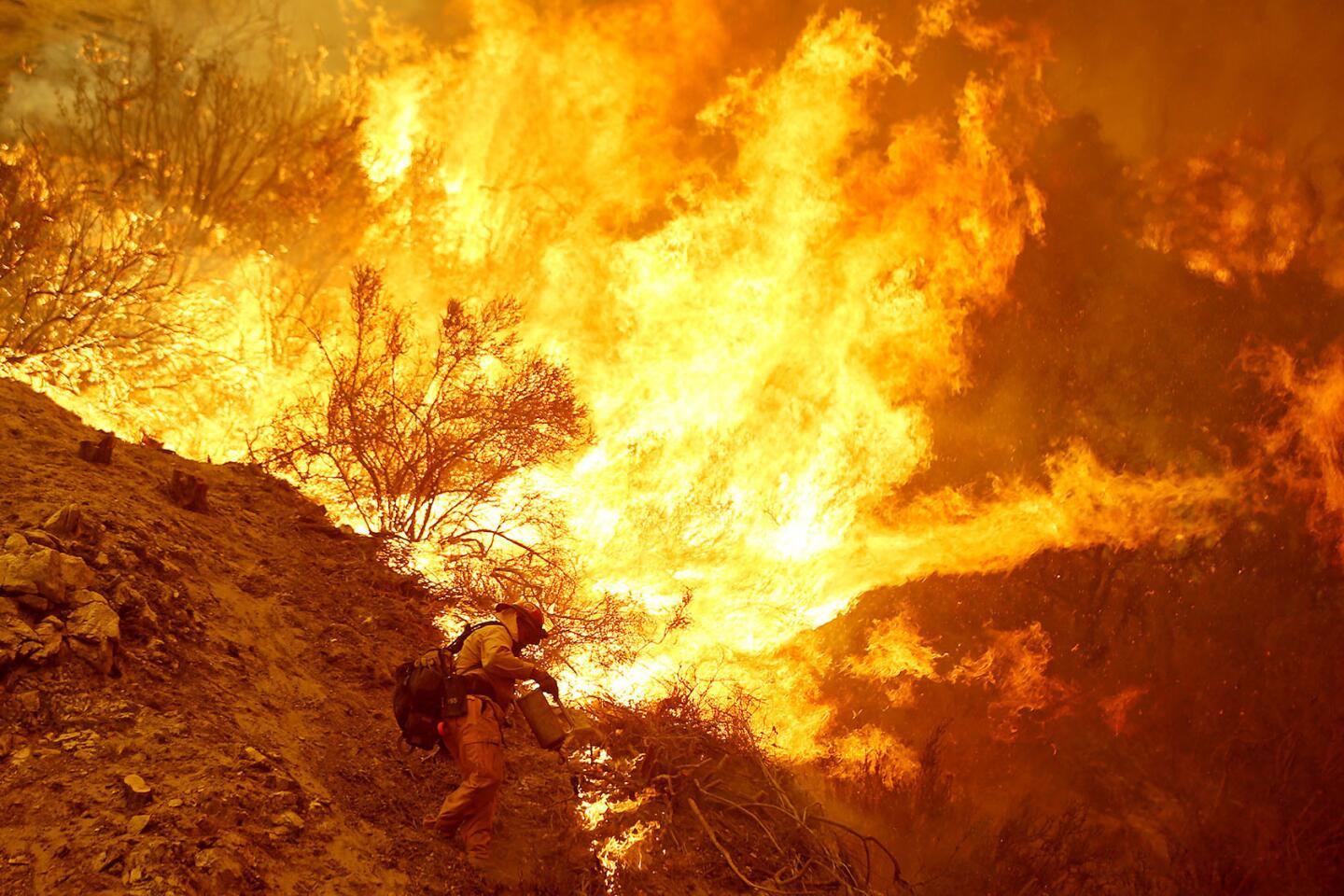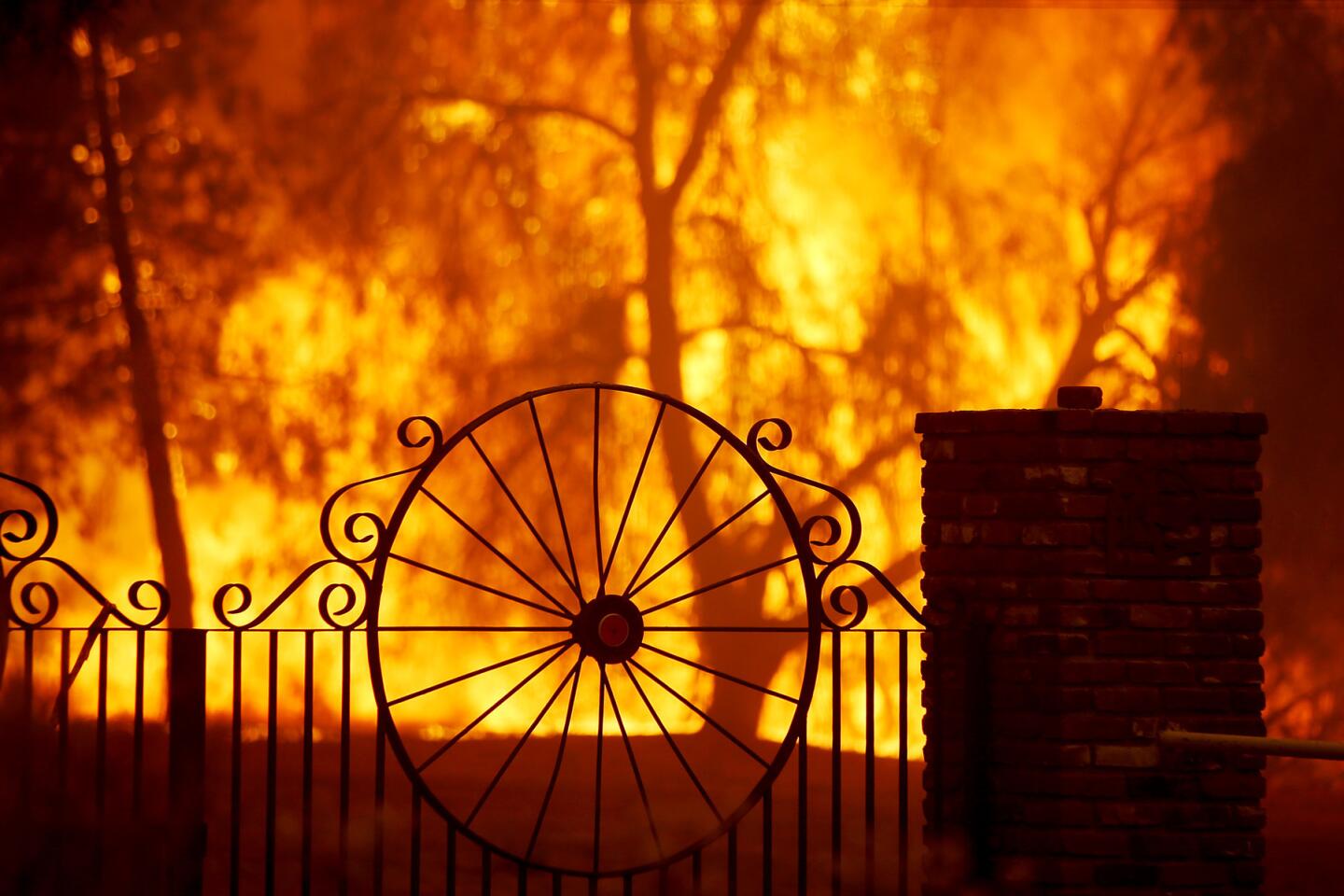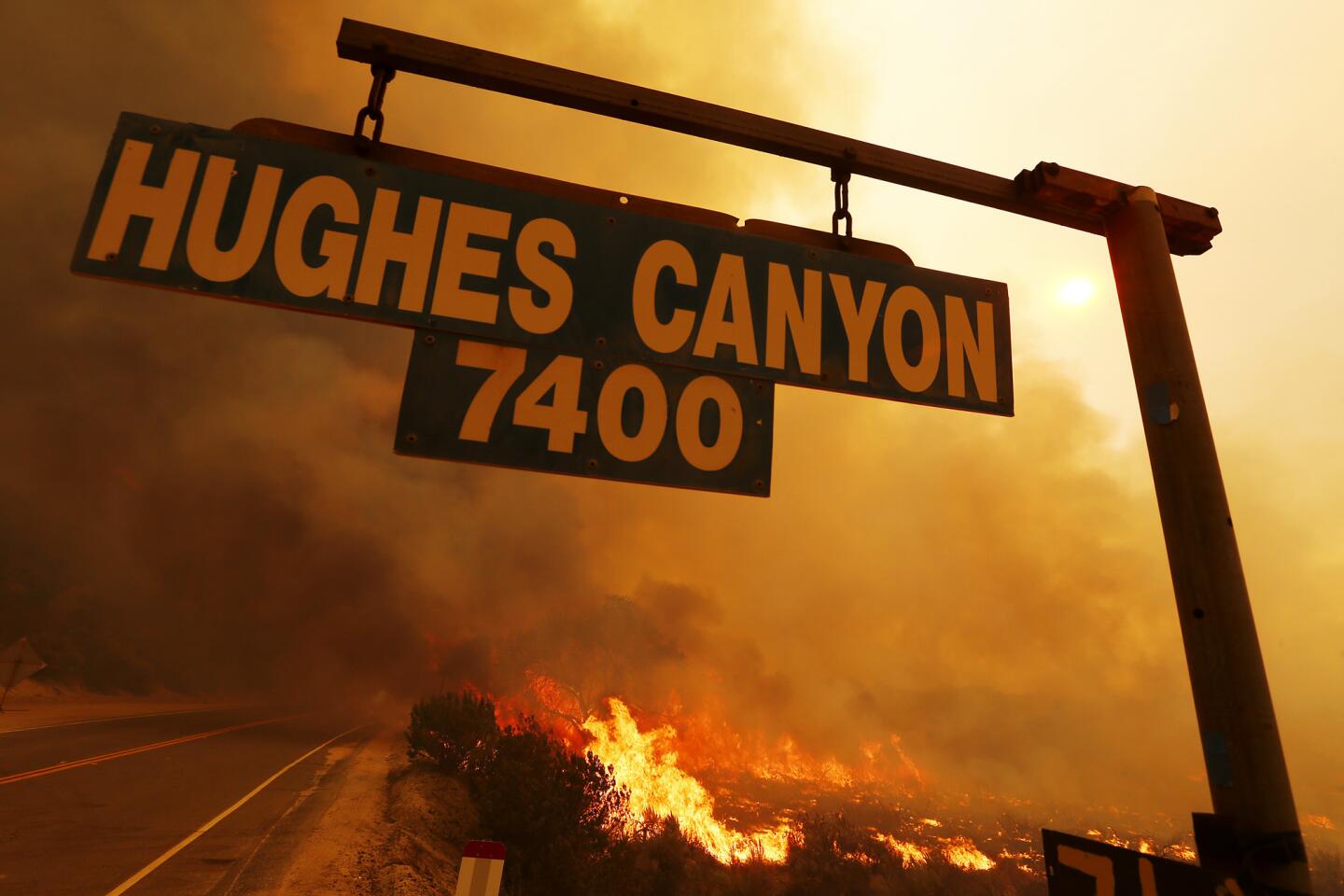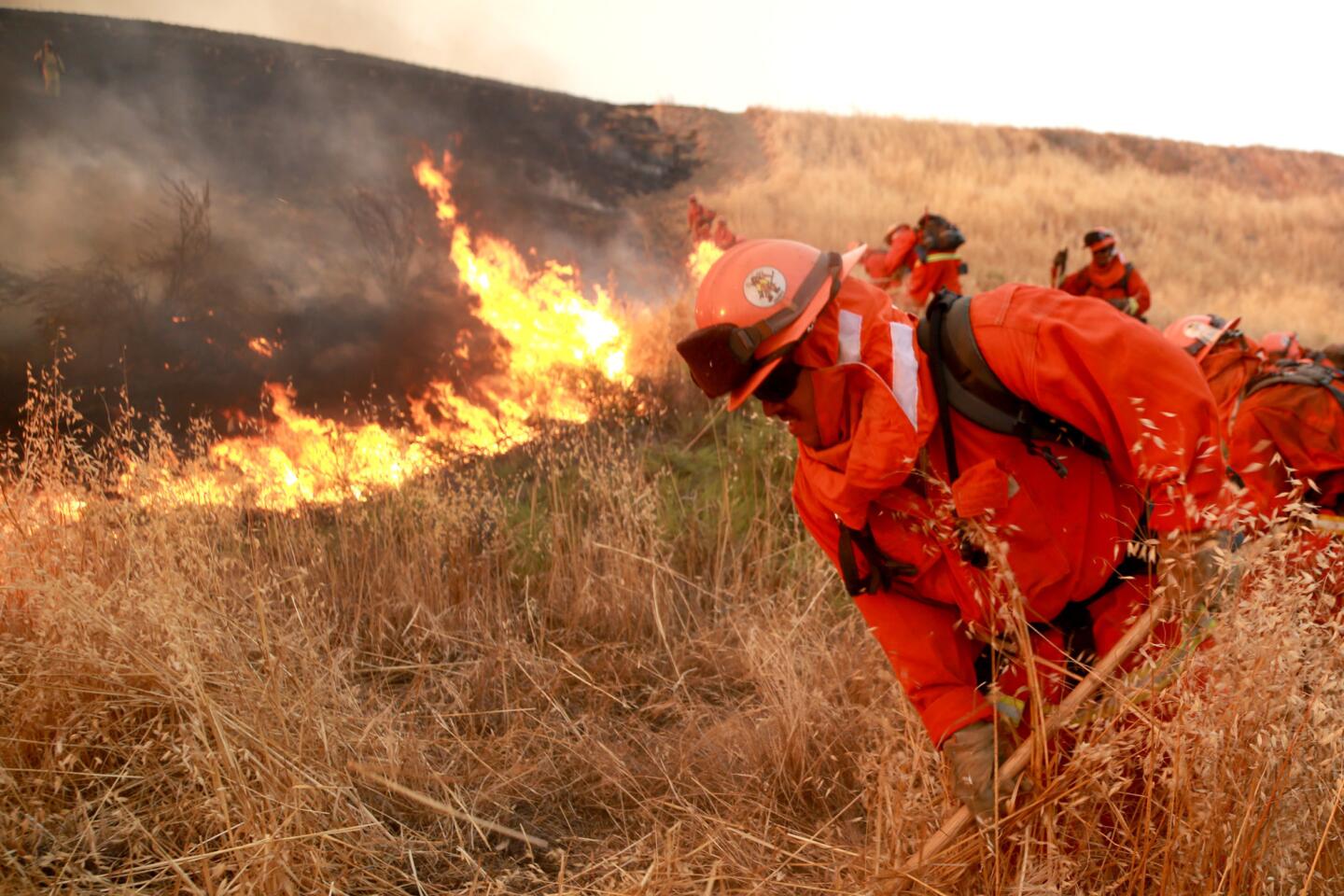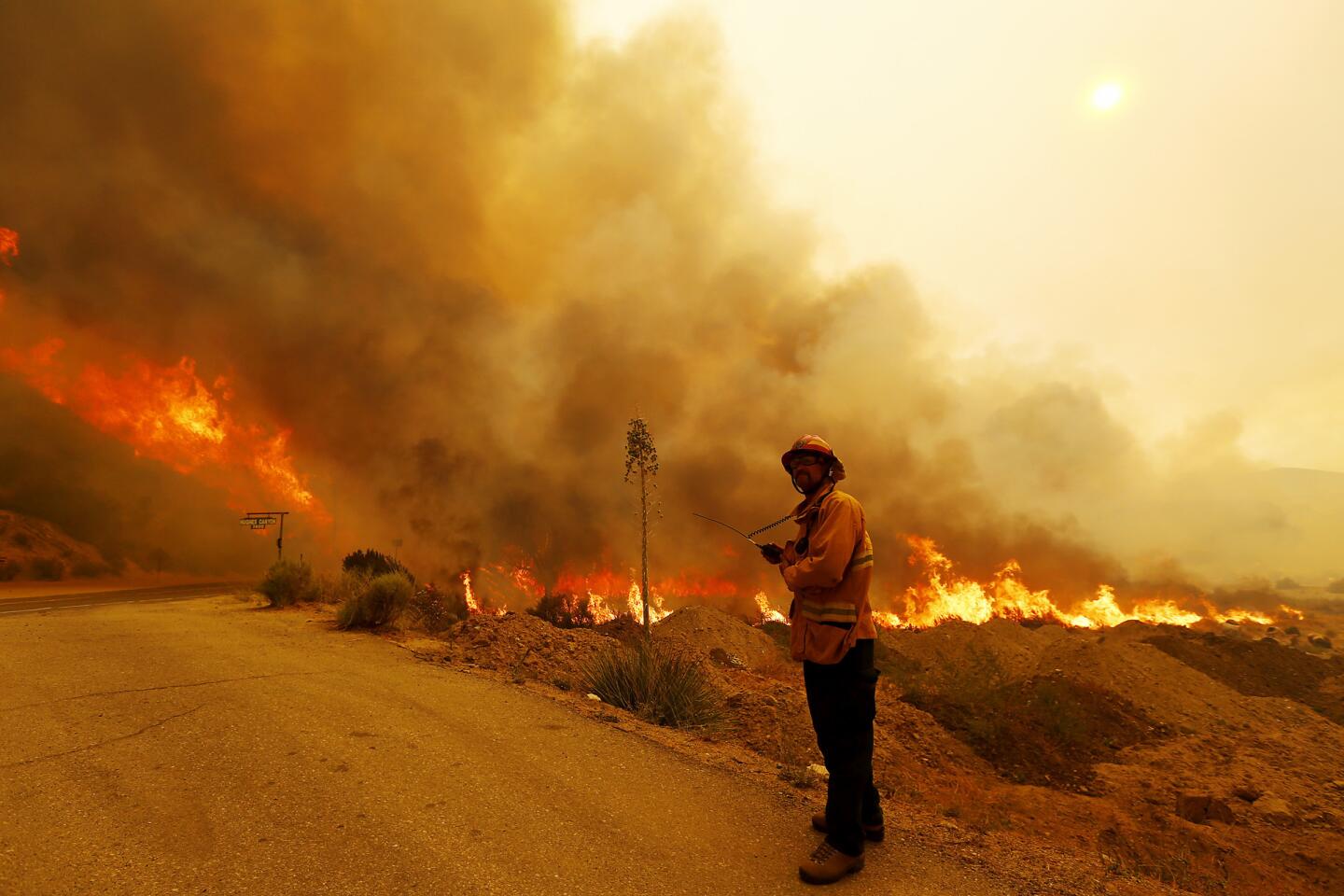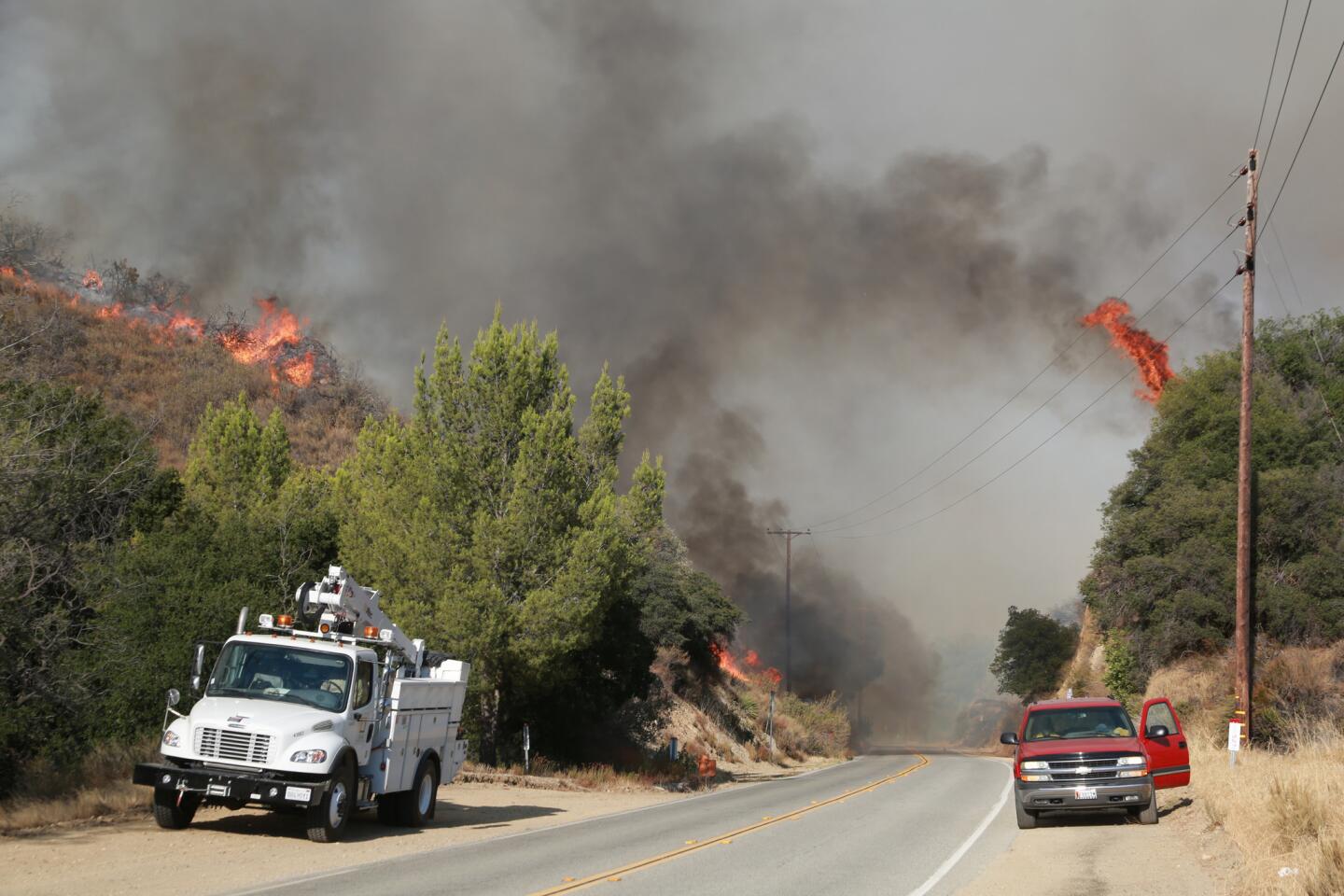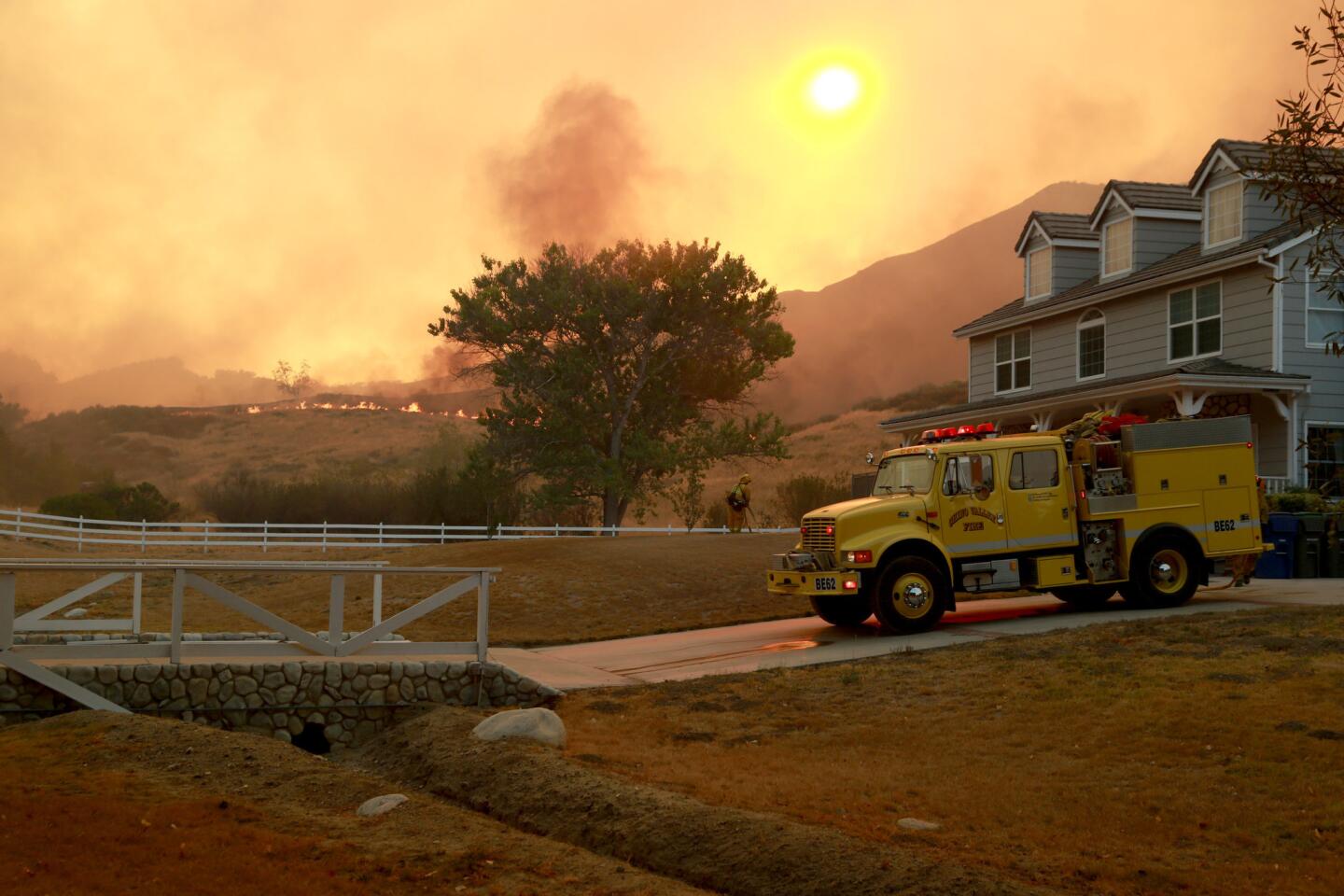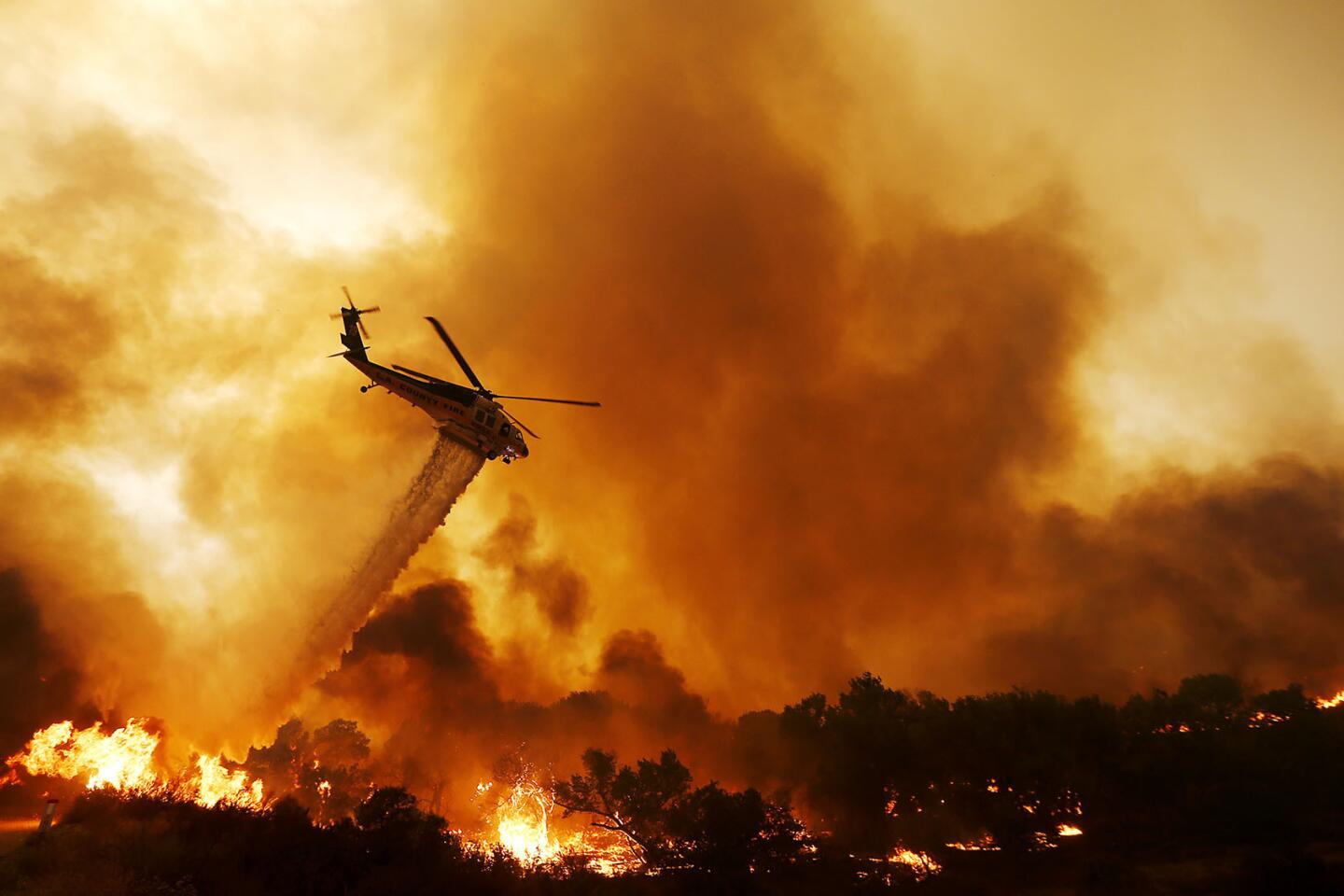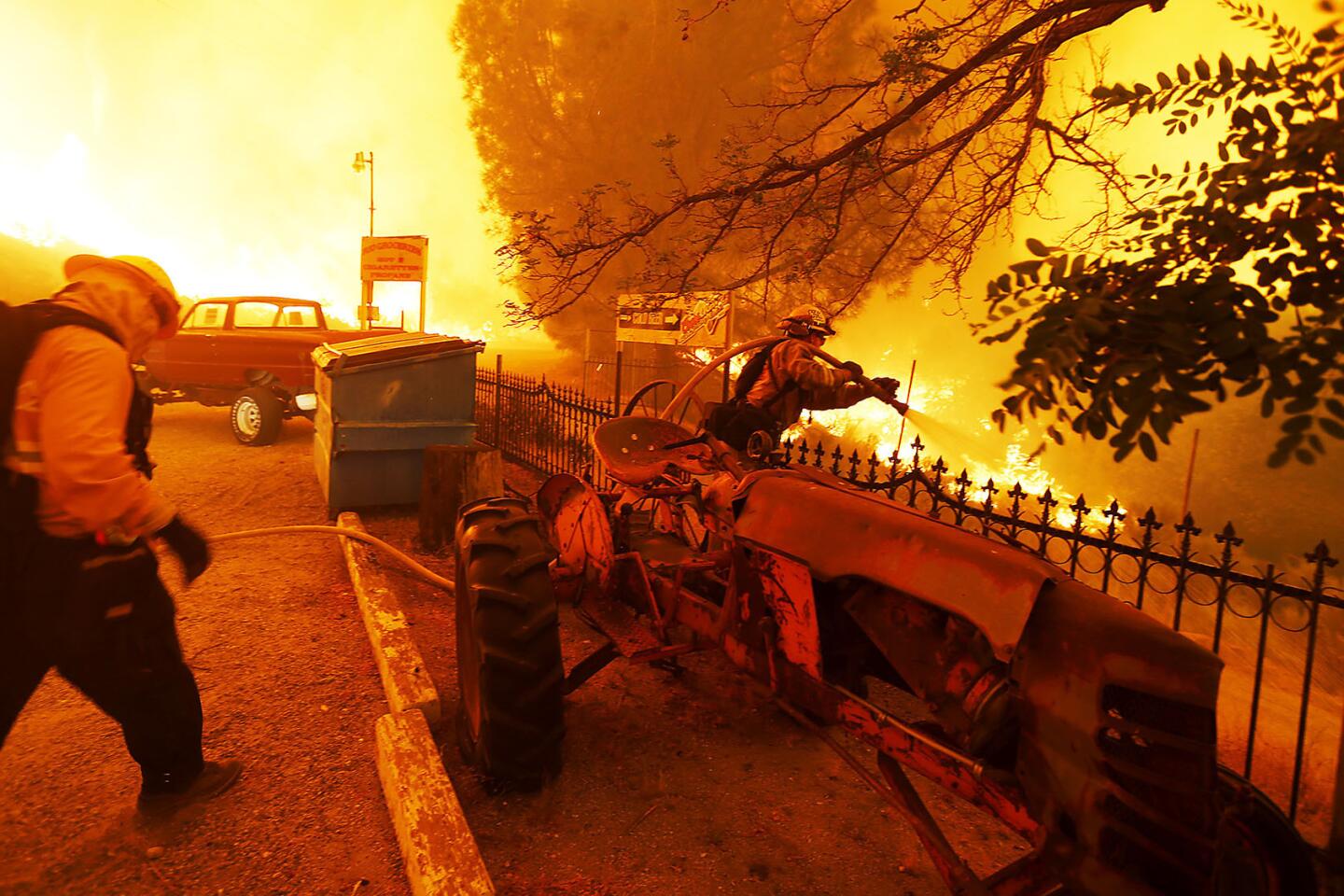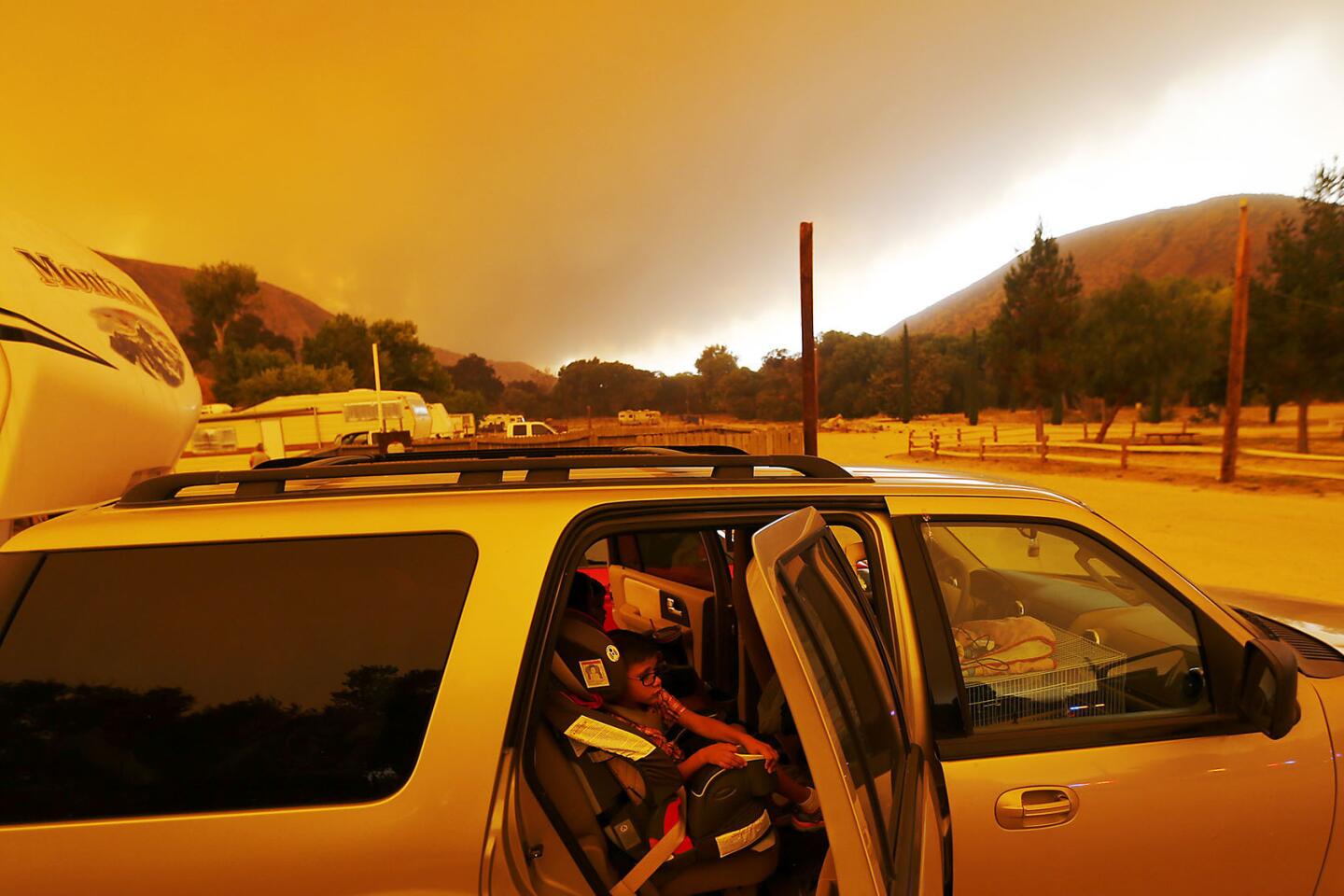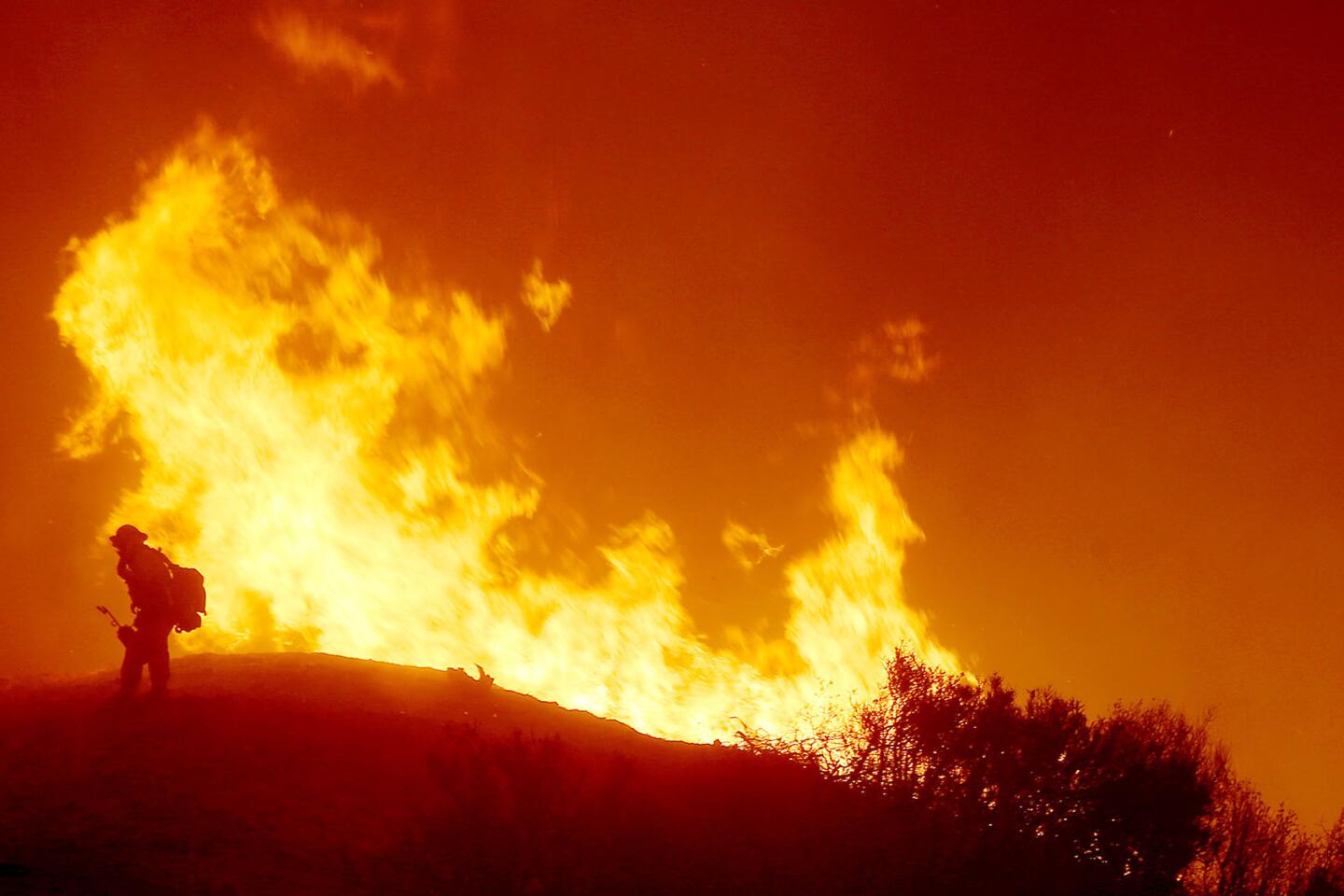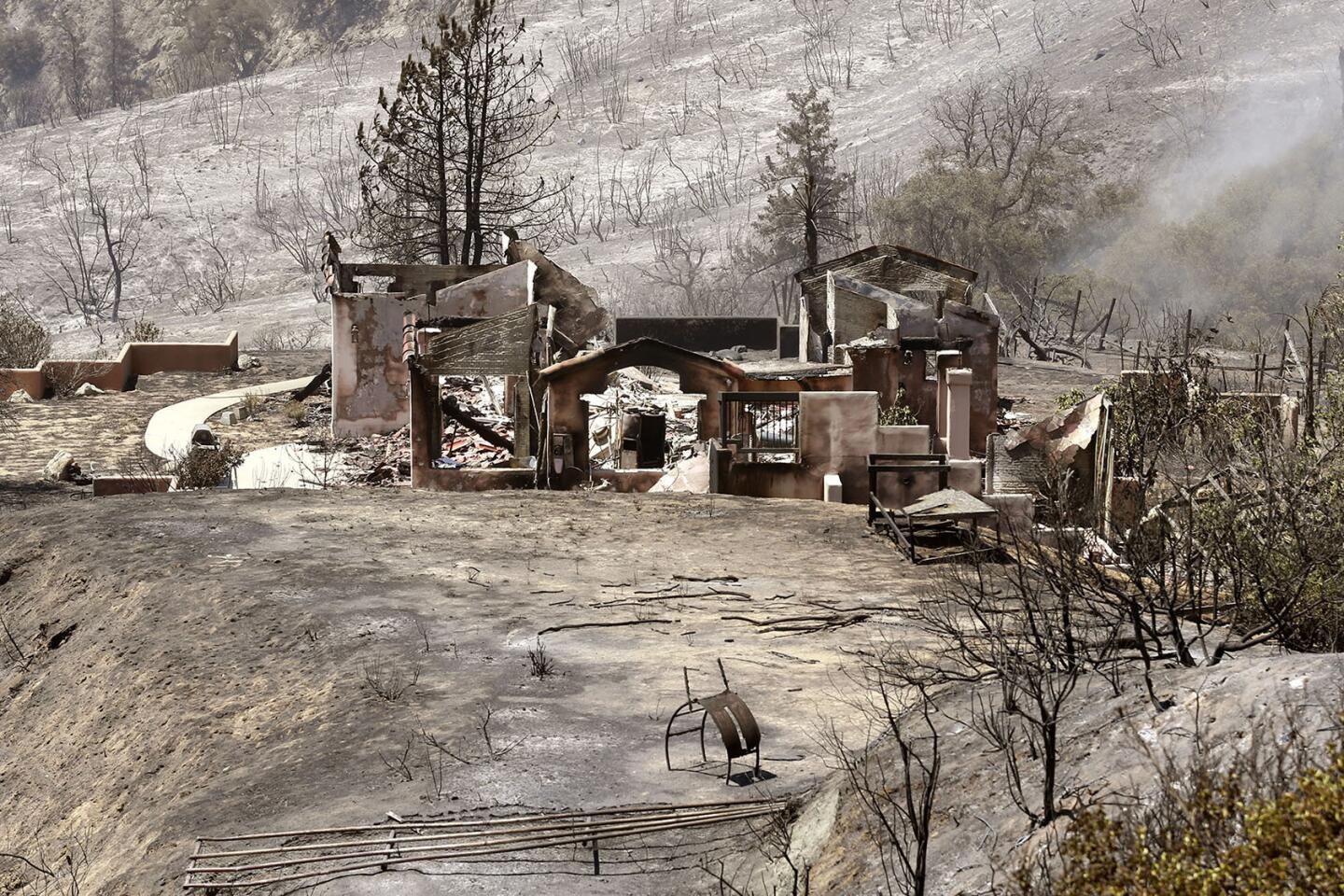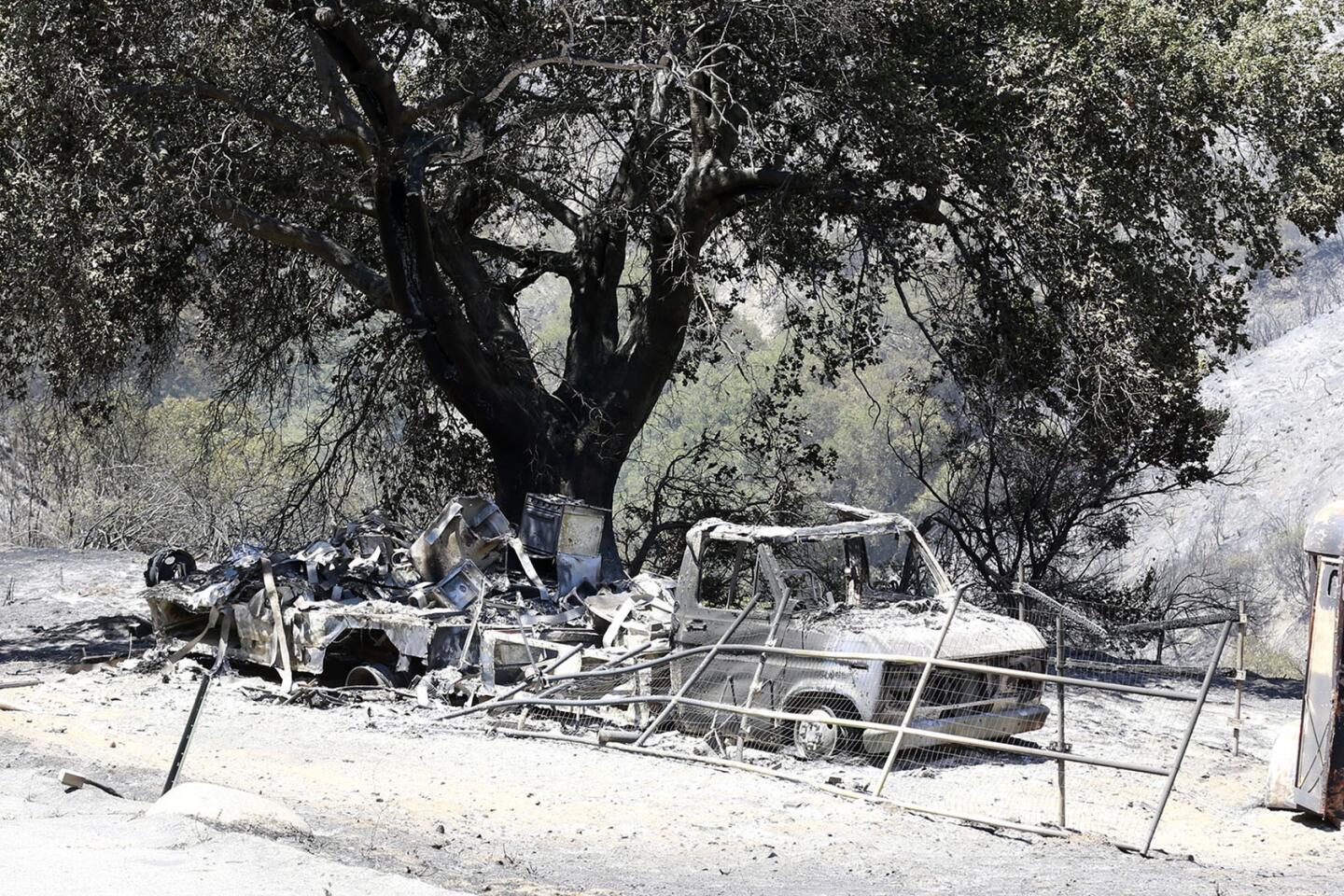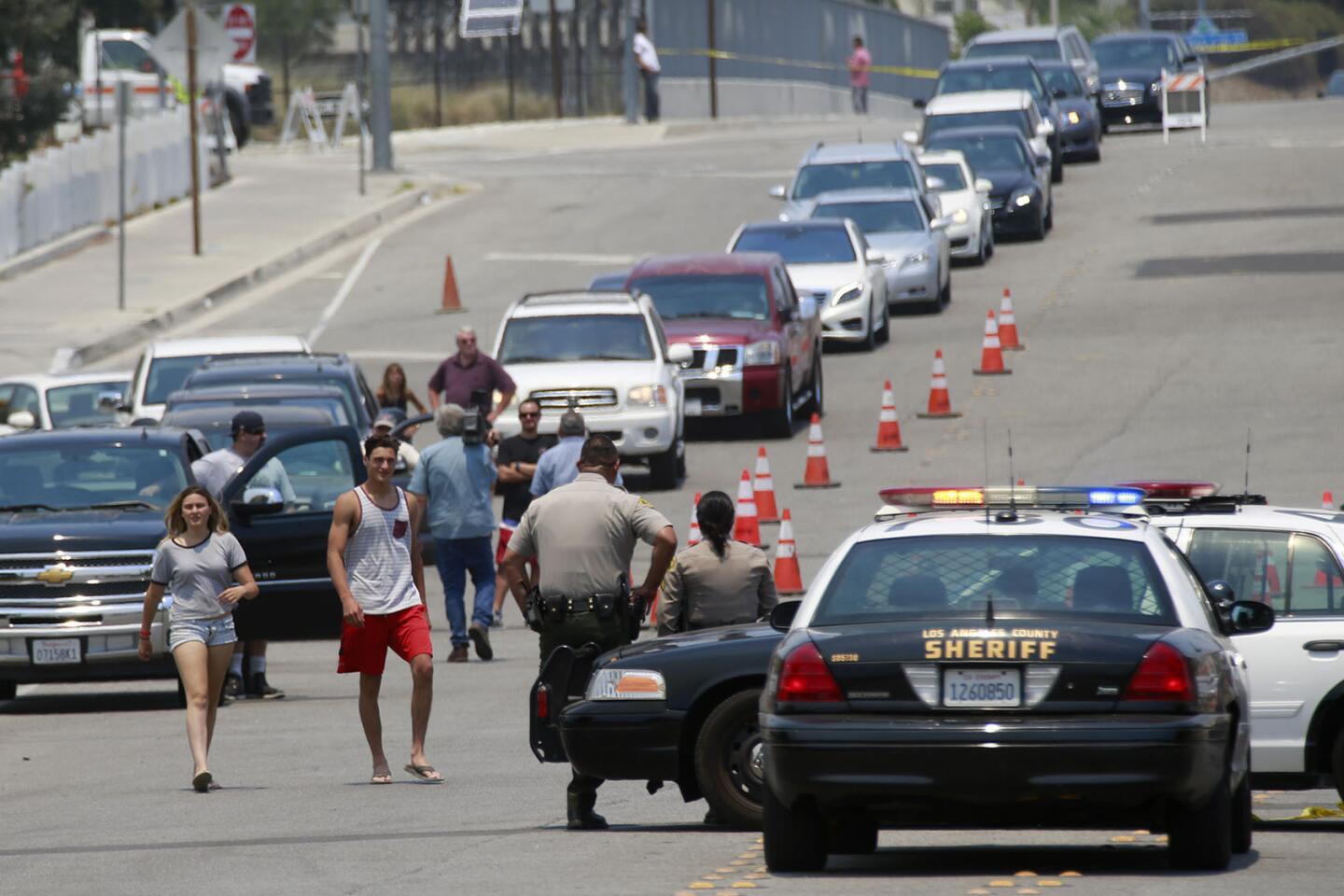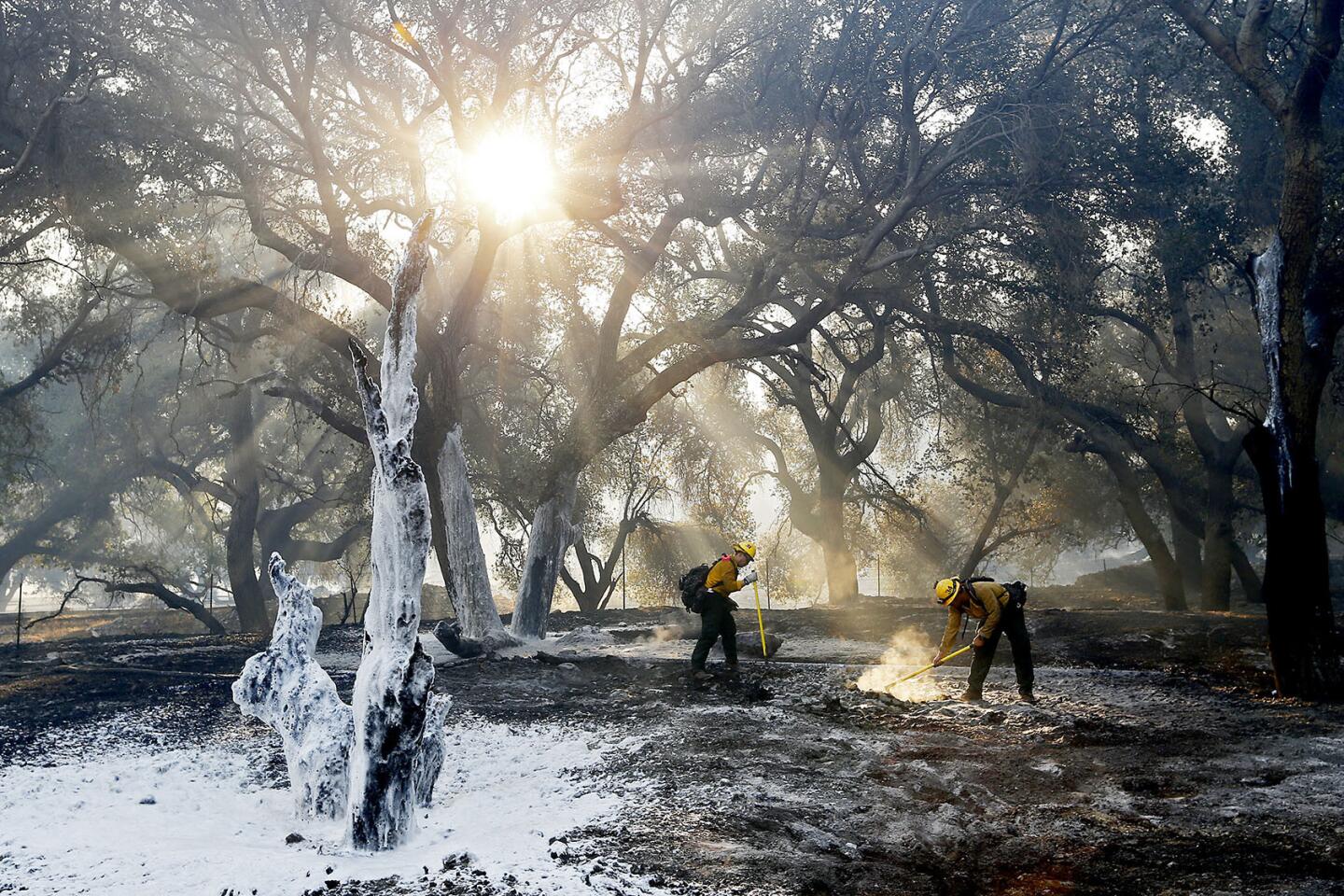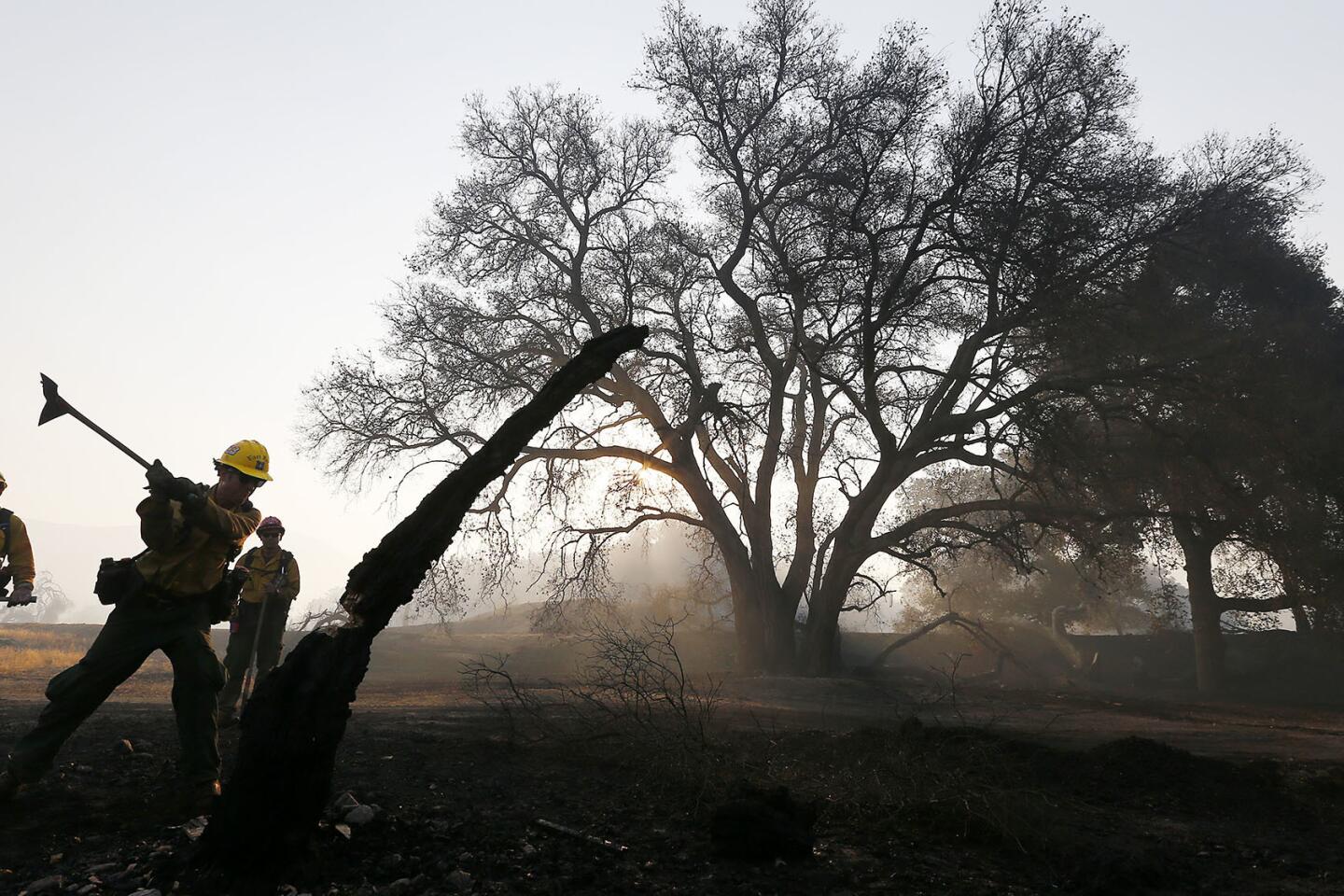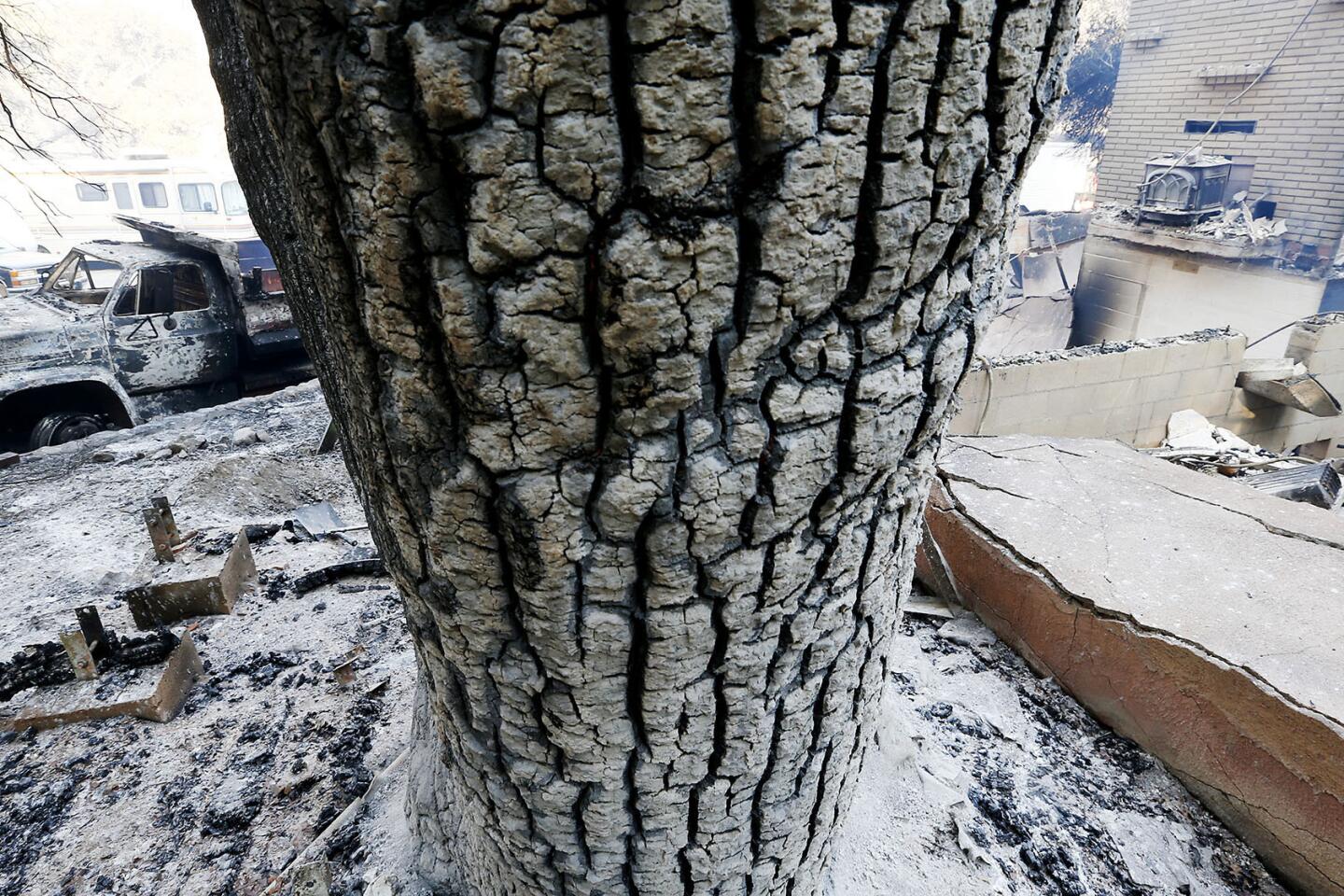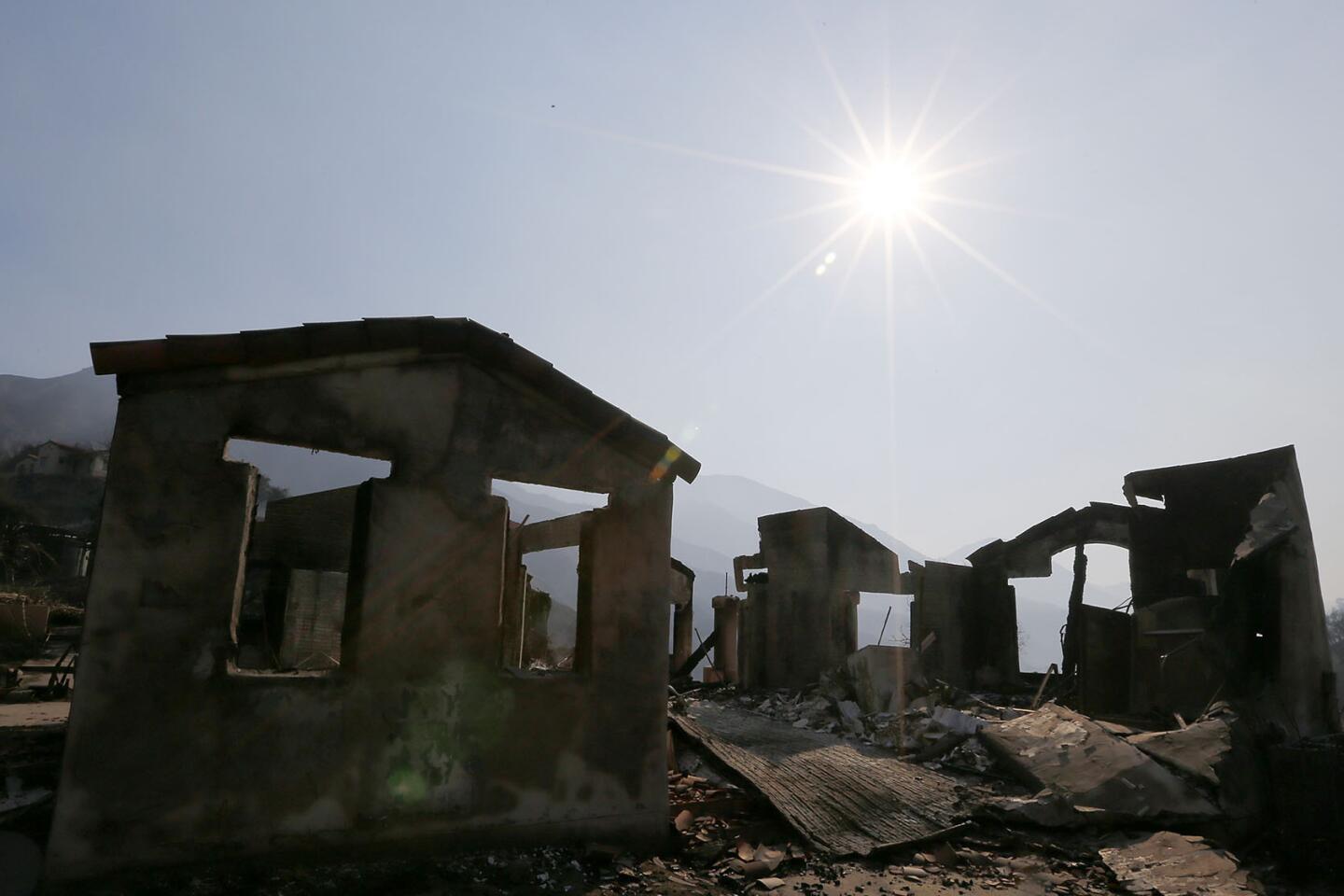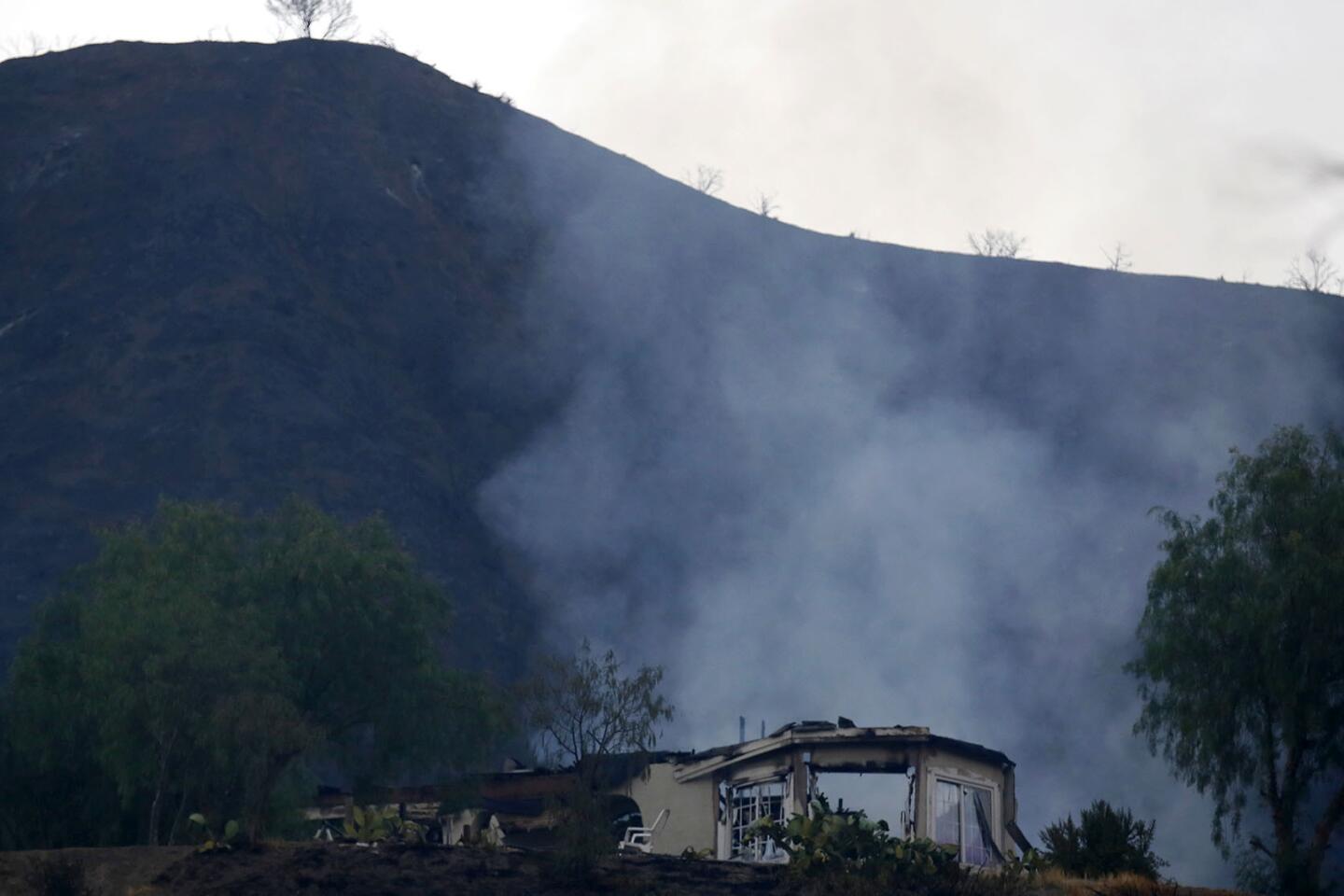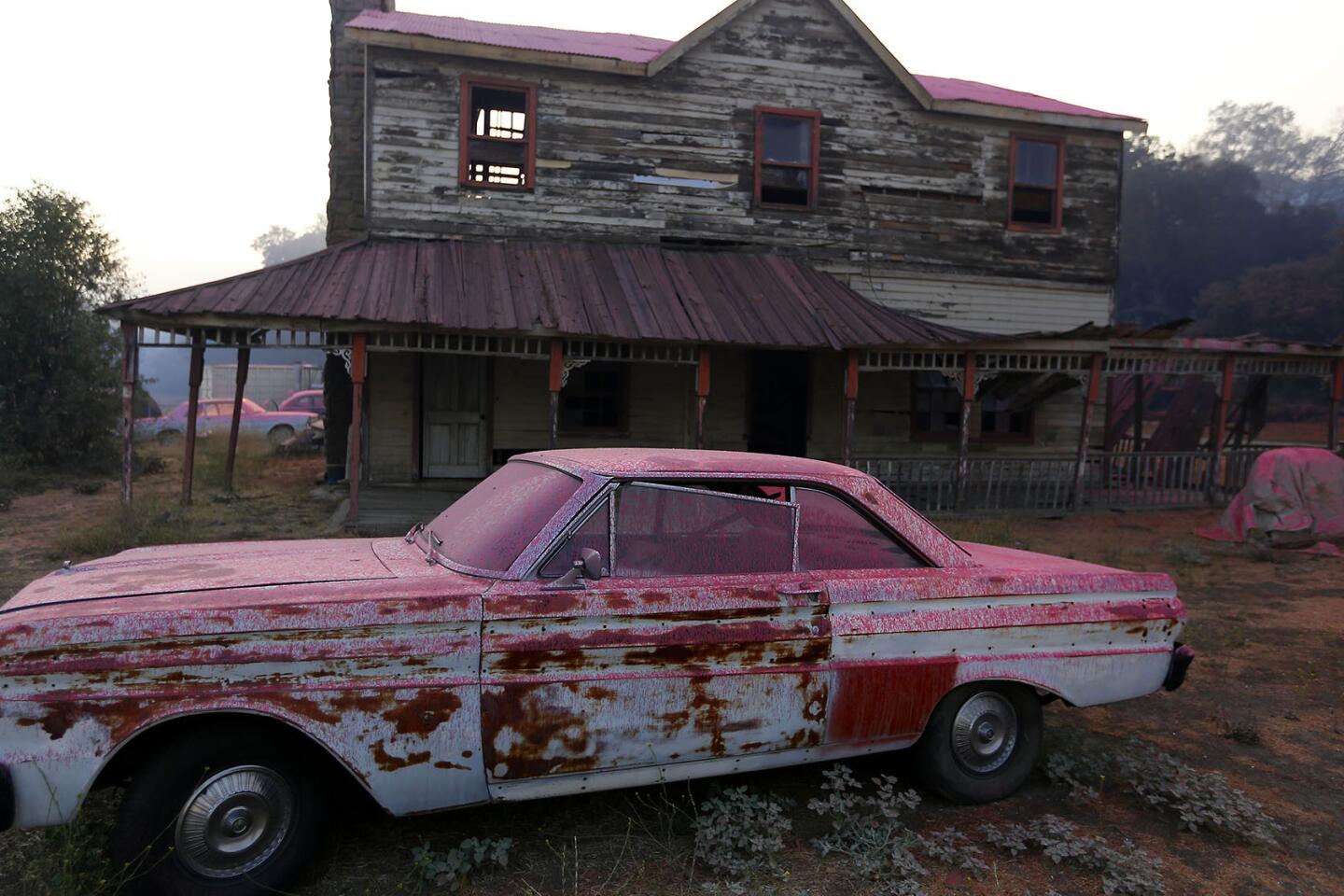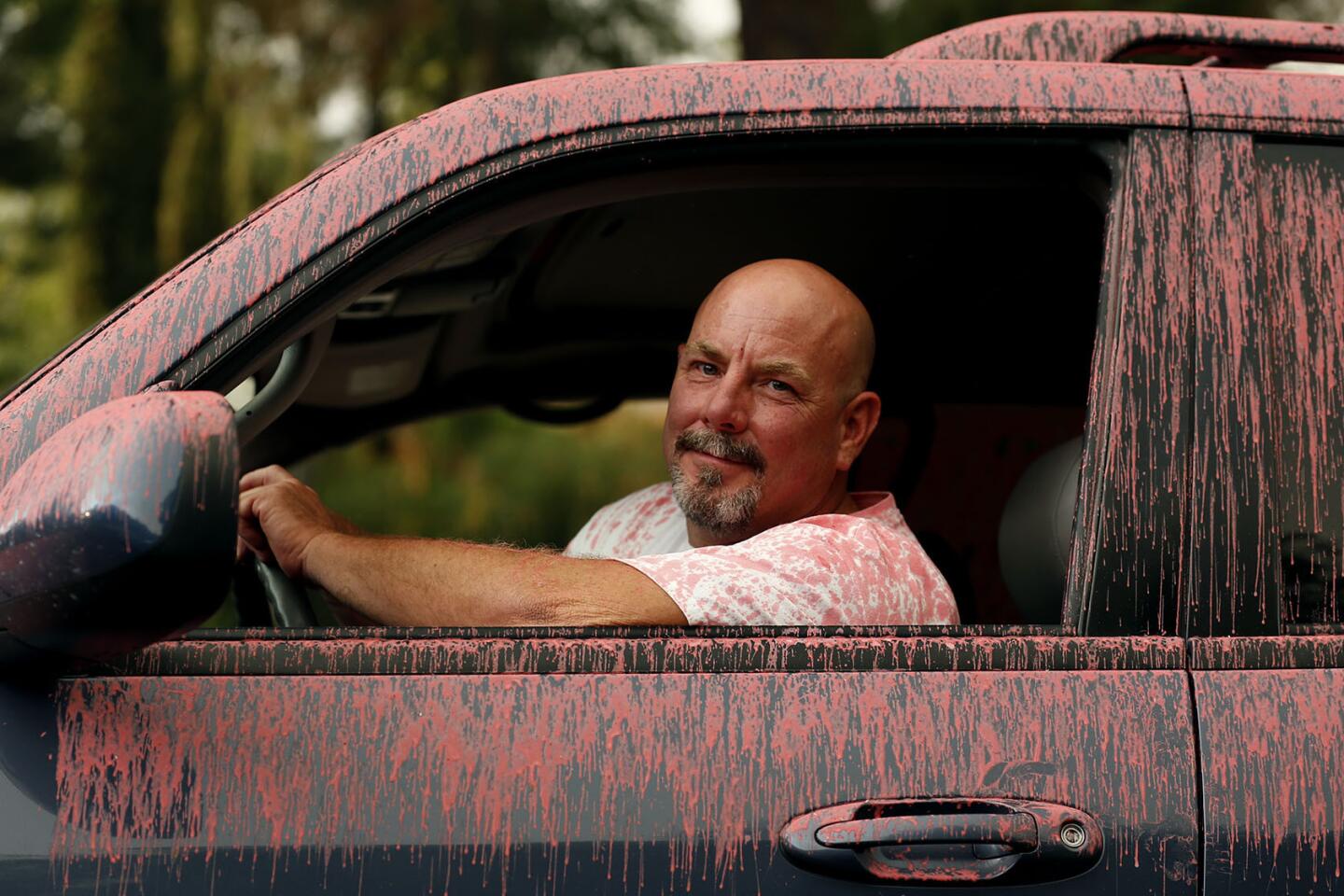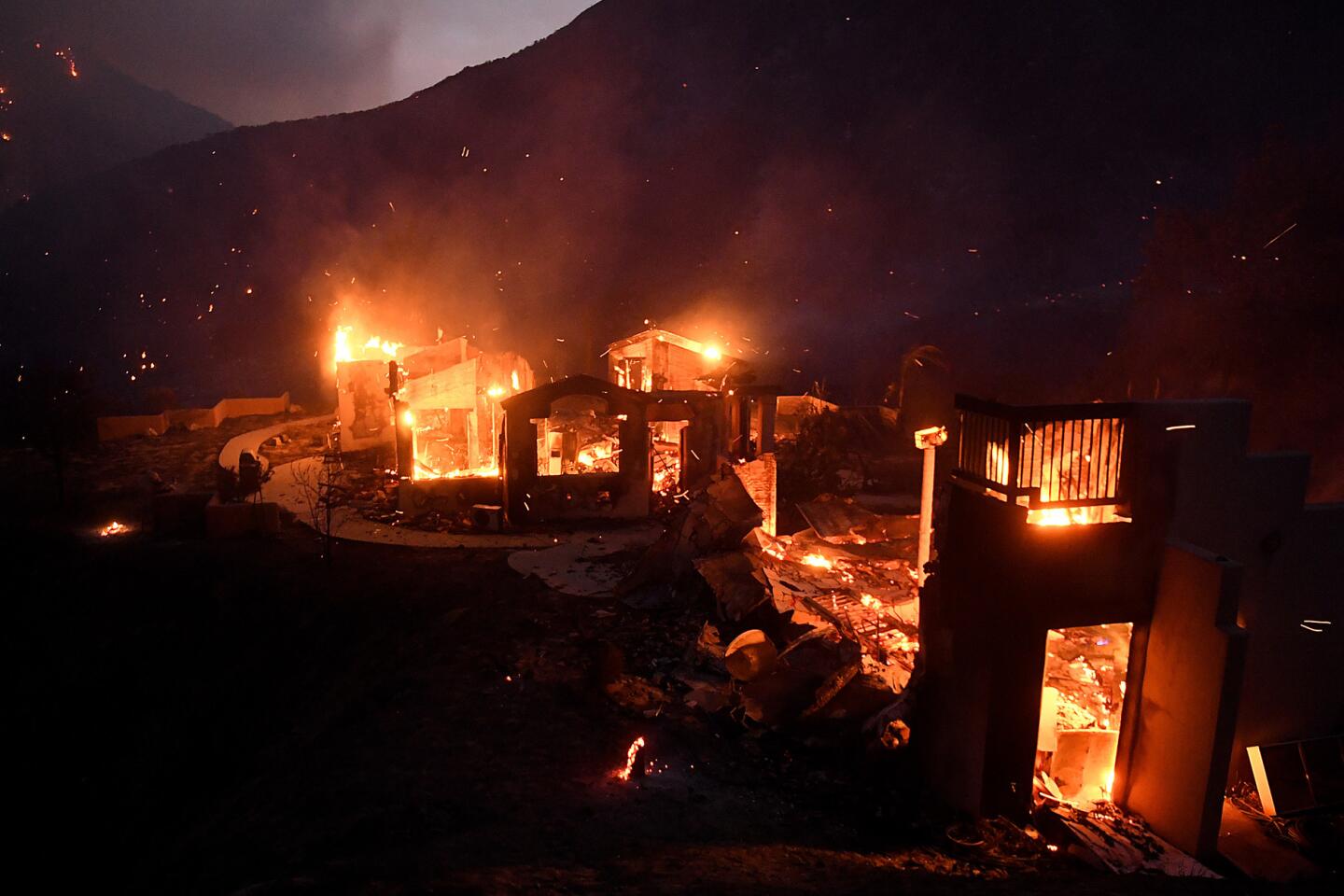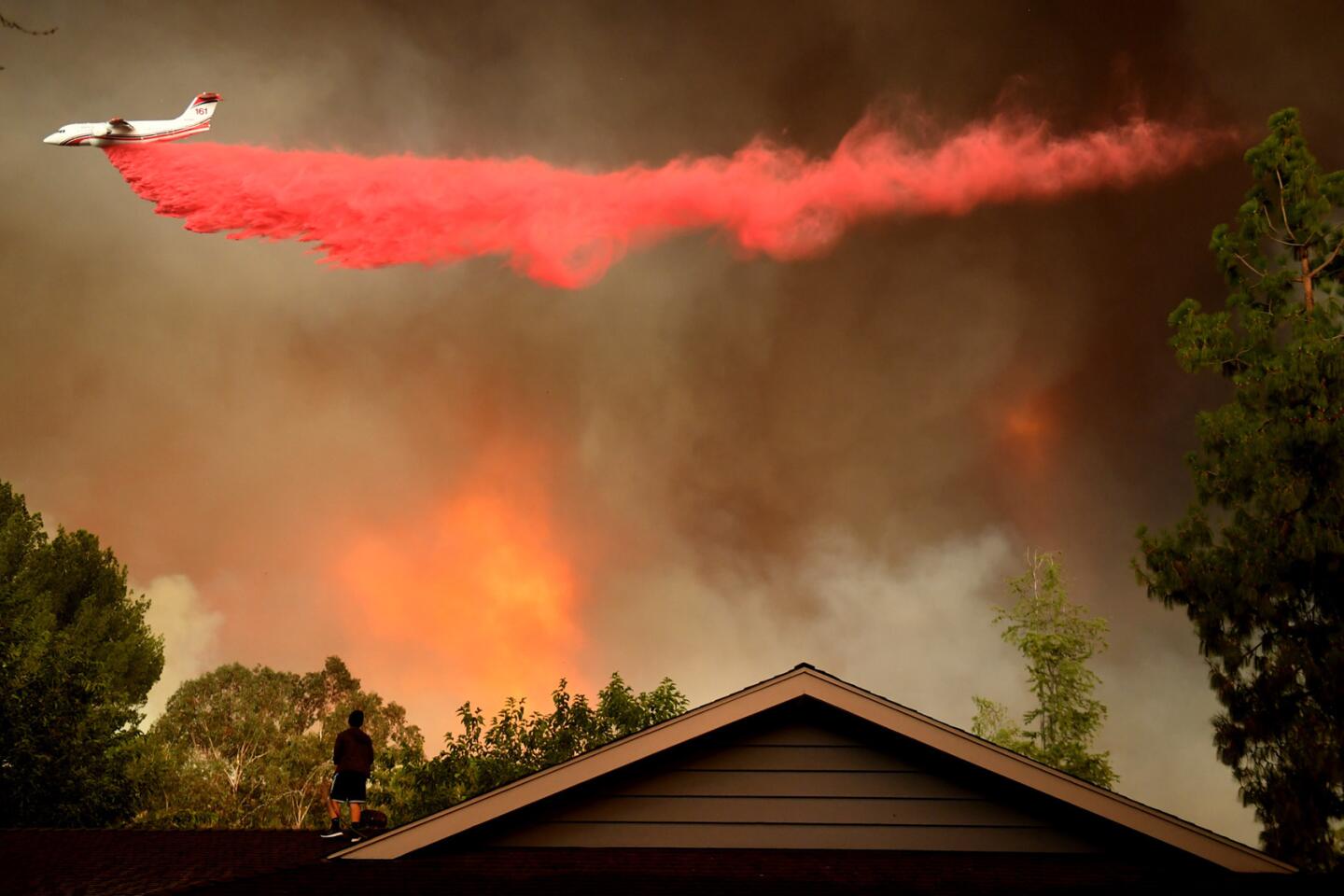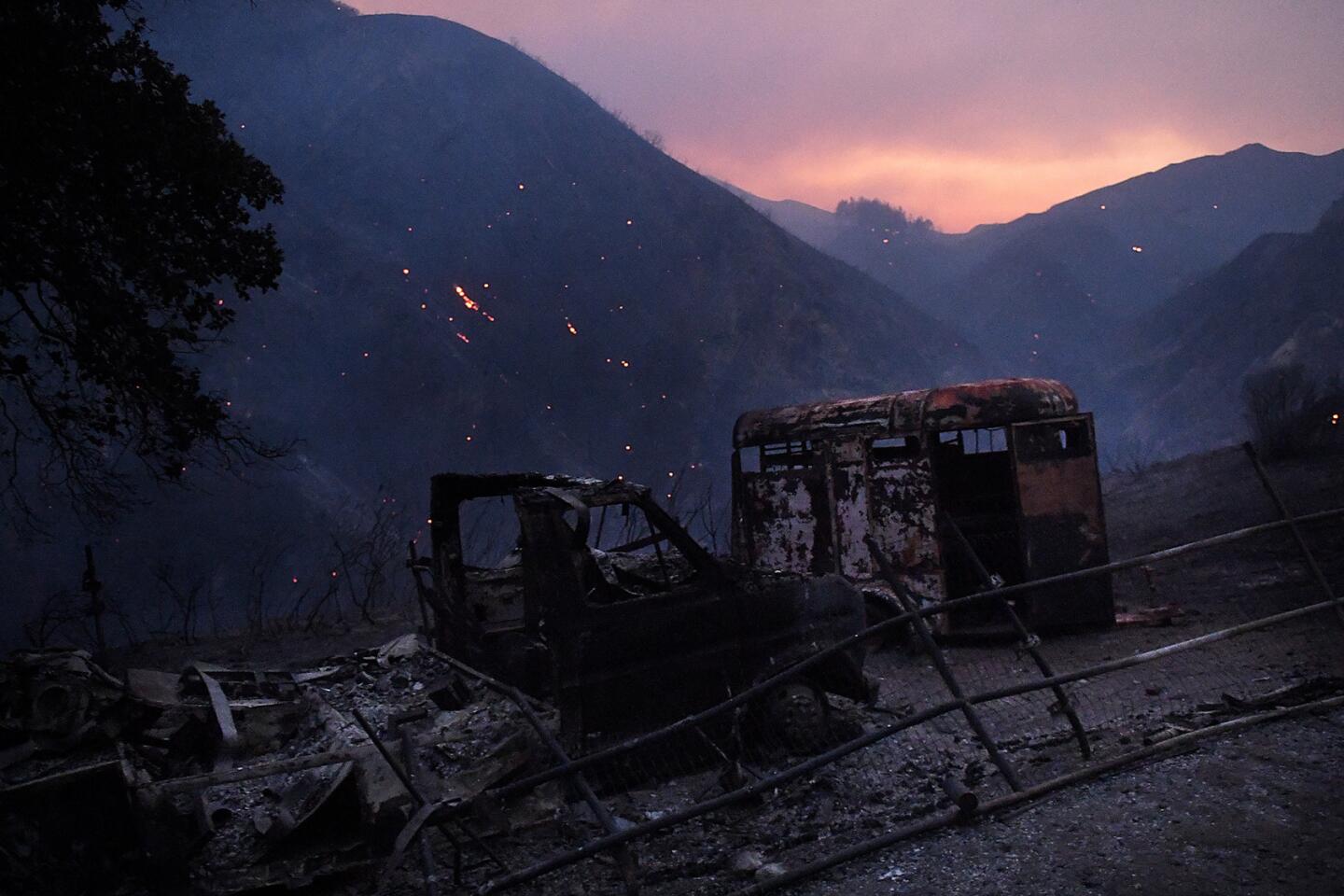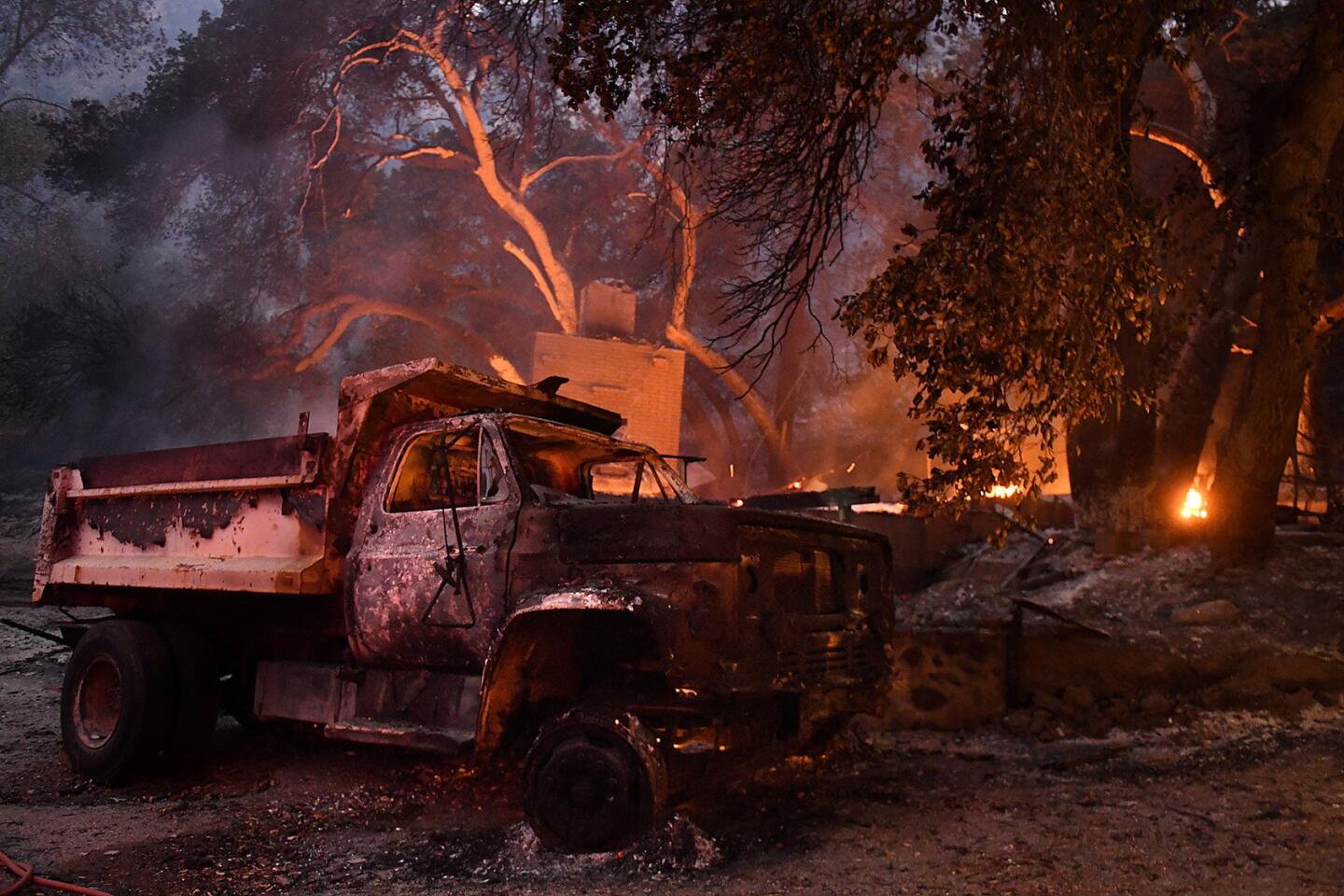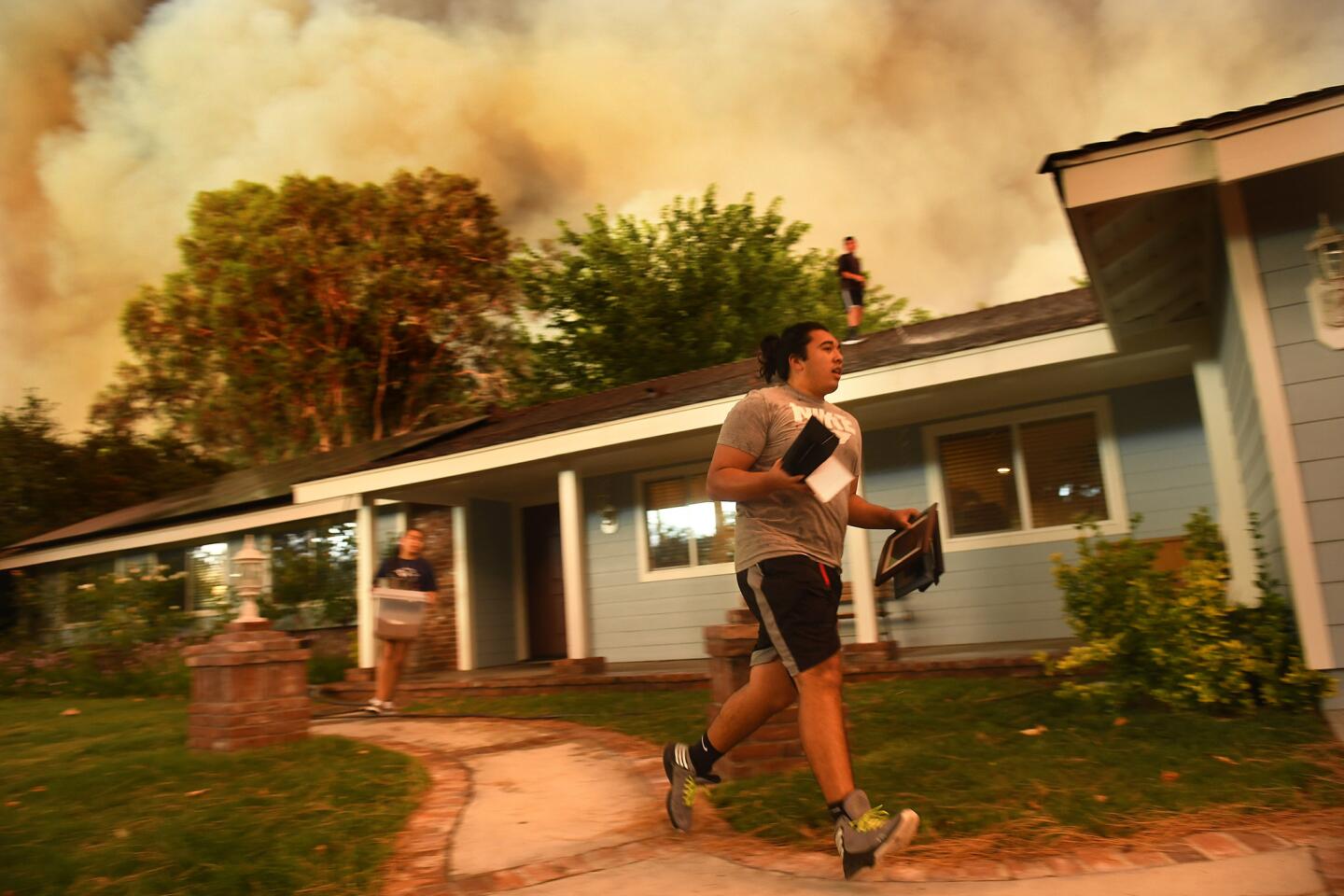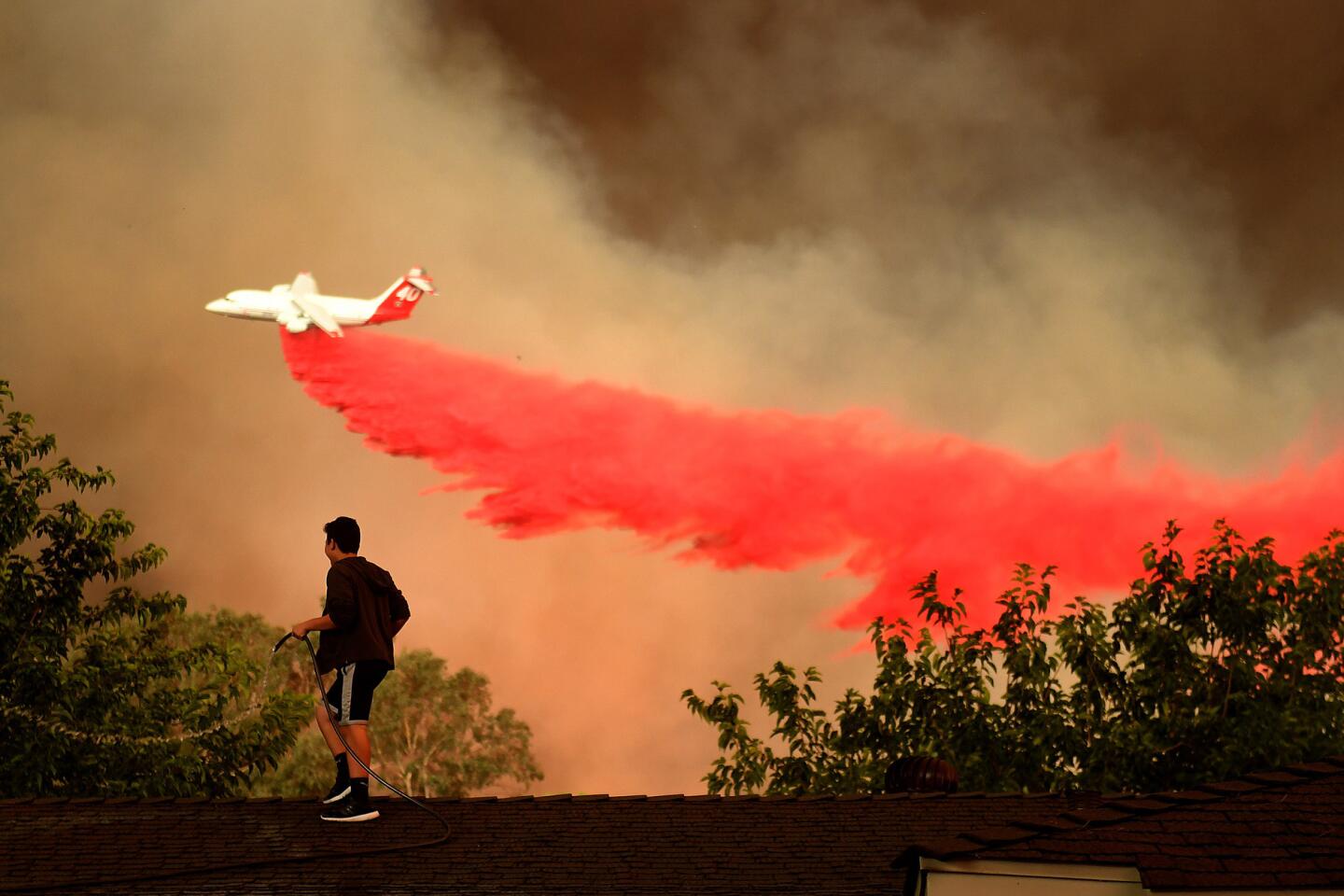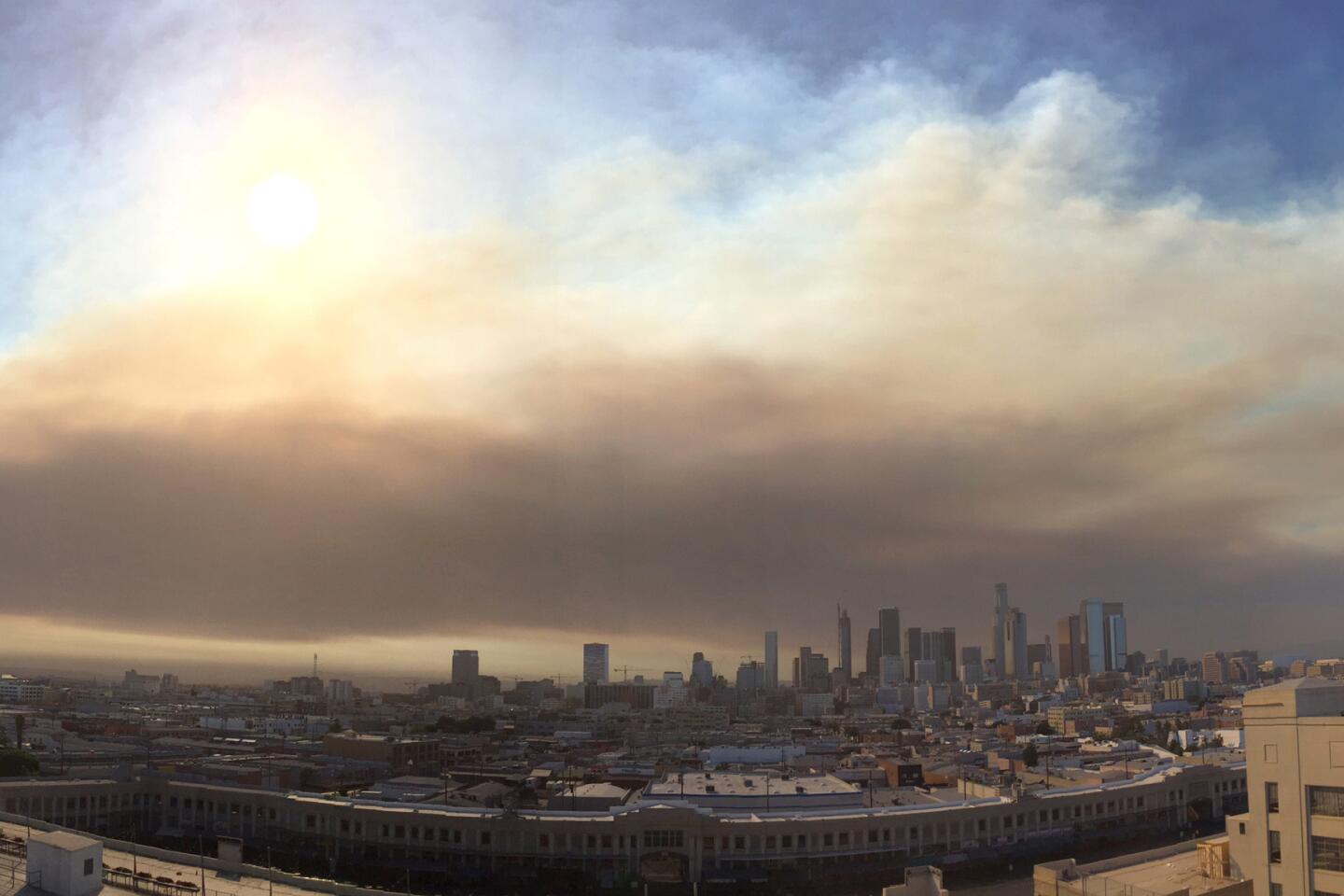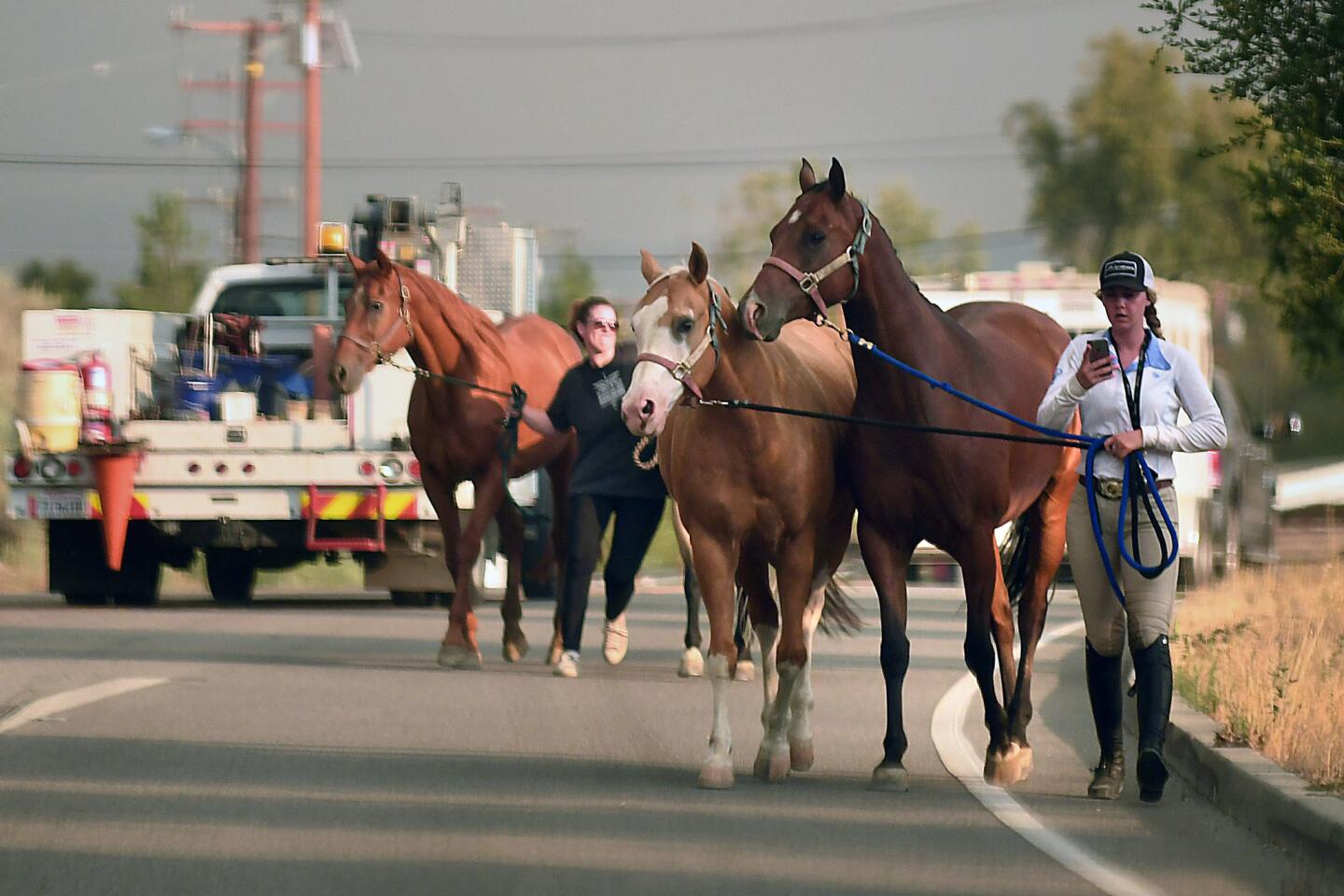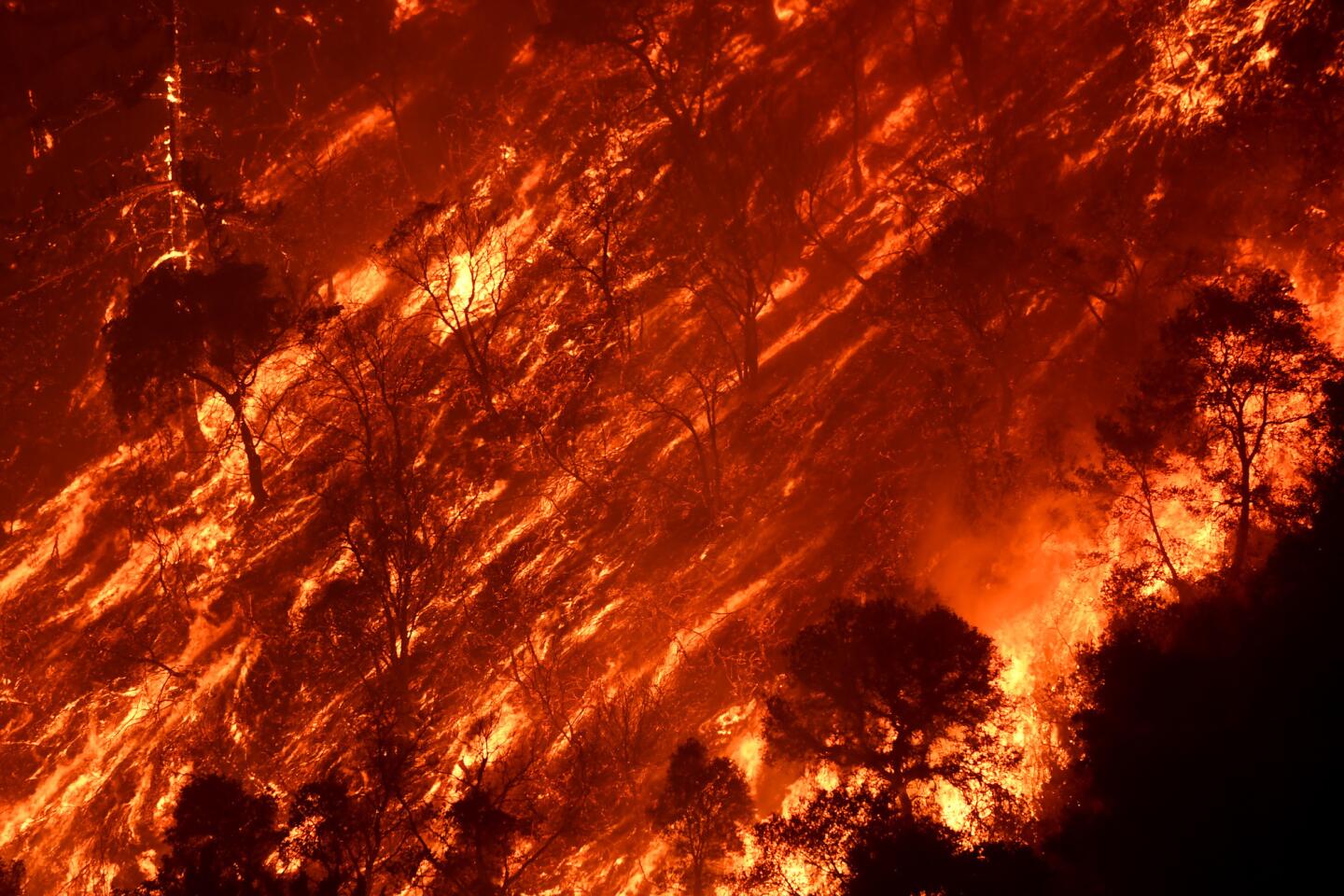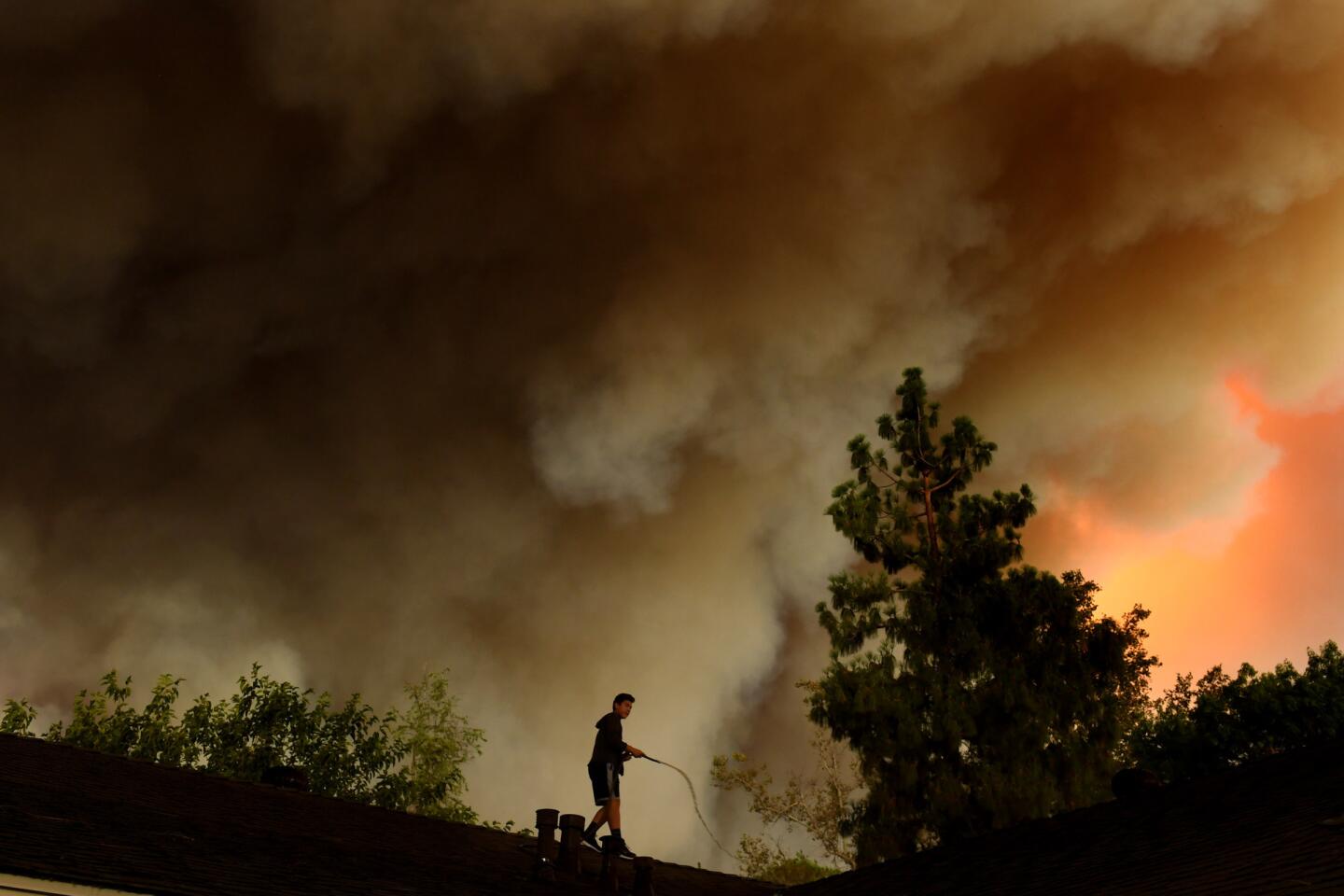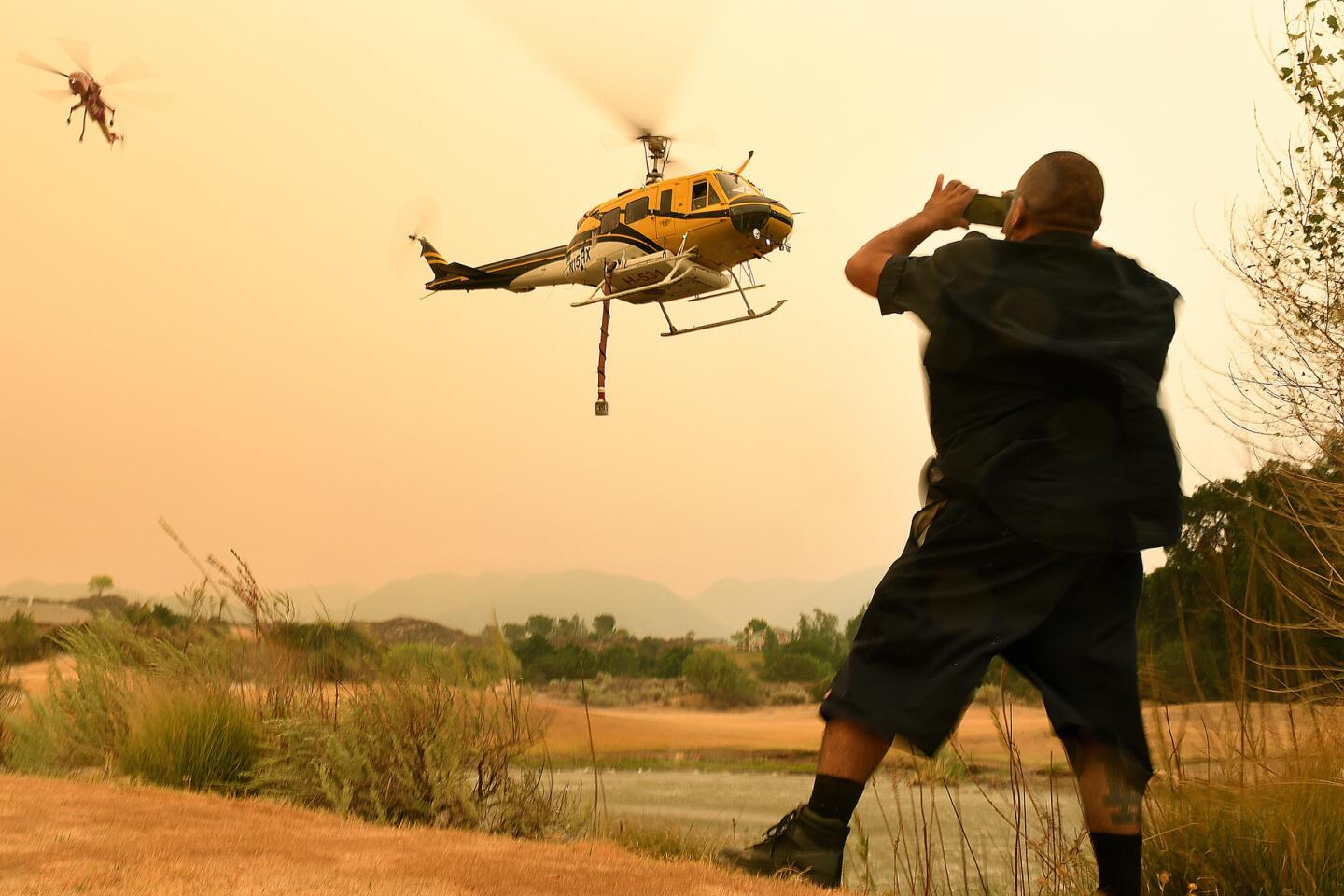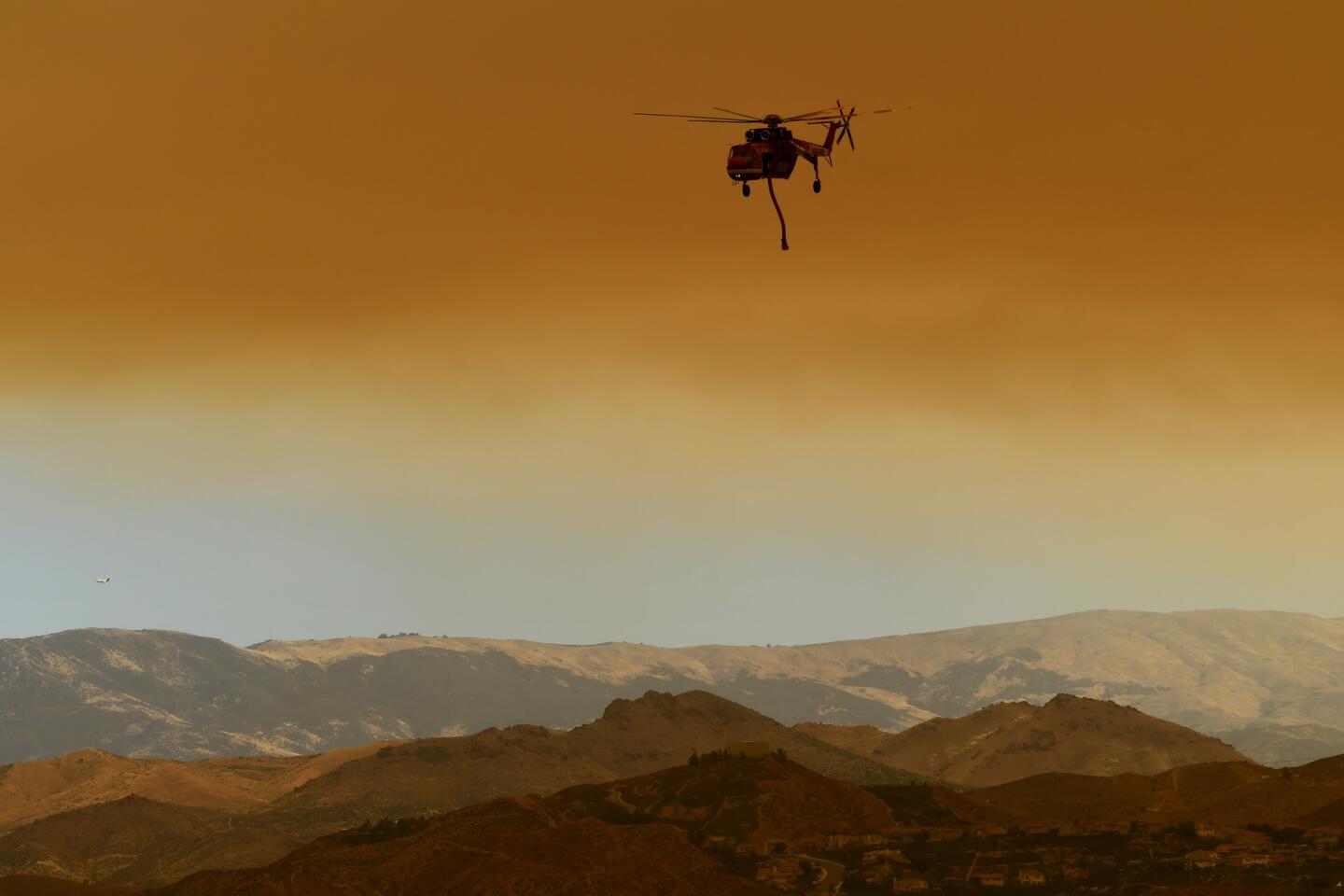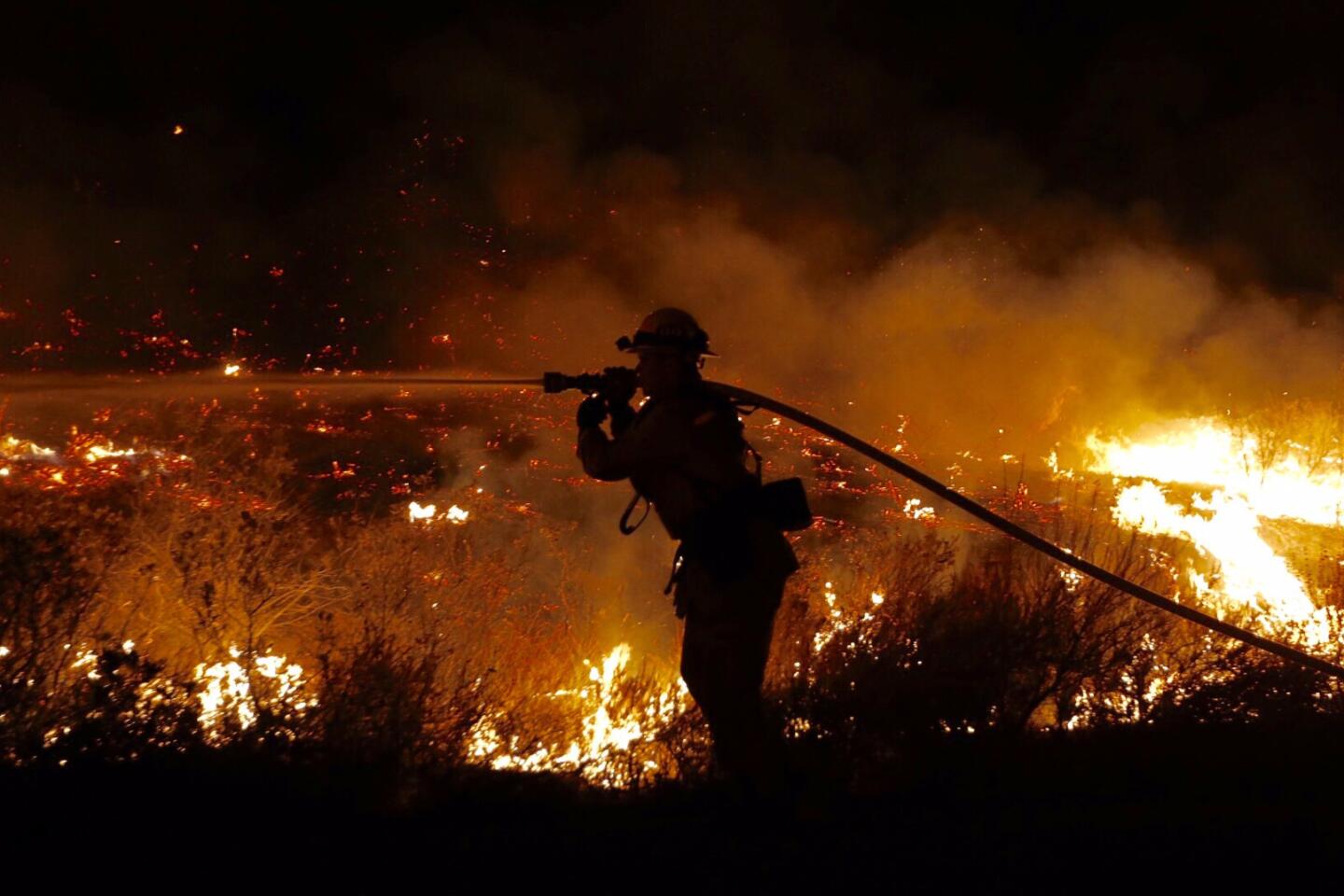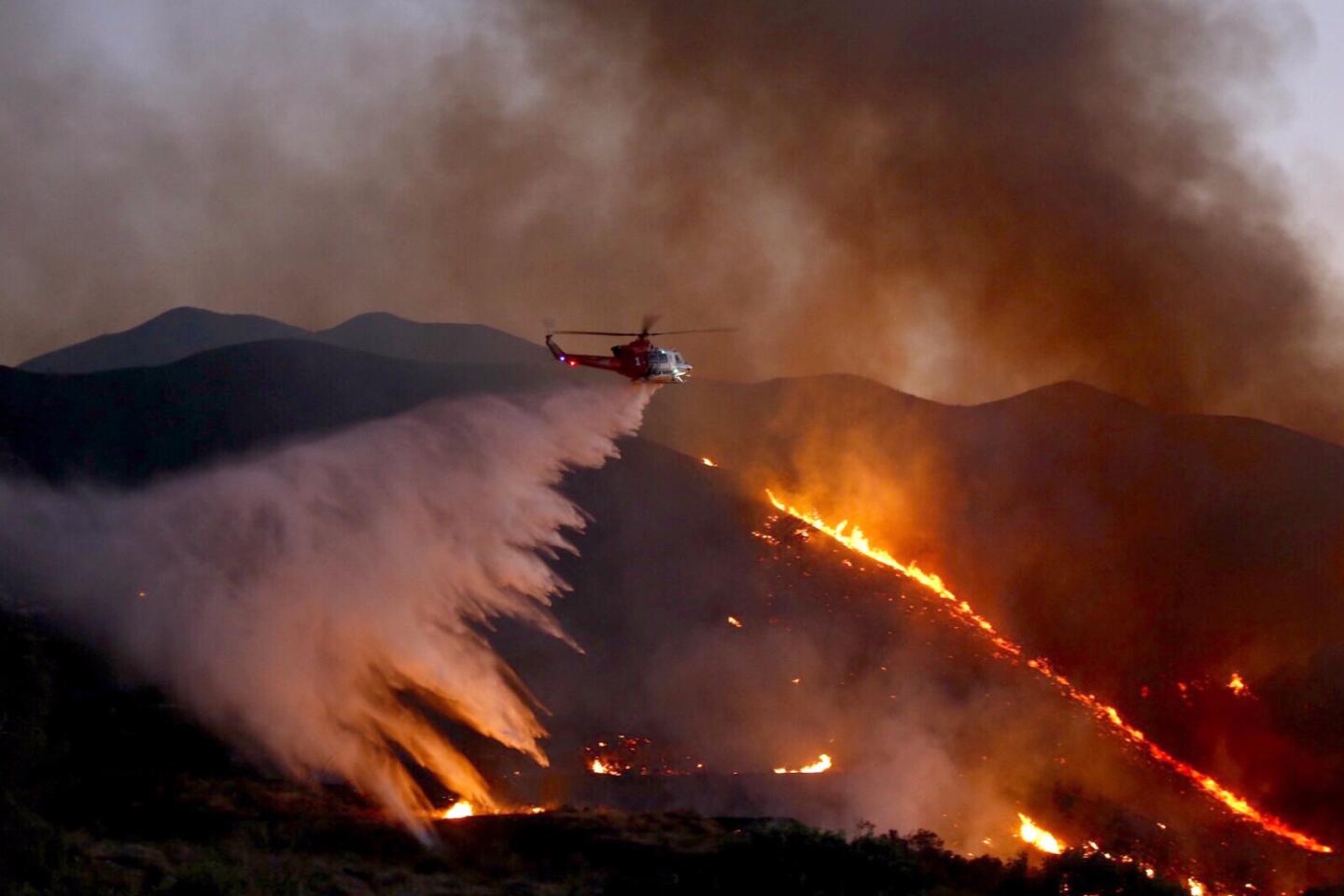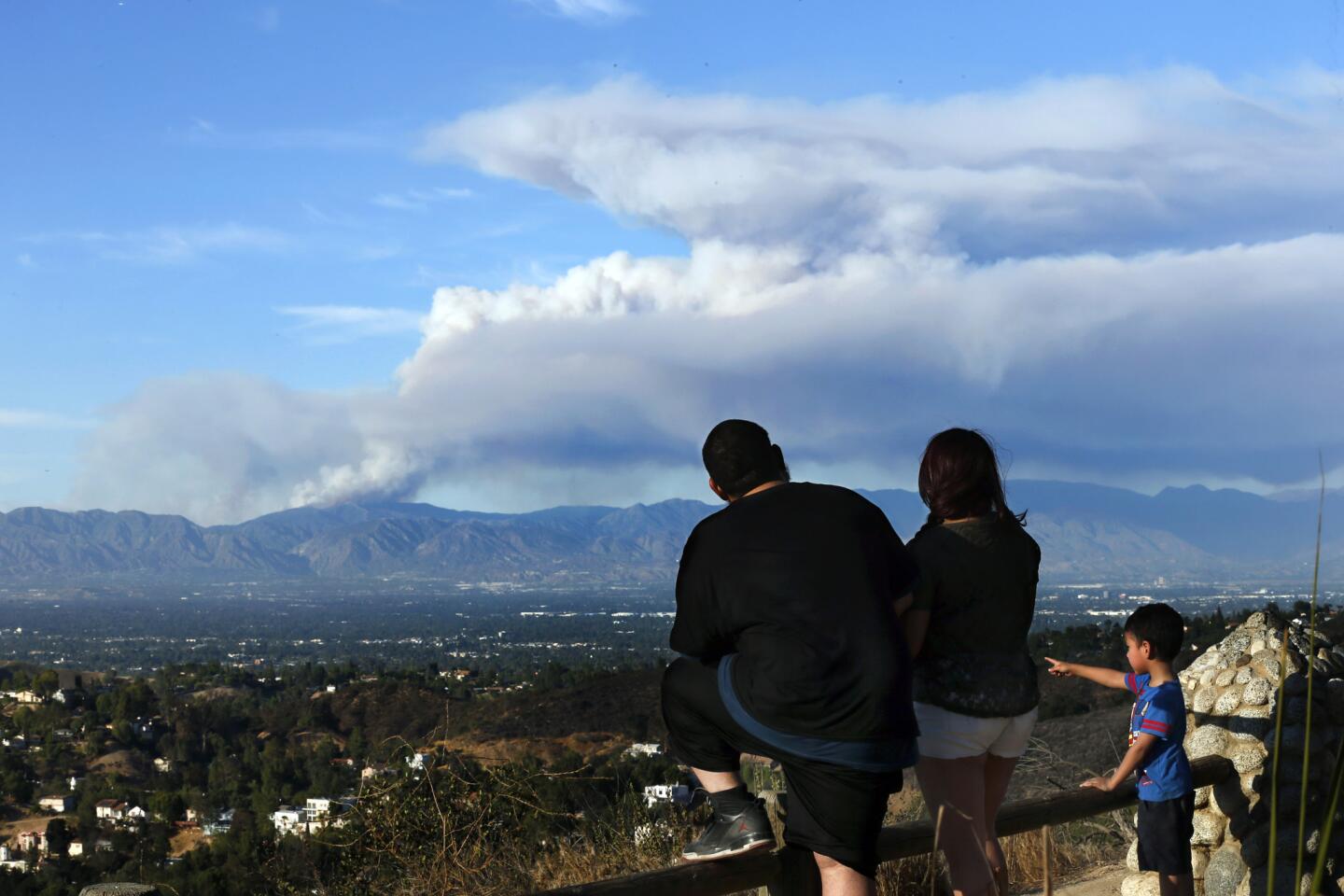Santa Clarita fire continues to burn out of control, explodes to more than 20,000 acres
- Share via
A wildfire in the Santa Clarita Valley area has grown to more than 20,000 acres, prompting new evacuations Saturday for hundreds of homes in canyon areas, authorities said.
The evacuation order was issued about 3:15 p.m. for residents in Sand and Placerita canyons, according to the Los Angeles County Fire Department.
At least 1,500 homes are threatened, fire officials said.
The Sand fire, which was reported about 2 p.m. Friday, is still only 10% contained, fire officials said.
The fire had largely burned in areas without many homes until late Saturday afternoon, when winds began to shift from the northwest to the southwest, driving them closer to the Sand Canyon neighborhood in Santa Clarita, county fire officials said.
“Those residents have to be watching the weather, watching the media, and have to be ready to evacuate,” John Tripp, a Los Angeles County Fire Department deputy chief, warned at a noon news conference.
The fire’s rapid growth has been fueled by “excessive heat, low humidity, extreme dry fuels that have not burned for several decades, and very rugged terrain,” said Los Angeles County Supervisor Michael Antonovich, who represents the area and attended the news conference.
Fanned by gusts of up to 40 mph, the fire burned more than 2,000 acres overnight.
Weather officials warned that Saturday would mark the peak of a regional heat wave. Forecasters said temperatures in the eastern Santa Clarita Valley area — where the fire is raging — hit 106 degrees. Red-flag warnings will remain in effect until Sunday.
The blaze doubled in size to 5,500 acres overnight, then mushroomed to more than 20,000 acres by 7 p.m. Saturday as the winds began shifting.
The strong winds and high temperatures had driven the flames into new pockets of the mountainous area Saturday, he said. Steep hillsides and deep ravines have prevented fire crews from heading into some areas to dig lines that could keep the fire from spreading further.
“Probably five years ago, based on our fire behavior, if we had a similar fire, we would have probably caught this fire at the ridge,” L.A. County Fire Chief Daryl Osby said. “Because this is the fifth year of an ongoing drought ... this fire has increased to 11,000 acres just overnight.’’
Meanwhile, a cloud of smoke blanketed much of the Los Angeles region Saturday morning, prompting the South Coast Air Quality Management District to issue a smoke advisory for much of the county that will remain in effect until midnight Sunday.
People are advised to avoid vigorous outdoor activity, and children, older adults and those with respiratory or heart disease should remain indoors. Residents also are being asked to keep their windows and doors closed or seek alternative shelter.
Wildfires increase the particulate matter in the air, and the increased concentration of those particles can cause irritation to the eyes, nose and throat, said Jo Kay Ghosh, SCAQMD’s health effects officer. People with asthma could experience wheezing and an increased risk of attacks. The poor air quality could also affect lung functions and people’s ability to take deep breaths.
Ash is a relatively large particle, but the fine, invisible particles are most dangerous because people can breathe them into their lungs, Ghosh said. Handkerchiefs and masks are likely to stop ash, but not the finer particles, she added.
If the air quality is “making you uncomfortable, do whatever you can do to remove yourself,” Ghosh said. “At the end of the day, people need to use their judgment. … For people who are sensitive, I certainly would encourage them to be more careful.”
For example, Ghosh said, she lives in the Glendale-La Crescenta area, but decided to run errands Saturday despite getting blanketed in ash. However she said she also told her children, “let’s not play outside today, let’s play inside.”
The Los Angeles County Department of Public Health has extended a heat alert through the weekend. It will remain in place throughout Saturday for the Los Angeles basin and the San Gabriel Valley and continue through Sunday in hotter regions of the county, including Pomona and the San Fernando, Antelope and Santa Clarita valleys.
“When temperatures are high, even a few hours of exertion may cause severe dehydration, heat cramps, heat exhaustion and heat stroke,” said Jeffrey Gunzenhauser, L.A. County’s interim health officer. “Extreme heat such as this is not just an inconvenience, it can be dangerous and even deadly.”
The fast-growing Sand fire, which originated on the eastern edge of the Santa Clarita Valley next to the 14 Freeway at Soledad Canyon Road, spread southeast into the northern flanks of the Angeles National Forest, a terrain of steep arroyos and dry chaparral.
Robbie Munroe, a meteorologist with the National Weather Service in Oxnard, said winds Saturday will be weaker than they were Friday night — gusts of only 25 mph compared with 40 mph — but still “gusty enough to cause problems” for firefighters.
Conditions remain very dry, with only 5% to 10% relative humidity in the area where the blaze is burning, Munroe said. The combination of low humidity, high temperatures and significant winds creates conditions that make fires more dangerous — more likely to spread quickly and more erratic, Munroe said.
“The heat and the dry air, for this time of year, aren’t that unusual,” he said Saturday. “If there’s anything that’s unusual with this event, it’s the extent of the gusty north winds. And anytime we do have red-flag warnings out, we expect critical fire conditions.”
Relief is on its way, though.
Forecasters expect “pretty significant cooling for coastal and valley areas” Sunday, Munroe said — as much as a 10-degree drop in temperatures — as the high pressure baking the region begins to weaken. The cool-down is expected to begin Saturday evening and continue overnight, though Munroe cautioned that some inland valleys could feel just as hot because humidity there is expected to increase.
On Friday, the fire forced Metrolink to stop its trains running between the Antelope and the San Fernando valleys. The California Highway Patrol partially closed north- and southbound lanes of the freeway for about an hour, and by twilight, the plume of smoke had drifted across the Los Angeles basin into Orange County, with ash falling as far east as Pasadena.
One firefighter suffered a minor injury fighting the fire, but no civilians have been hurt, Lincon said. More than 900 firefighting personnel were on the scene.
Officials have set up an evacuation center at Golden Valley High School in Santa Clarita; Wayside Jack Bones Equestrian Center and Hansen Dam in Sylmar are receiving large animals, fire officials said.
ALSO
D.A.’s office recuses itself from sibling murder case after prosecutor’s daughter is ID’d as victim
Massive search underway for missing hiker attempting Mountaineer’s Route on Mount Whitney
Former high school coach gets 2 years in prison for having sex with student
UPDATES:
7:00 p.m.: This post has been updated with new information about the number of acres burned.
4:20 p.m.: This article has been updated with new information about evacuations.
3:10 p.m.: This article was updated with statistics on threatened homes and more details about air quality.
11:25 a.m.: This article was updated with new information regarding the acreage consumed by the fire as well as its containment.
11 a.m.: This article was updated with new information and quotes from fire and weather officials.
10:05 a.m.: This article was updated with new information regarding a smoke advisory.
8:45 a.m.: This article was updated with new information about acreage burned and weather conditions.
10:20 p.m. This article was updated to reflect more acreage burned.
9:20 p.m.: This article was updated with more details about weather conditions and evacuations.
6:25 p.m. This article was updated with new information about the number of acres burned and the opening of an evacuation center.
5:30 p.m. This article was updated with new information about the evacuation zone and the closure of Metrolink area stations.
This article was originally published at 5:03 p.m.
More to Read
Sign up for Essential California
The most important California stories and recommendations in your inbox every morning.
You may occasionally receive promotional content from the Los Angeles Times.
